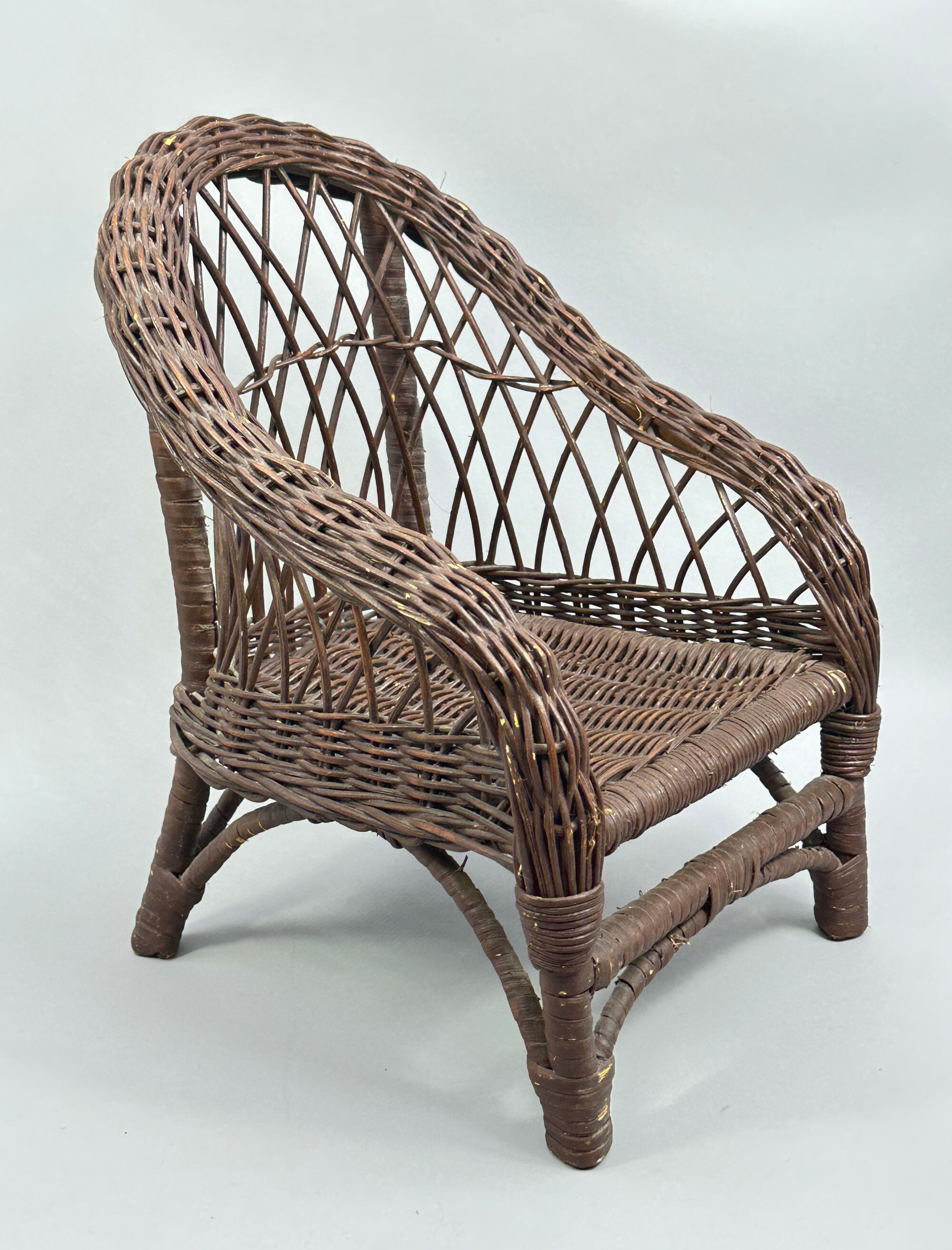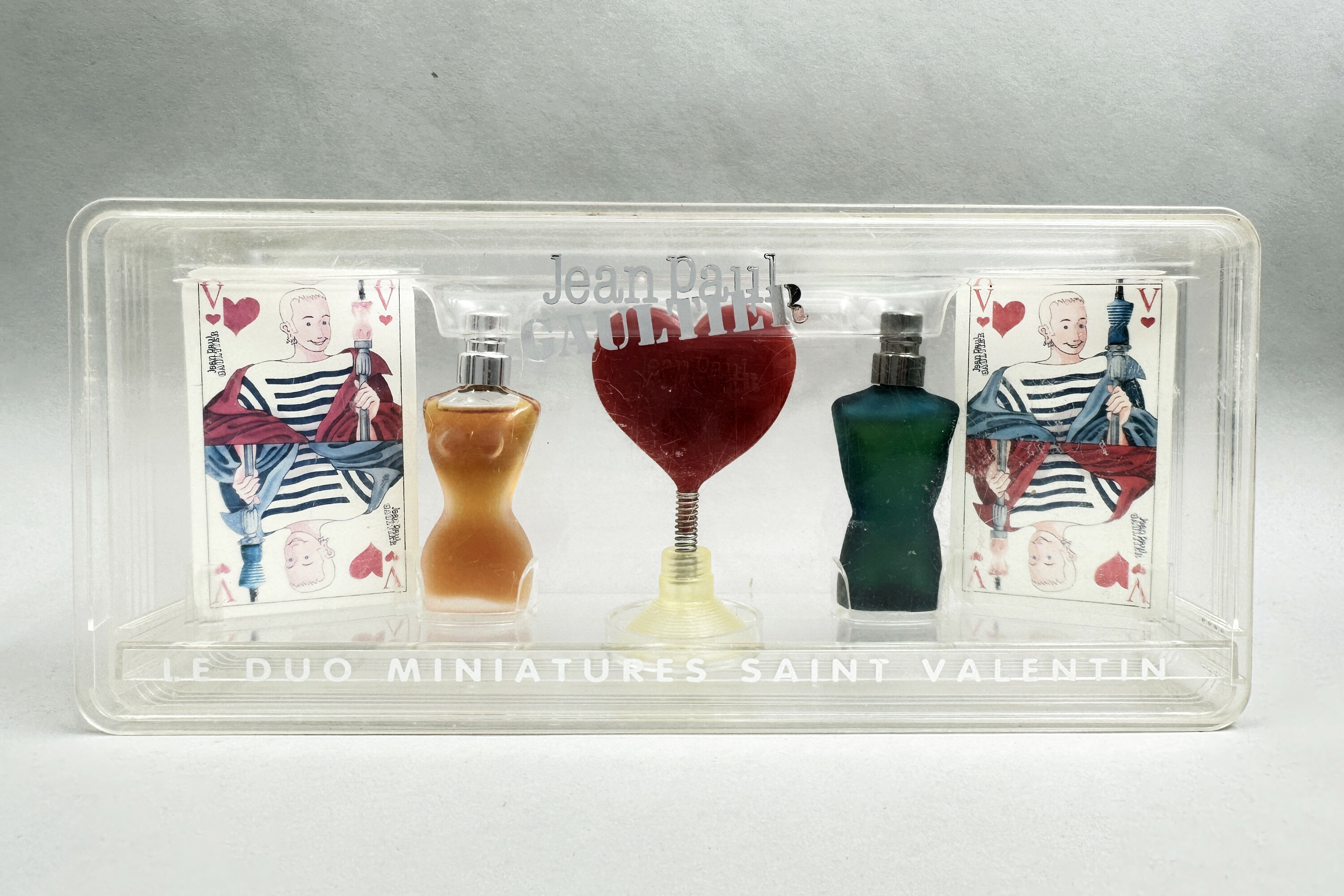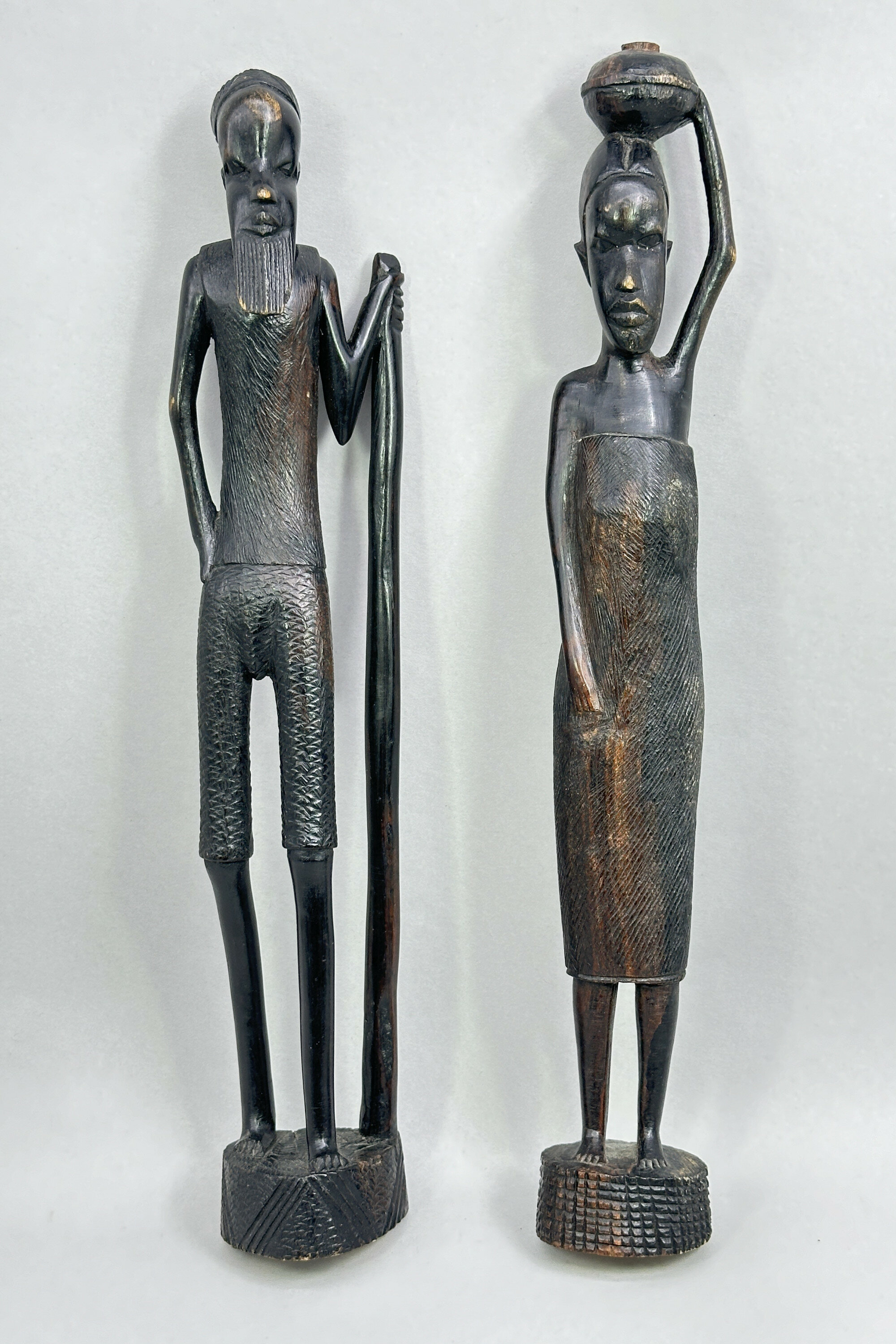
Pair of African Wood Figures of a Man and a Woman, probably mid C20th
Price: £25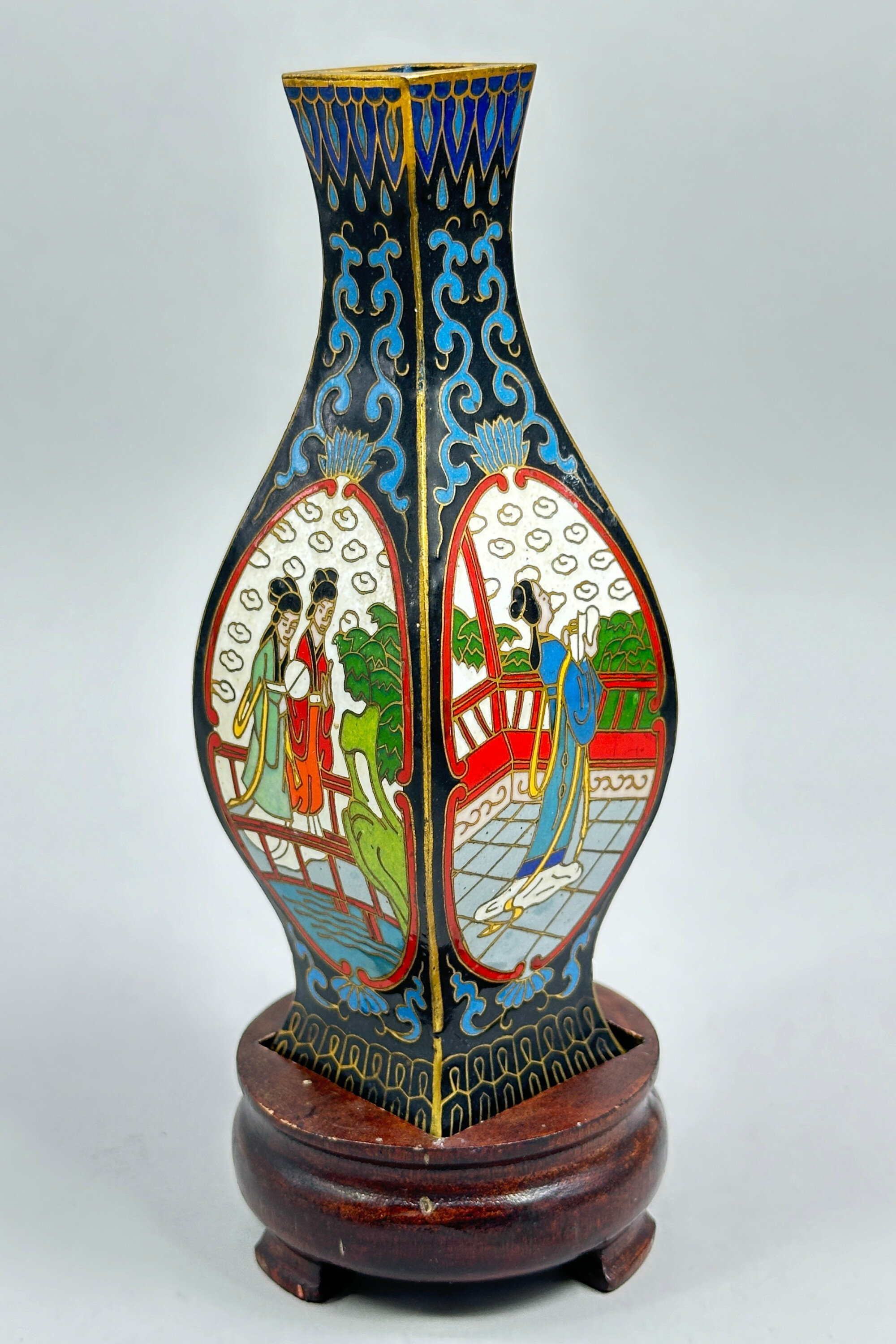
Chinese Cloisonné Square Vase on Stand, C20th
Price: £25The cloisonné technique, in which glass derived enamels were set in wire outlines (the so called ‘cloisons’ from the French word), was developed in China in the early Ming dynasty (1368-1644) and then used throughout, right up until the C20th, indeed pieces are still produced today. The style of enamelling here with fairly bold outlines to the decoration and the use of bright enamel colours suggests a dating here to the mid twentieth century which corresponds to the probable date of the accompanying wood stand. Perhaps intended as a desk ornament or possibly a flower vase, this piece could certainly find a home in a contemporary setting.

Monumental Mille Fiore glass bead necklace c1970
Price: £150
Chinese style Vase and Cover decorated with ladies and courtiers in a garden scene, C20th
Price: £55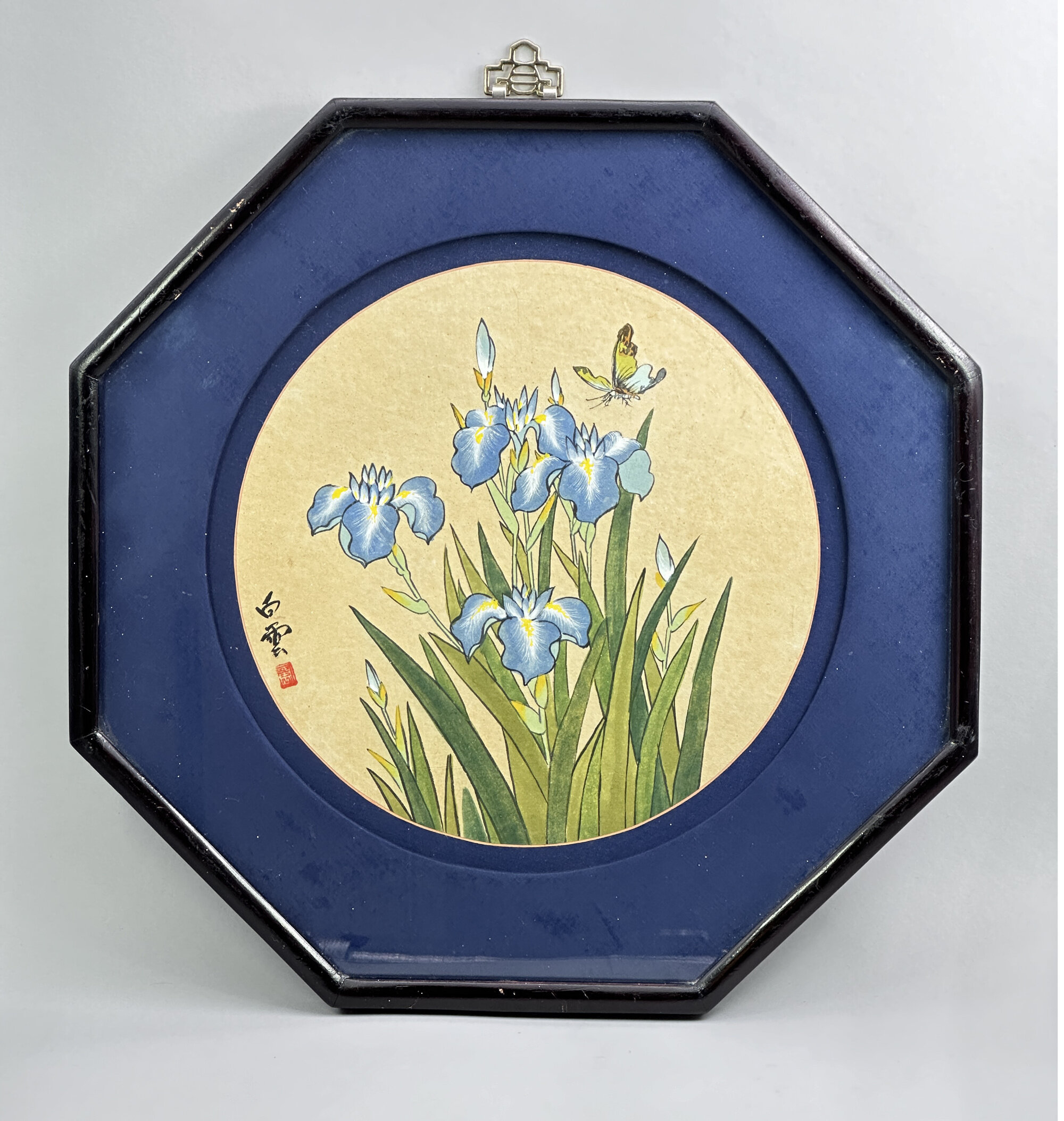
Japanese Gouache Painting of Flowering Lotus, signed and framed, C20th
Price: £45
Oil Painting of a landscape scene with trees, framed, C20th
Estimate: £30 – 40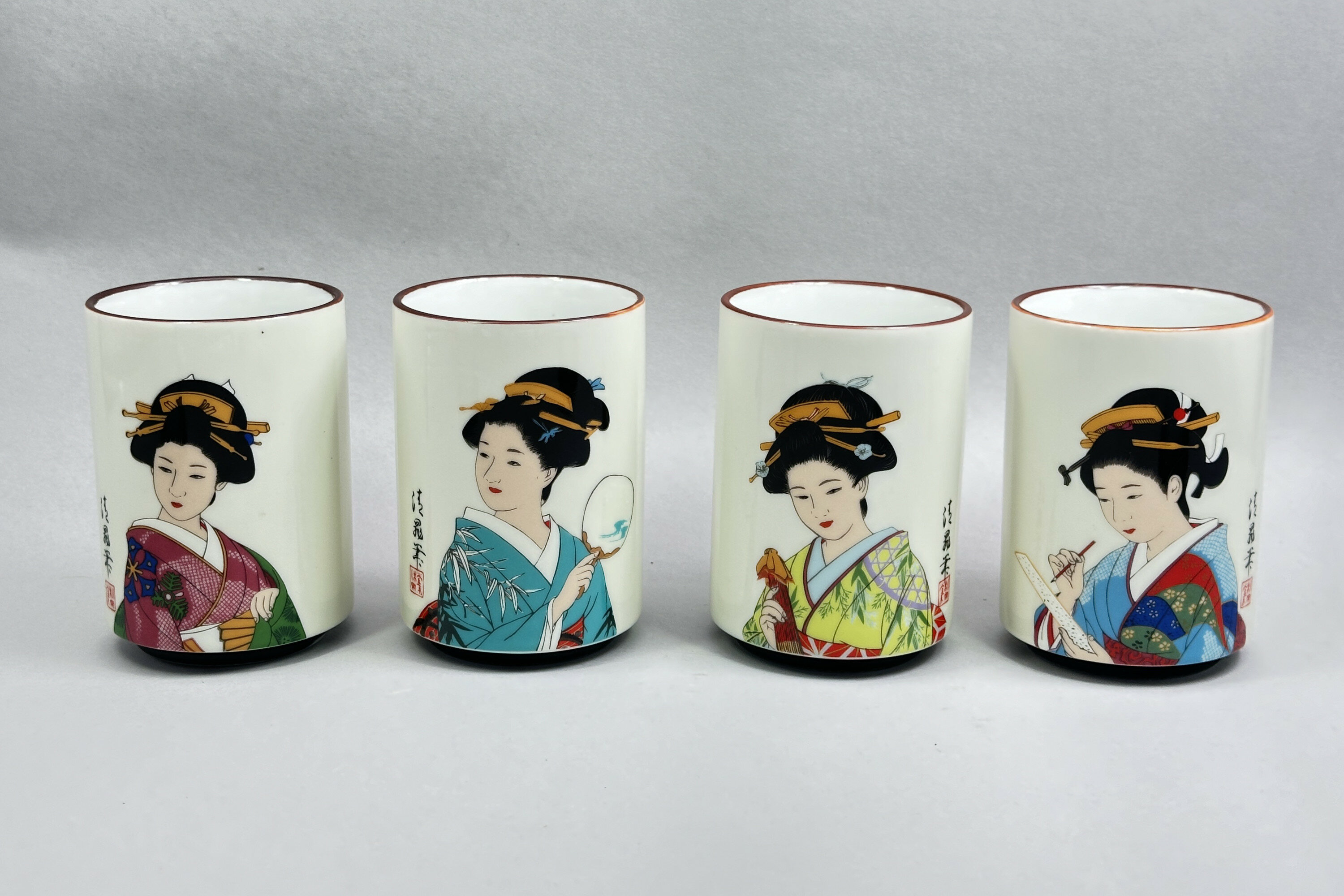
Set of Four Japanese Ceramic Beakers decorated Geisha, late C20th
Price: £40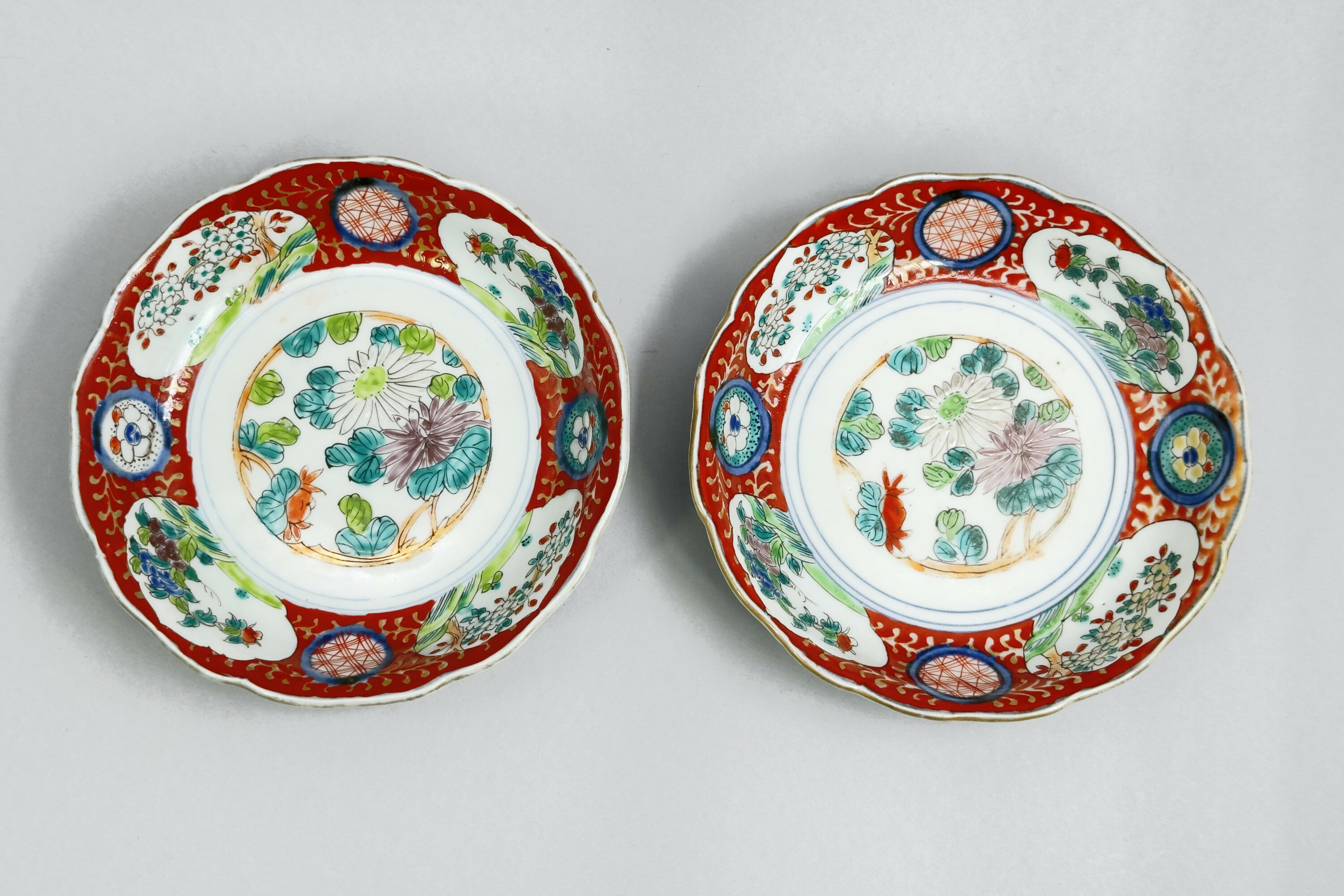
Pair of Japanese Arita Shallow Bowls circa 1880
Price: £75The town of Arita in the former Hizen Province, northwestern Kyūshū island, was a major centre for the production of porcelains in Japan. Best known for blue and white pieces it also produced polychrome wares as well, including the familiar imari colourings. While similar to Imari, the wider palette of colours used here is usually termed ‘Arita’ and the decorative appeal of the style is clear. These bowls probably come from an original set of five and their quality is much above average. Dating is to the Meiji era (1868 - 1912) probably around 1880.
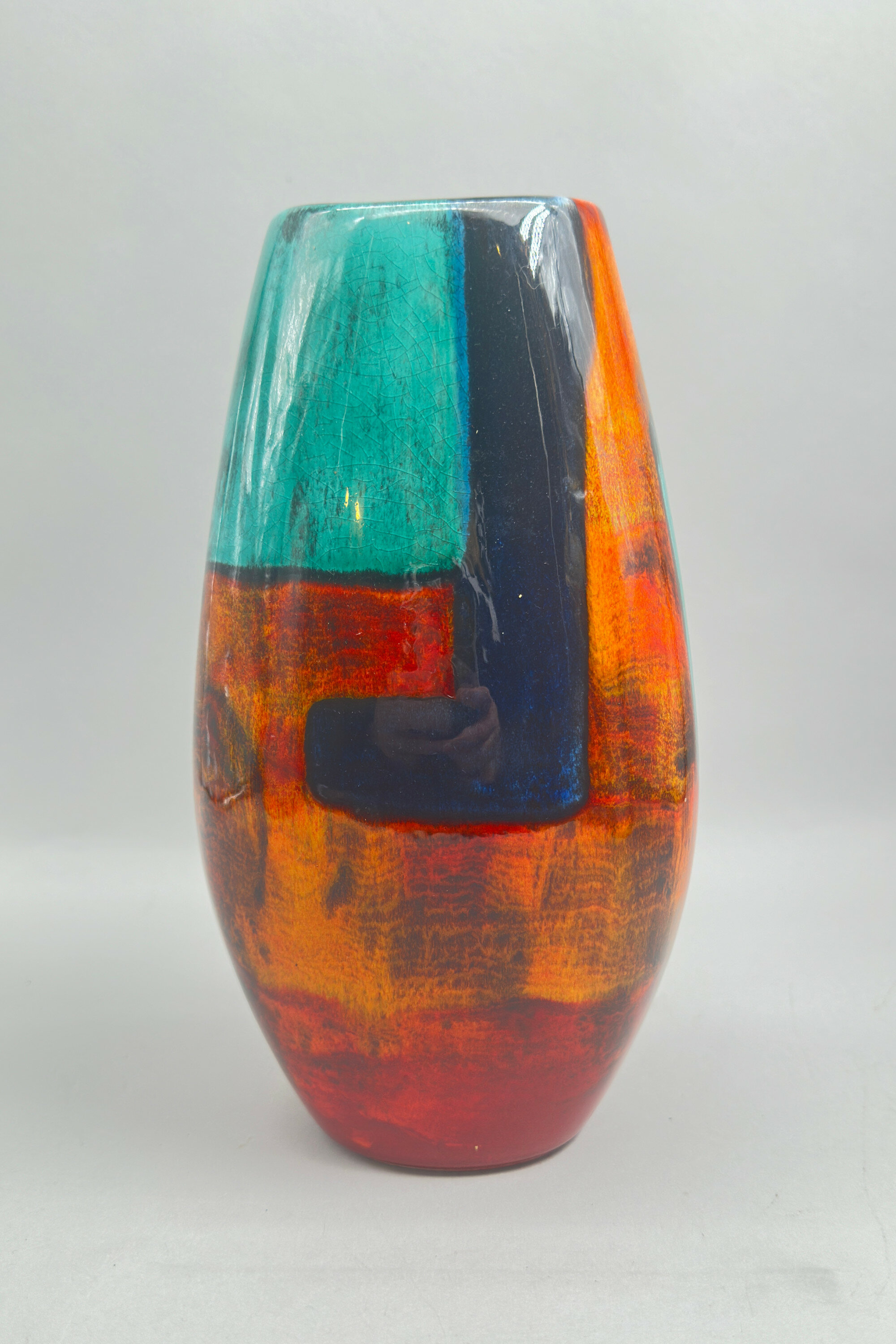
Poole Pottery Gemstones Vase, late C20th
Price: £75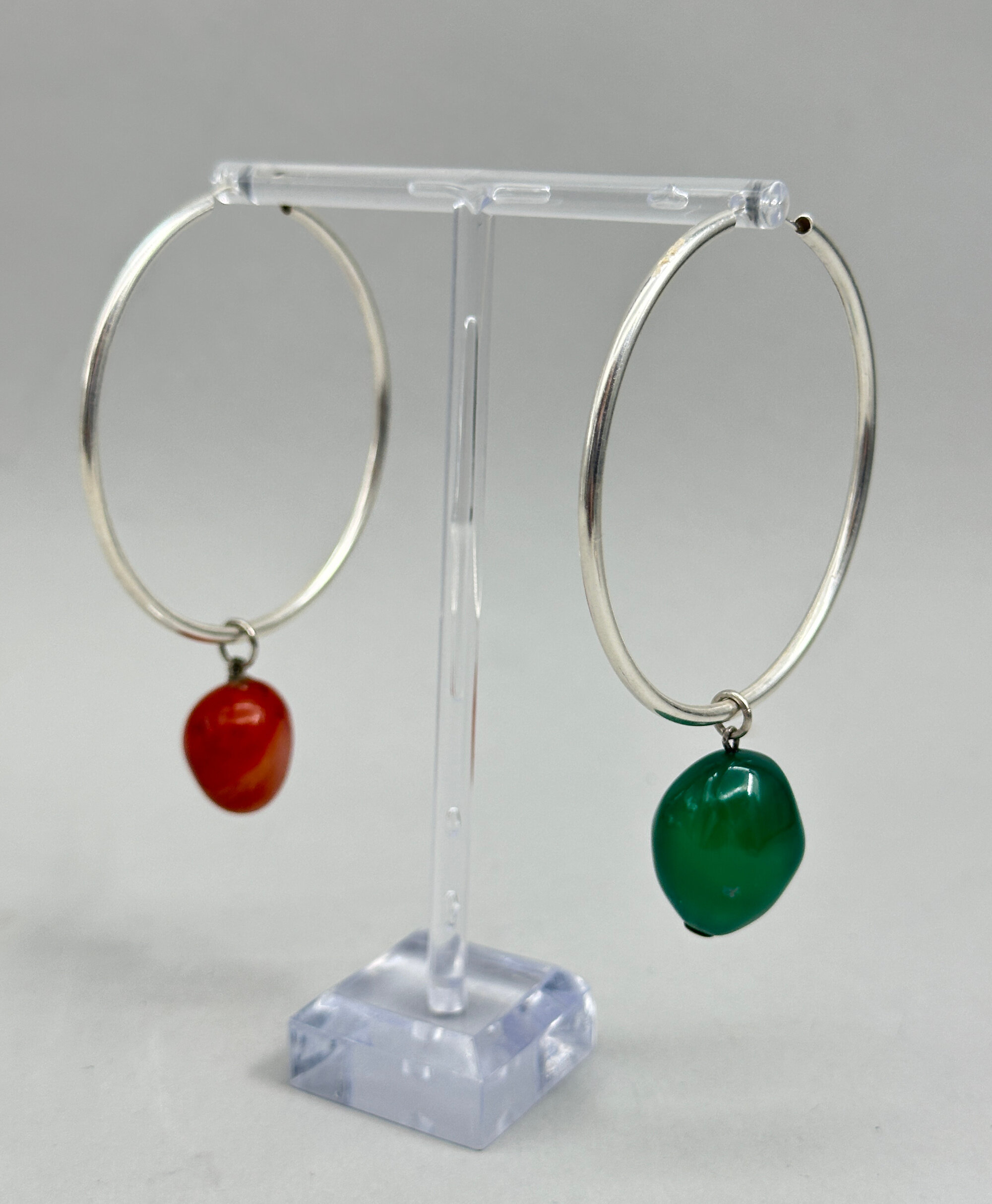
Pair of large hoop earrings with stone drops
Price: £45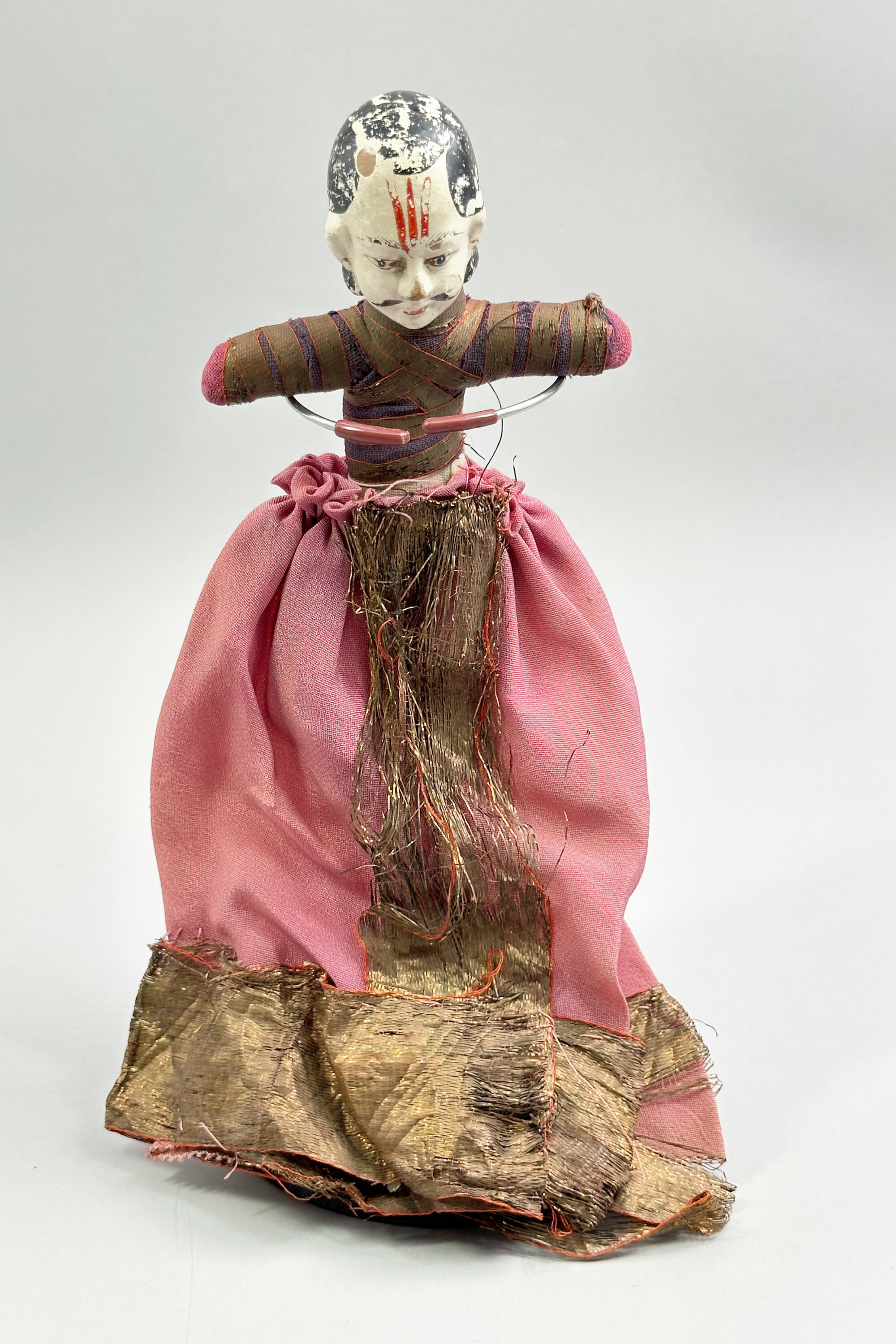
Burmese doll figure of a Priest, C20th
Price: £45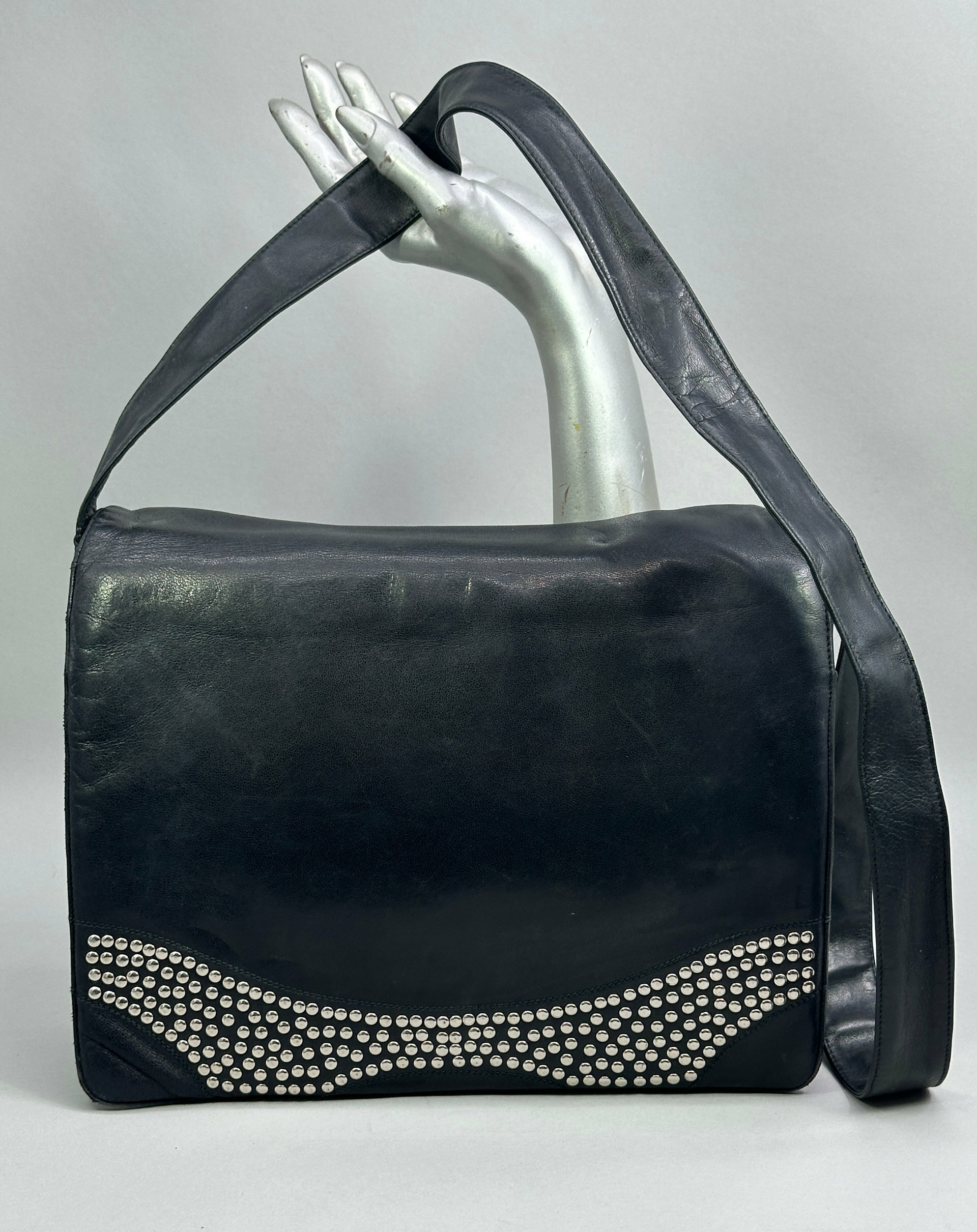
Maud Frizon Handbag c2000
Price: £150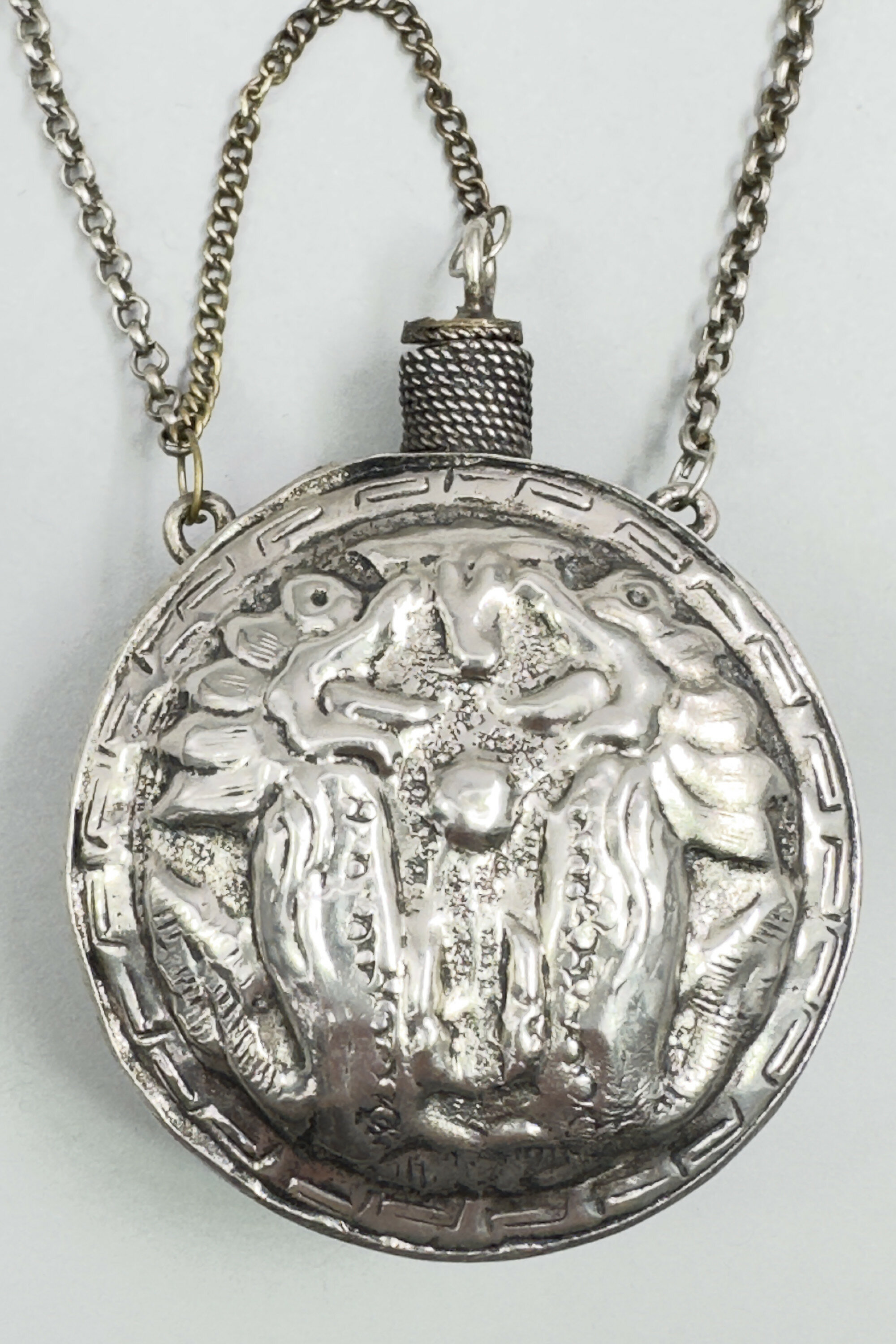
Burmese silver plated Scent Bottle on a chain c1880
Price: £45
Chinese aventurine lariat necklace
Price: £20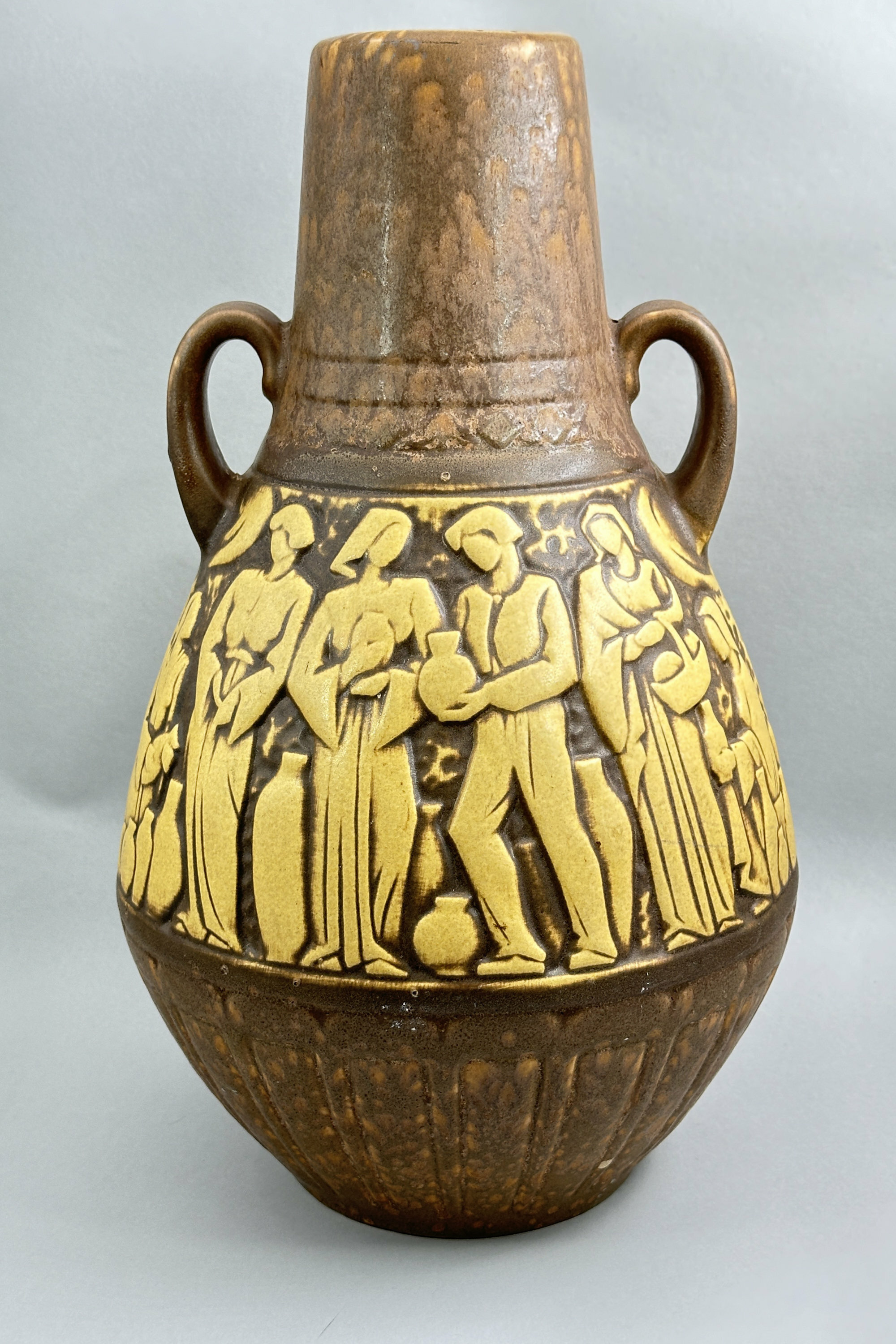
West German Scheurich Vase, Market Scene Pattern, 225-46, 1970s
Price: £150In 1954, Alois Scheurich founded the Scheurich Keramik factory, having been in partnership before then in the firm ‘Scheurich and Greulich’ (S&G) since 1927. While founded later than many of its competitors, Scheurich grew to become the principal exporter of West German ceramics through until the 1980s and beyond, making vases in a wide variety of shapes and designs. Made in the 1970s, this vase has a retrospective feel recalling Soviet designs from the 1920s and 1930s. The figures seem to be grouped in a stylised market scene with various pitchers containing perhaps wine or oil. The symbolism is unclear unless it refers to the vase itself which could be regarded as recalling the form of the Greek amphora. But whatever the ‘meaning’ we have an imposing and unusual decorative item here which stands rather apart from many of the other pieces produced by its manufacturer.
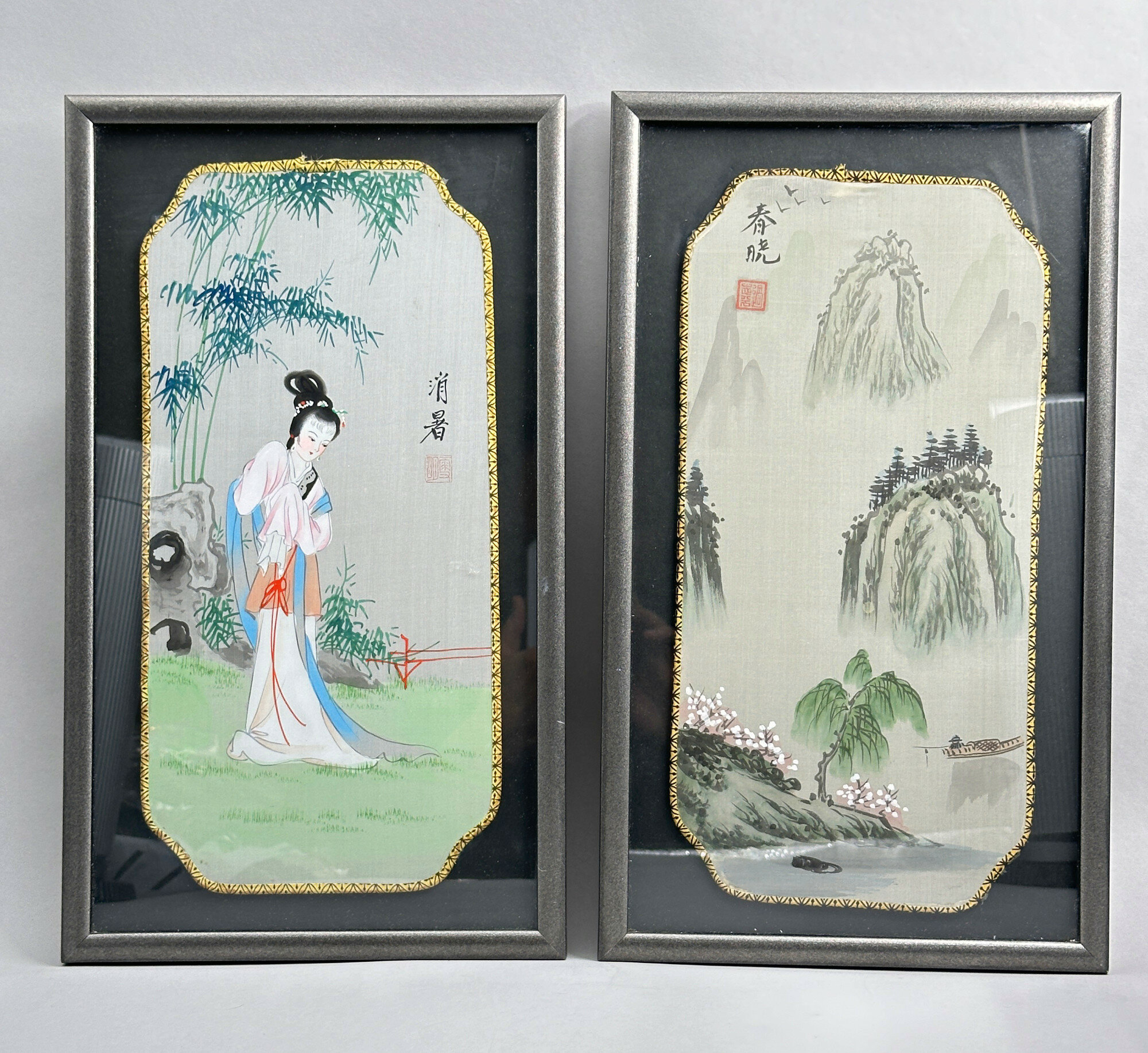
Pair of Chinese Paintings on Silk, framed, C20th
Price: £45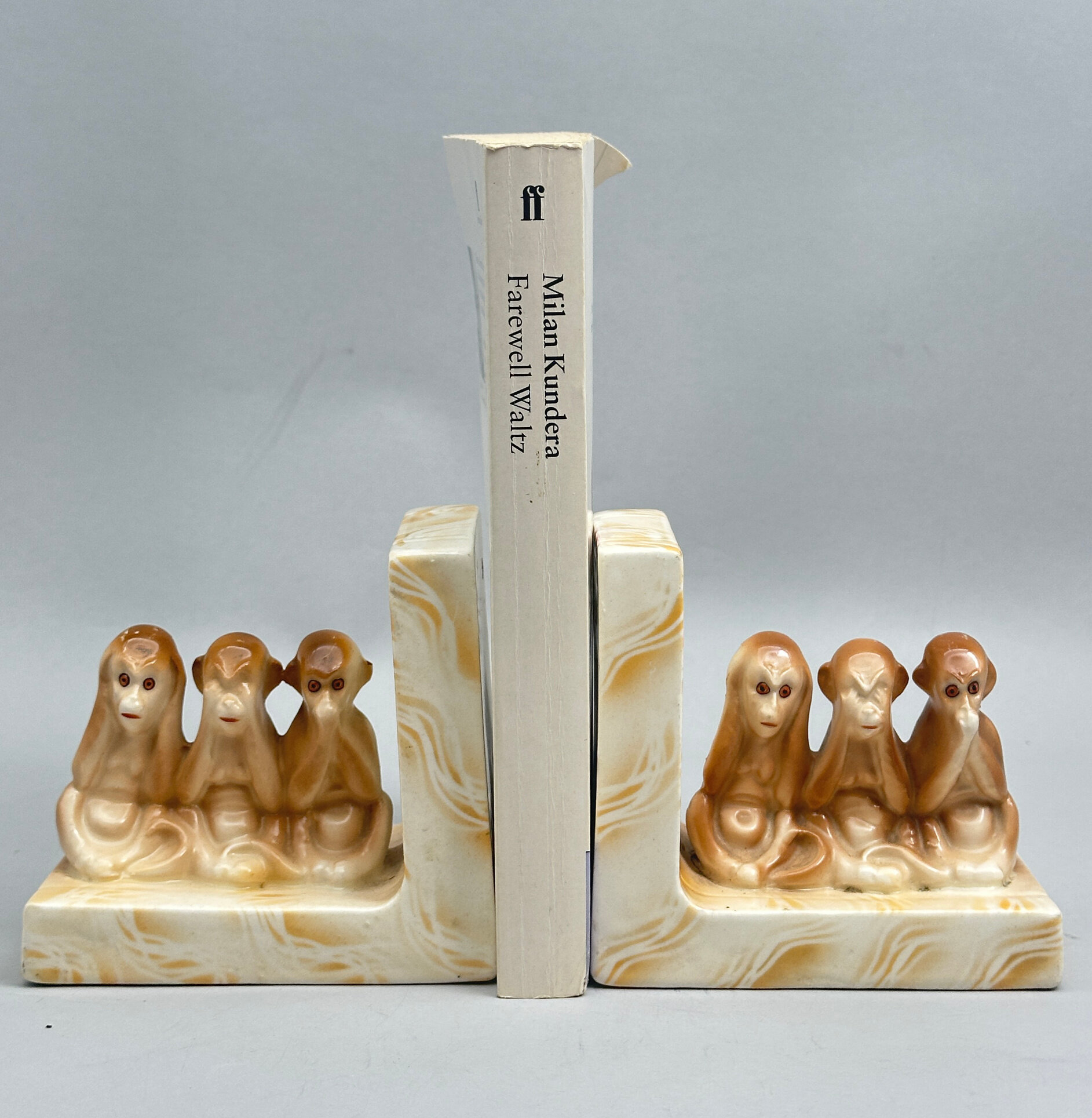
Pair of ceramic Bookends, the three wise monkeys, Czech second half C20th
Price: £30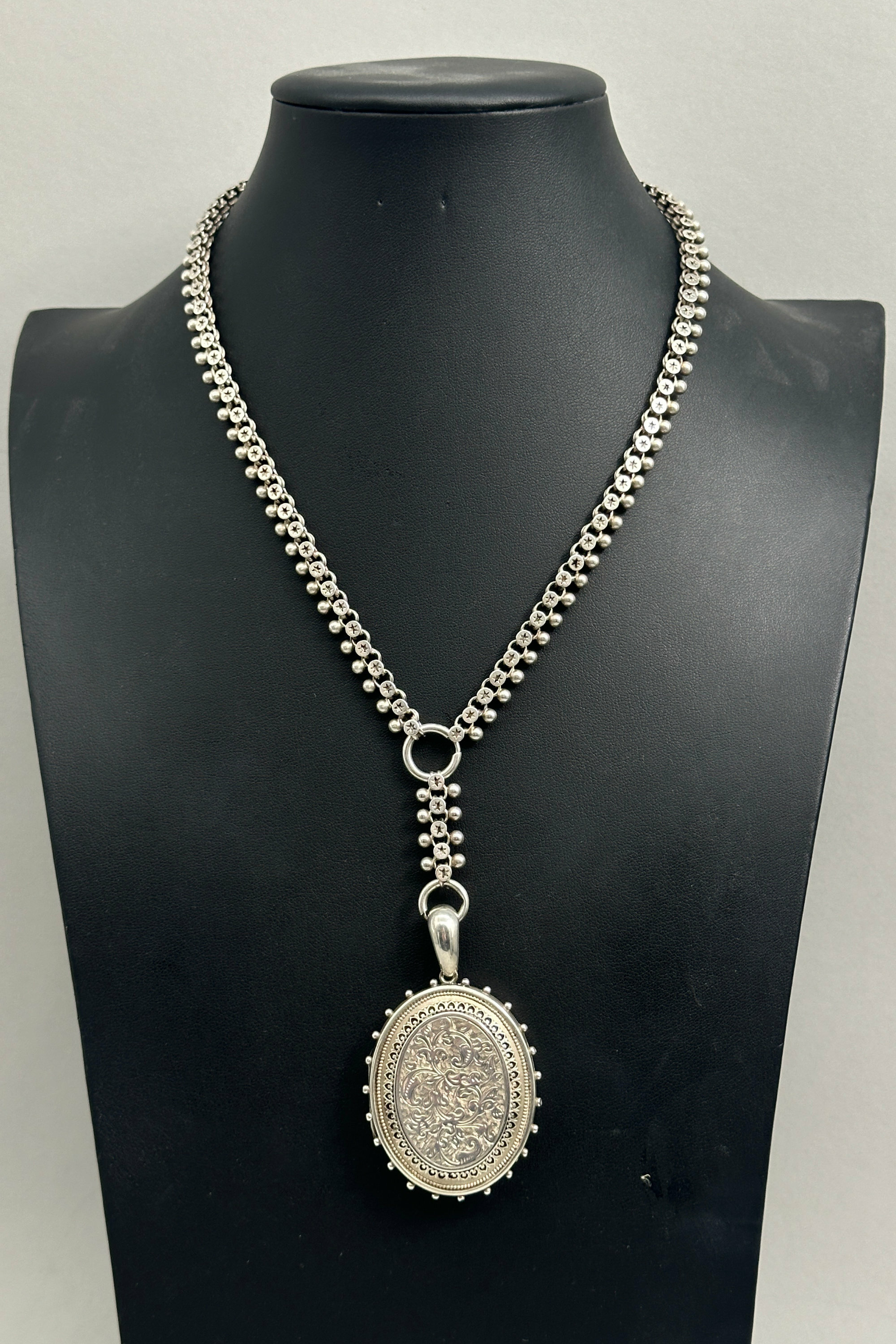
Victorian book chain with locket c1900
Price: £350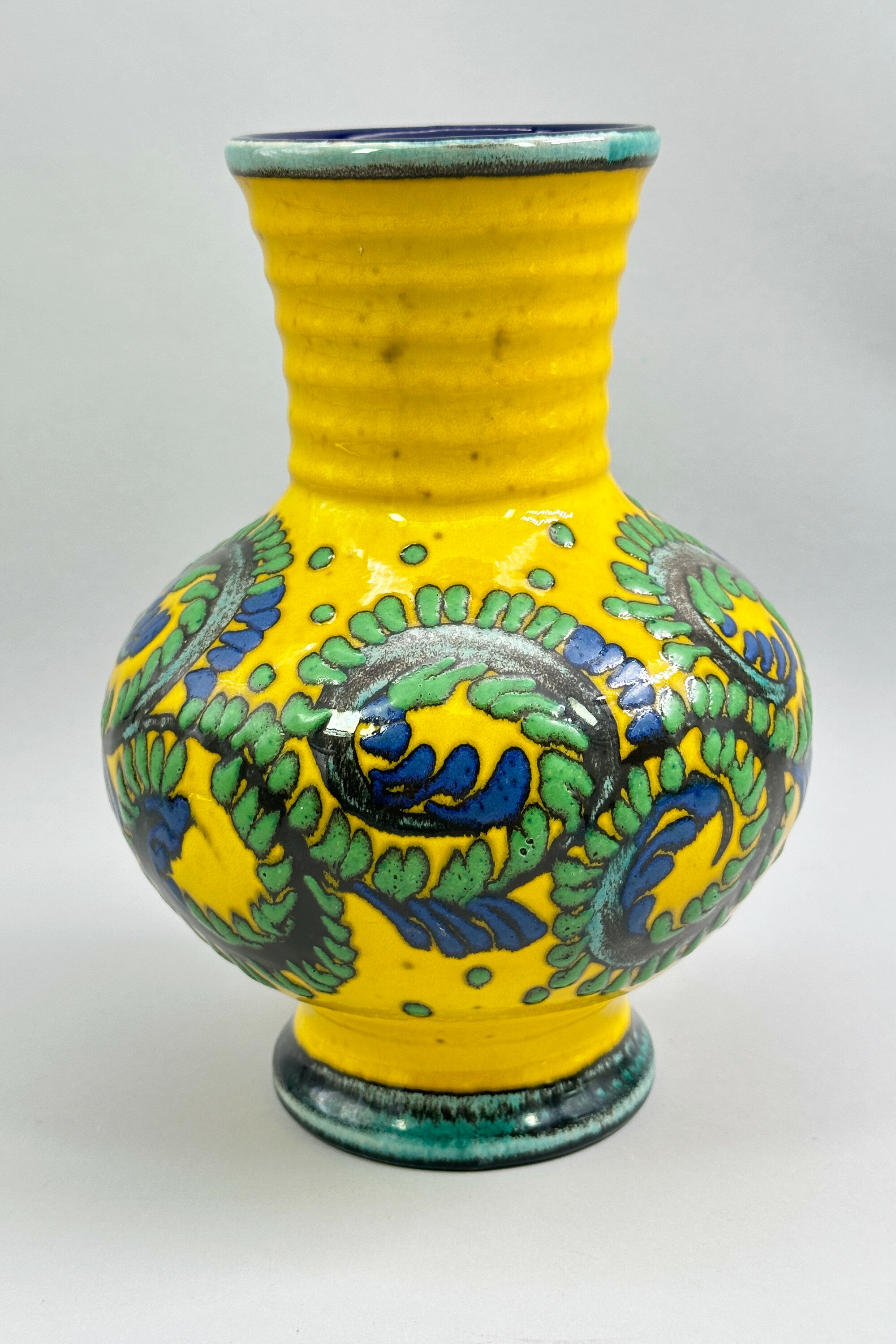
West German Ceramic Vase, Marei, 1970s
Price: £45While not stamped with a maker's mark, vases of this type are attributed to the West German Ceramics factory Marei which produced pieces from 1949 to 2016. Marei was the commonly used abbreviation for the firm's name which was Majolikafabrik Rheinbach Jean Fuss and Sohn. The pieces are distinguished by the use of a reddish clay but this was sometimes more brown or dark brown depending on the suppliers used. Marks are usually impressed into the base although these are often just pattern numbers, as here. Many pieces are unmarked and some are stamped 'MADE IN GERMANY' or 'W.GERMANY'. The pattern number here is '7104'and is found on similar pieces with the same shape but different decoration. This vase was probably made in the 1970s and is typical of the striking designs the firm produced.
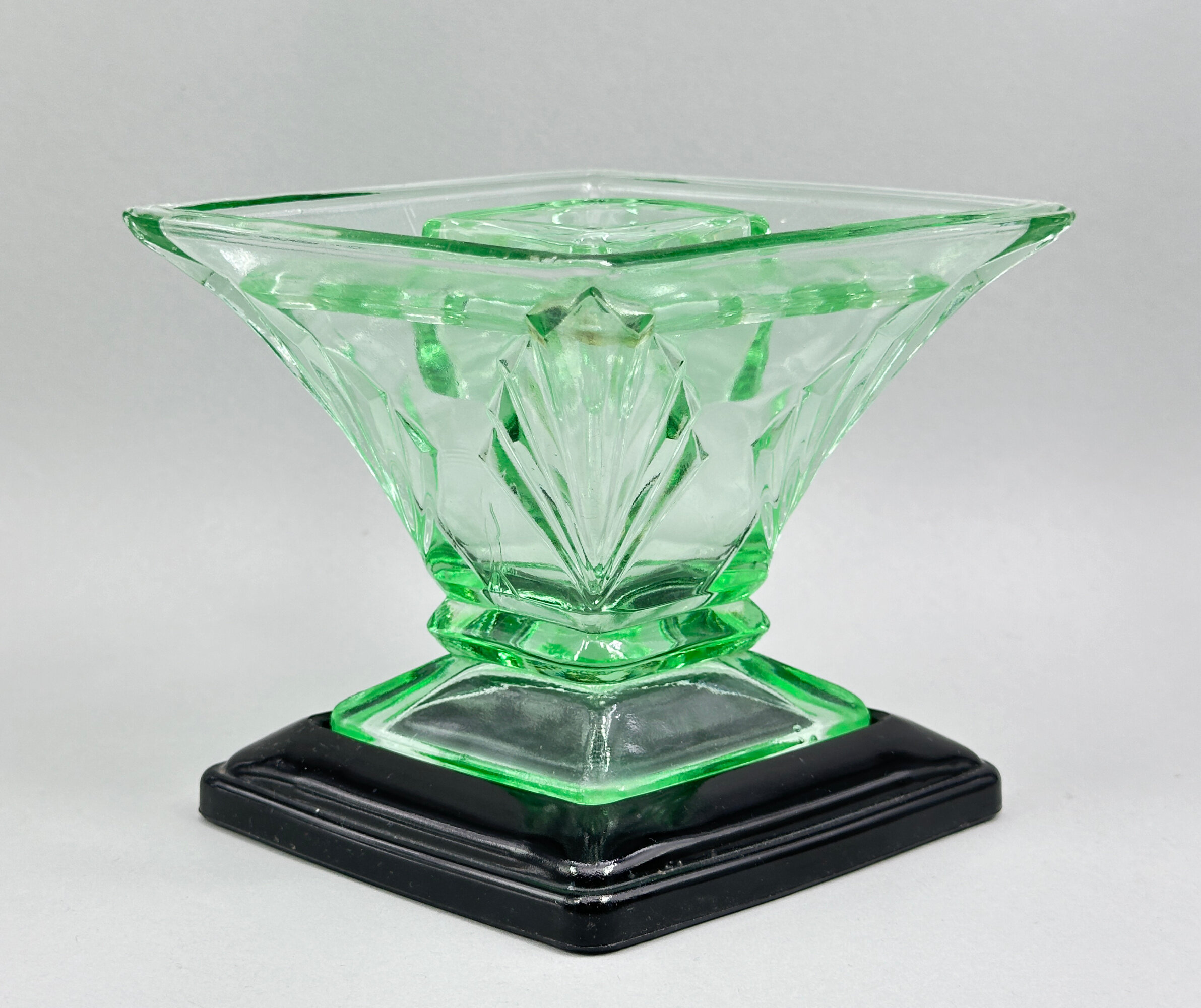
Art Deco Flower Vase, Frog and Stand, Bagley Glass, Spinette Range, 1930s
Price: £45Bagley Glass was established in Knottingly, England (south east of Leeds) in 1871. Bottle makers at first they branched out in 1912 and opened a department 'The Crystal Glass company' which made crystal and pressed glass. But it was for the latter that Bagley were to become famous and they became the biggest manufacturer of pressed glass in England in the years before and after the war. Many of their designs were influenced by the Art Nouveau styles and this flower vase, unusually presented complete with its frog and stand, is a classic example of their range.
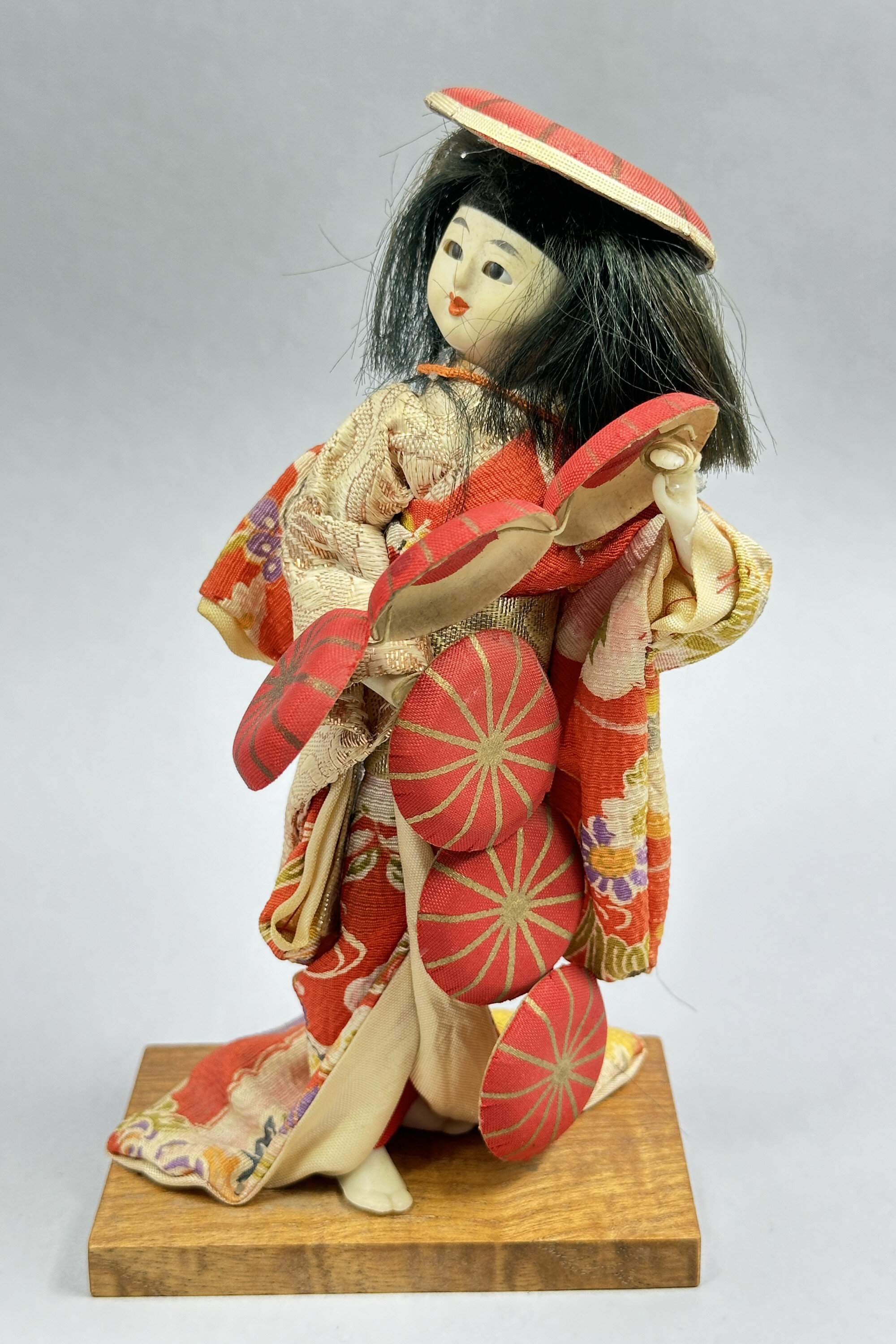
Vintage Japanese Doll of a Hat Seller, C20th
Price: £25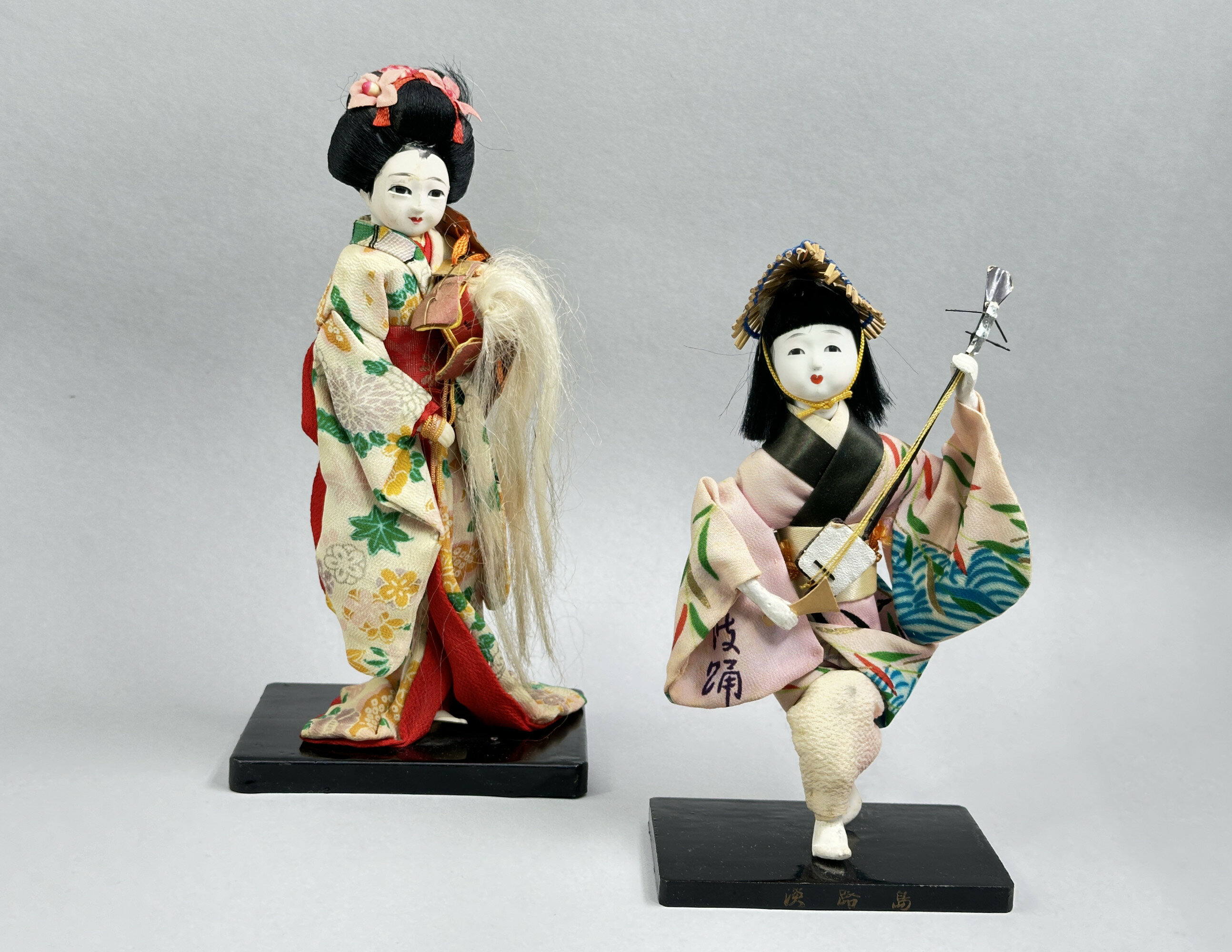
Two Vintage Japanese Geisha Dolls, C20th
Price: £25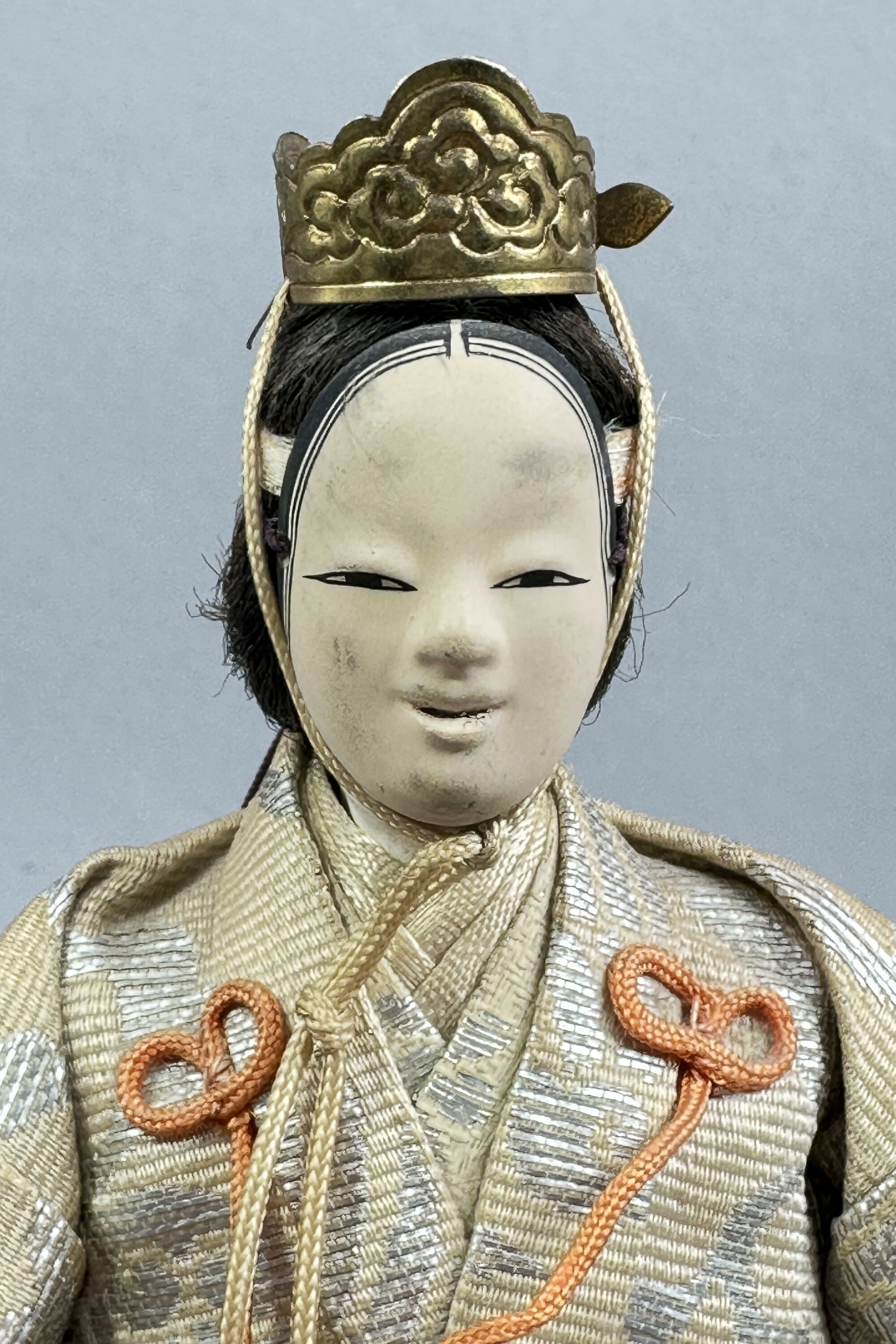
Japanese Noh Figure Doll of a Lady, Showa Period (1926-1989)
Price: £55Dolls such as these were made for display, sometimes at the special ‘Doll’s Day’ or ‘Girls Day’ festival held annually on the third of March and termed ‘Hinamatsuri’. The elaborate dress is sometimes known as ‘Hagoromo’ (‘feathered’) and the mask with its fixed expression derives from the well known ‘Noh theatre’, a major form of Japanese musical drama created in the fourteenth century which combines dance, music and song and is still performed today. The actors are all male and play the female roles wearing a lady’s mask.
The craftsmanship of this piece is self evident and it was most likely made in the second half of the C20th. It can stand equally well on its own or as part of a wider collection and would be a desirable acquisition either way.

Davidson Glass Topaz Briar Table Centrepiece, 1930s
Price: £45George Davidson founded the Teams Flint Glass Works in 1867, which later became known as George Davidson & Co. In the 1880s the company began producing pressed glass tableware in a variety of shapes and by the 1920s their designs began to reflect the new Art Deco trends. The firm continued production until the 1980s, closing in 1987. Some of their catalogues still exist and one from the early 1930s shows a piece very similar to this one (see image 11). The colour is known as ‘Topaz Briar’ and the swirling effects resemble other pieces in their ‘cloud glass’ range, a pattern for which the firm was famous.
The colourings and small size of this piece make it an unusual find amongst the Davidson wares which can be seen today and the presence of all three elements (perfect and complete) make it a desirable addition to a collection of twentieth century pressed glass.
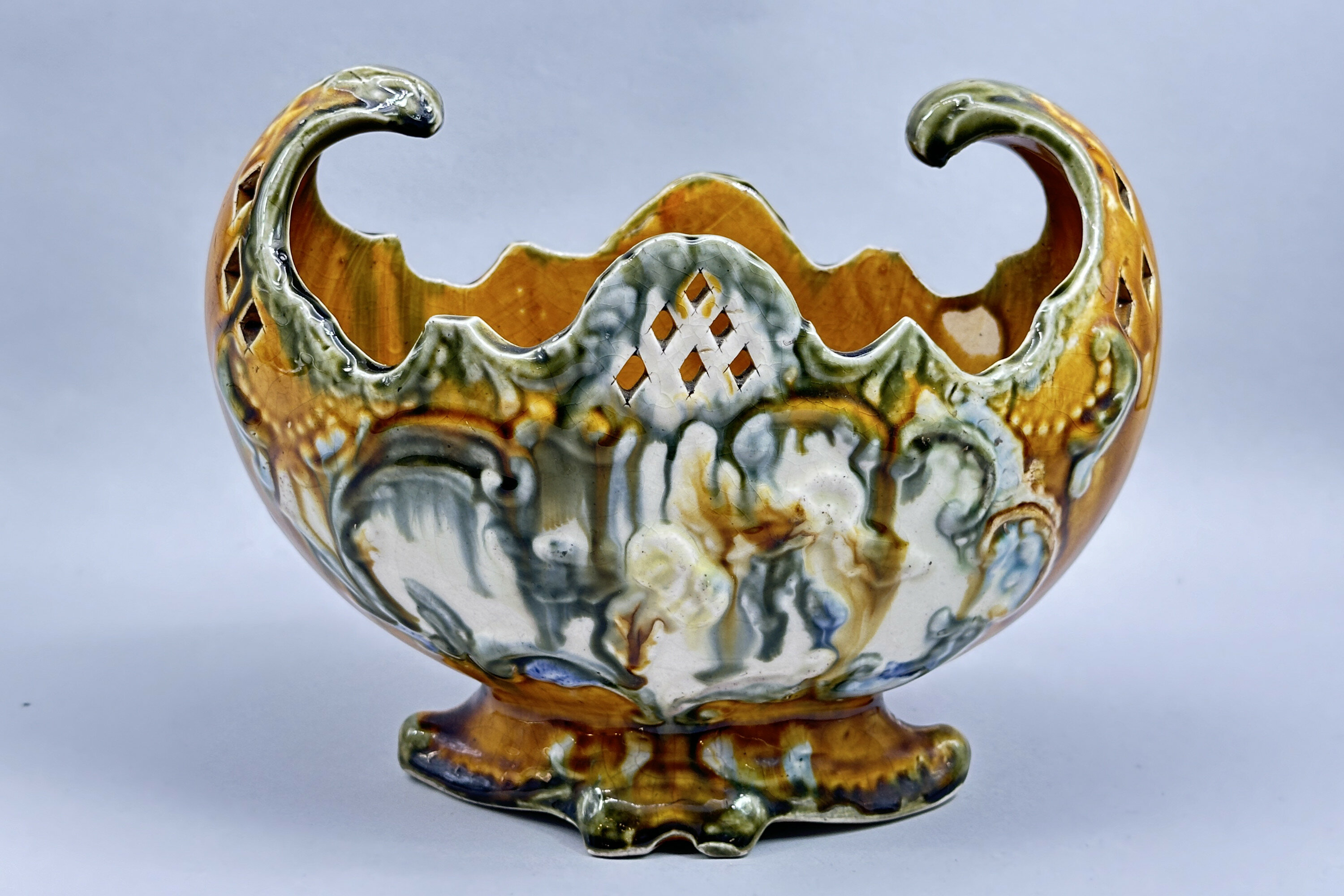
Majolica Style Jardiniere, French, circa 1900
Price: £45This is a French interpretation of the ‘Majolica’ style which became so popular, particularly in England in the second half of the nineteenth century. A very distant relation of the tin glazed Italian and Spanish wares which share the name, nineteenth century majolica employed a wide variety of brightly coloured glazes applied to elaborate forms some of which had a slightly ‘classical’ feel and some a reflection of ‘rococo’ designs. The paste and glazes here suggest France, which produced various pieces in the ‘majolica’ style and dating is probably to the end of the nineteenth century.
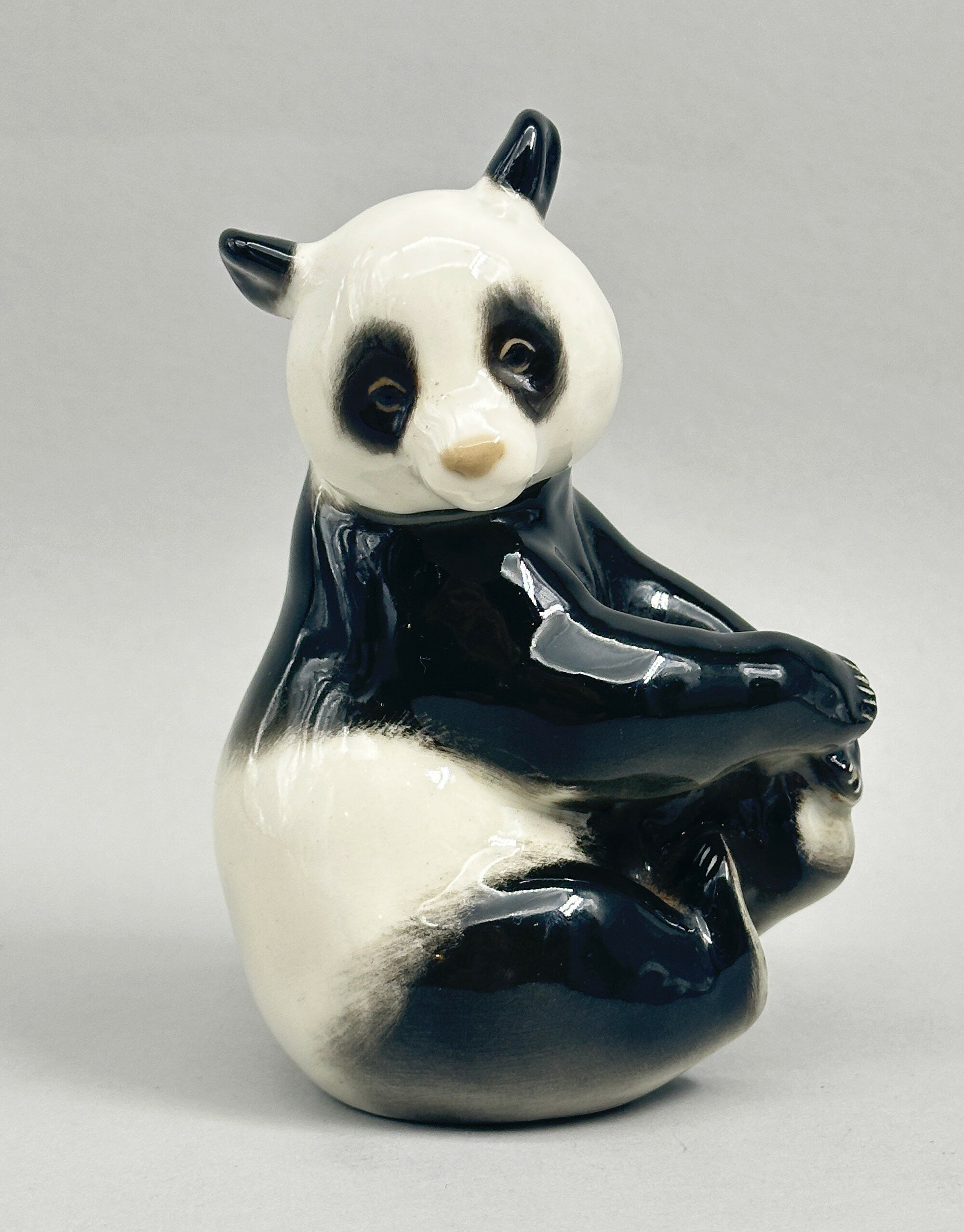
Porcelain Figure of a seated Panda, Lomonosov, USSR late C20th
Price: £25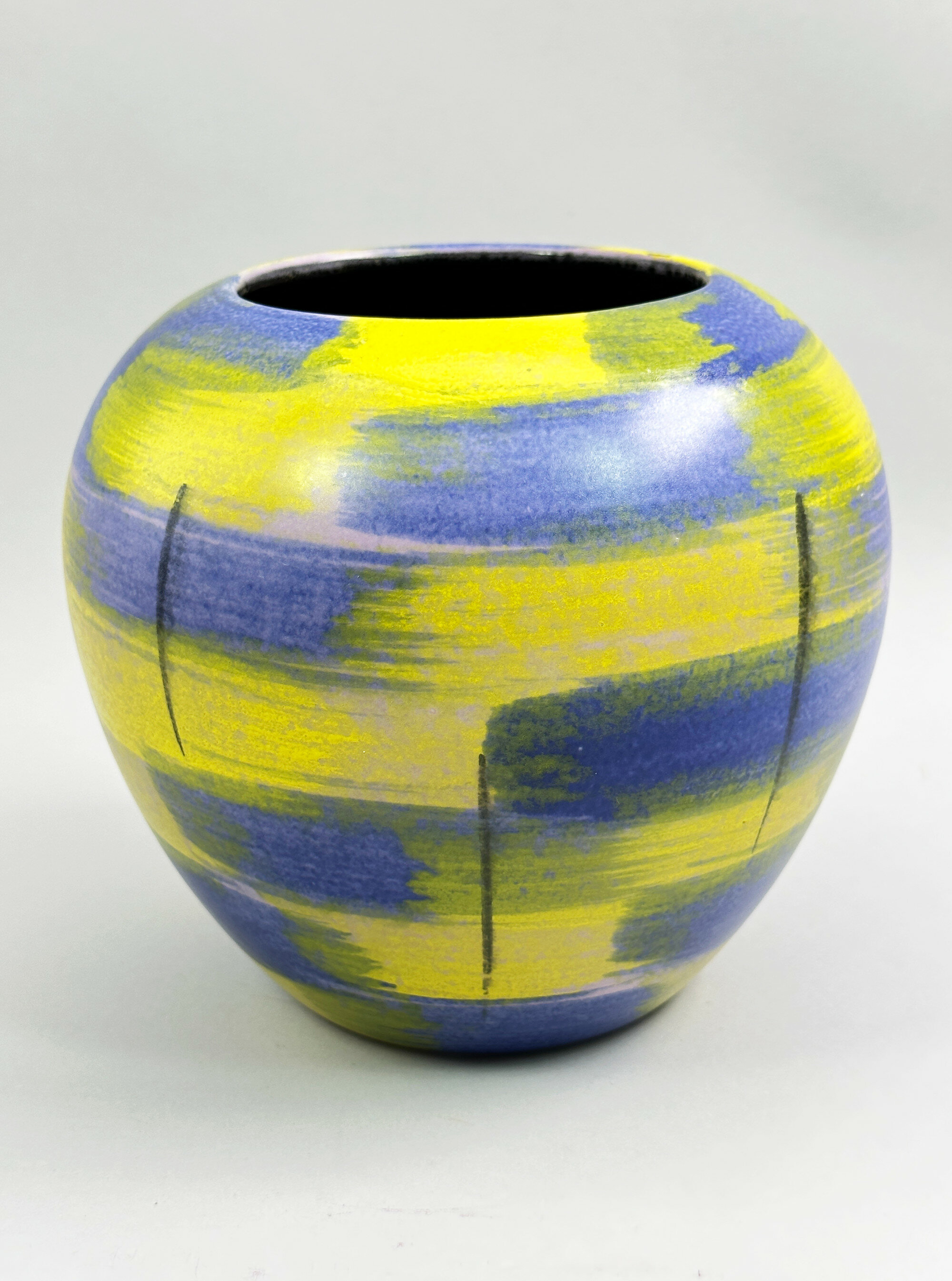
East German Ceramic Vase, VEB Haldensleben, 1950s
Price: £35The factory mark, a shallow dish superimposed over the letter 'H' inside a circle, is that of the East German pottery VEB Haldensleben. VEB stands for 'Volkseigener Betrieb', meaning a people-owned enterprise and used in relationship to the state owned workplaces in the GDR. Haldensleben is a town in Saxony-Anhalt, Germany and a ceramics factory was created there in 1945 with the nationalization of the Carstens Uffrecht plant that followed the division of Germany at the end of WWII. Halsdenleben focused primarily on the manufacture of vases. Its output tended to be of superior quality and employed more restrained glazes than those used by its West German counterparts. Upon the reunifucation of Germany in 1990, the factory was returned to its original owners, the Carstens family. The pattern number here is found on other pieces with the same shape but the abstract decoration used is quite individual and evocative of 1950s and early 1960s designs.

Oriental Style Vase, West German Pottery, possibly Scheurich, late C20th
Price: £45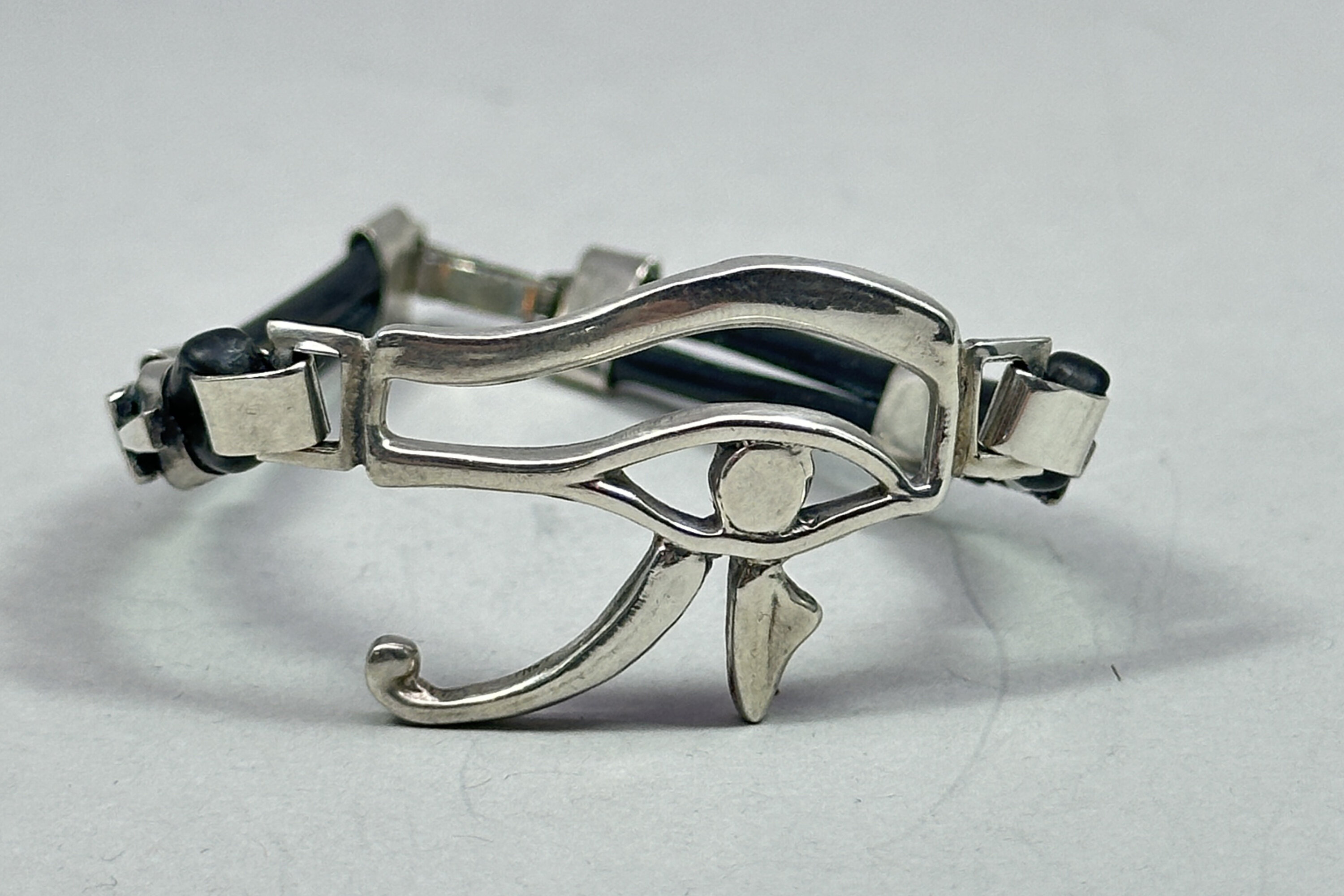
Egyptian Eye of Horus braclet c20th
Price: £25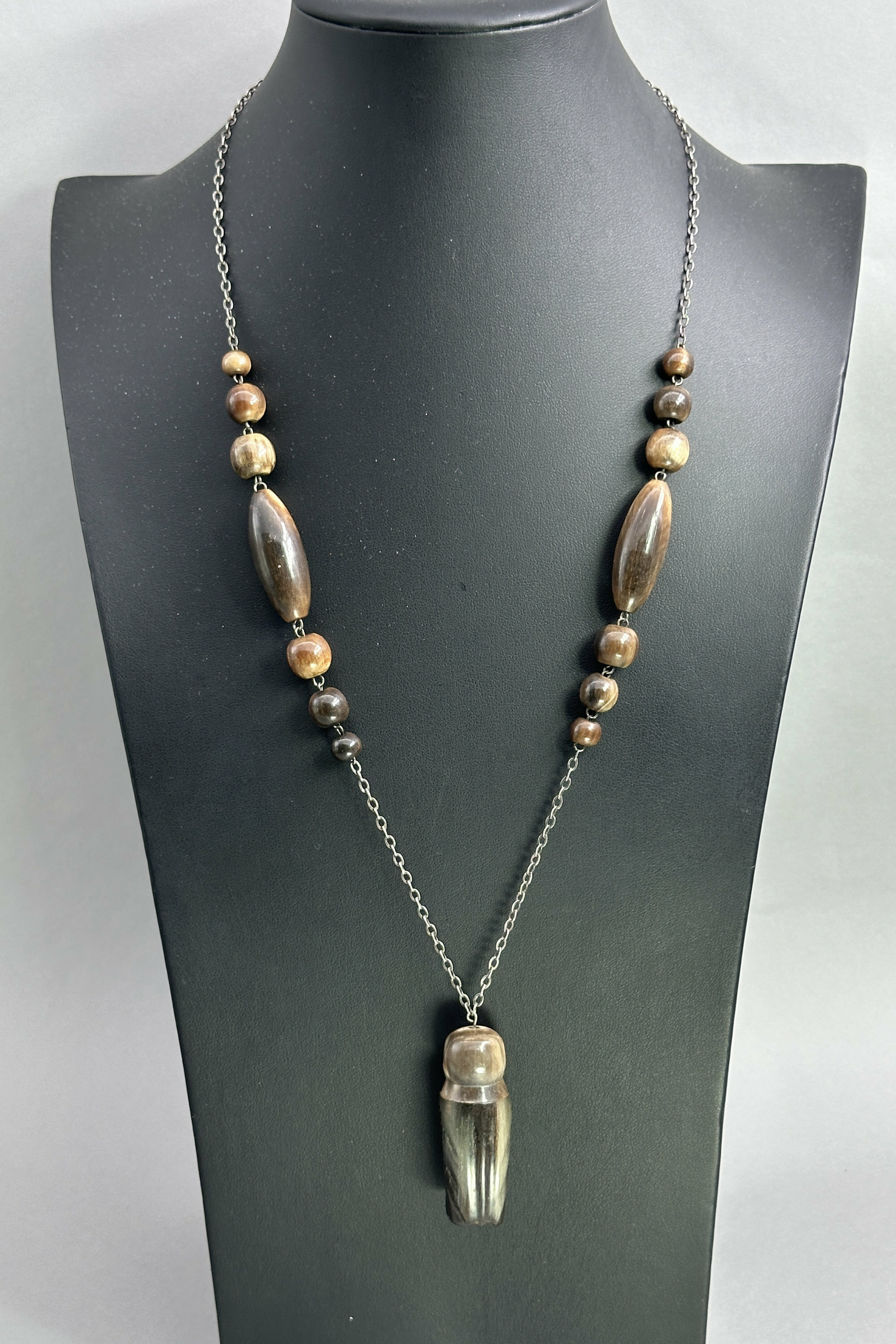
Art Deco Cicada Necklace, probably English 1930s
Price: £35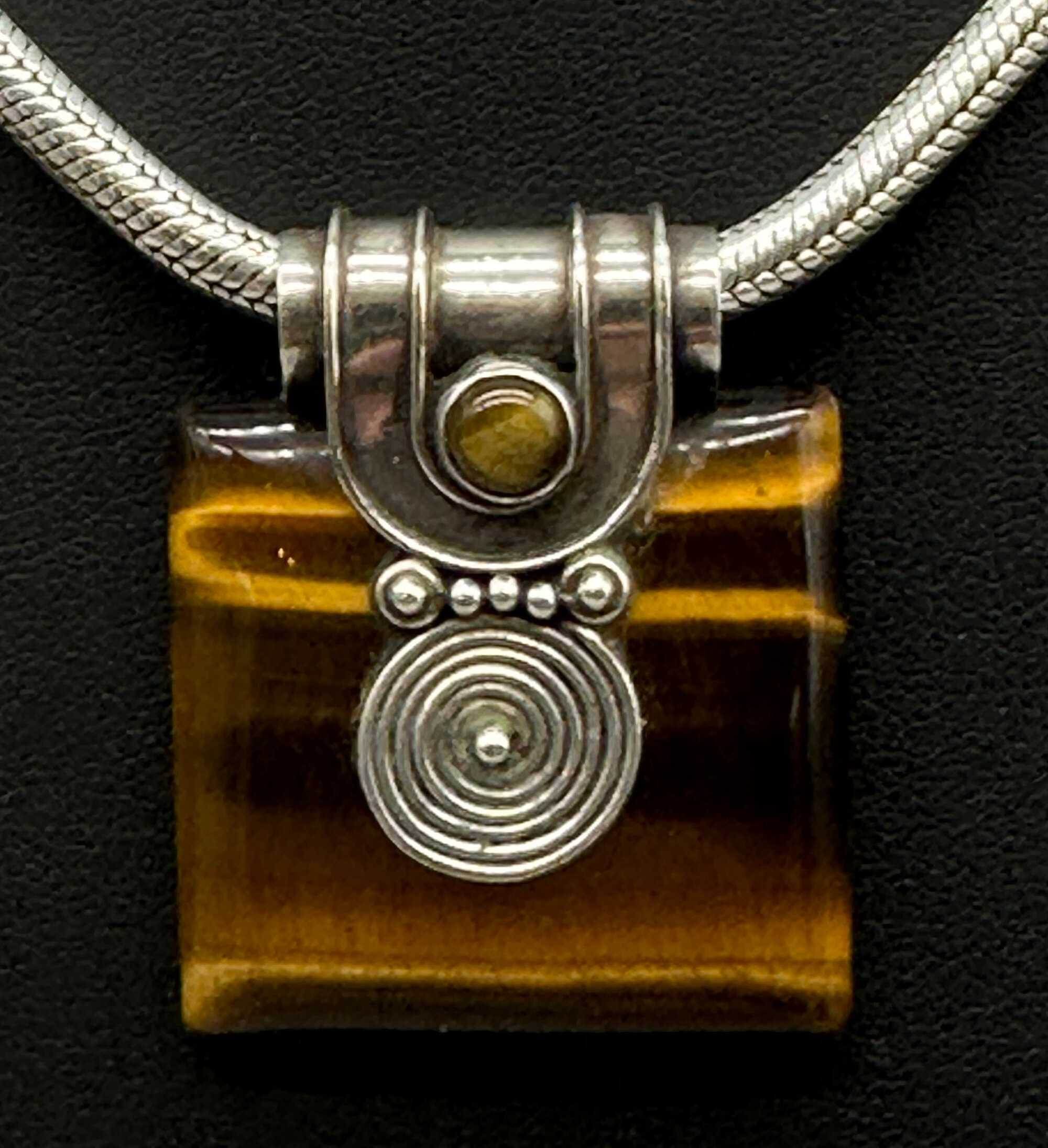
Balinese tiger's eye Necklace, C20th
Price: £55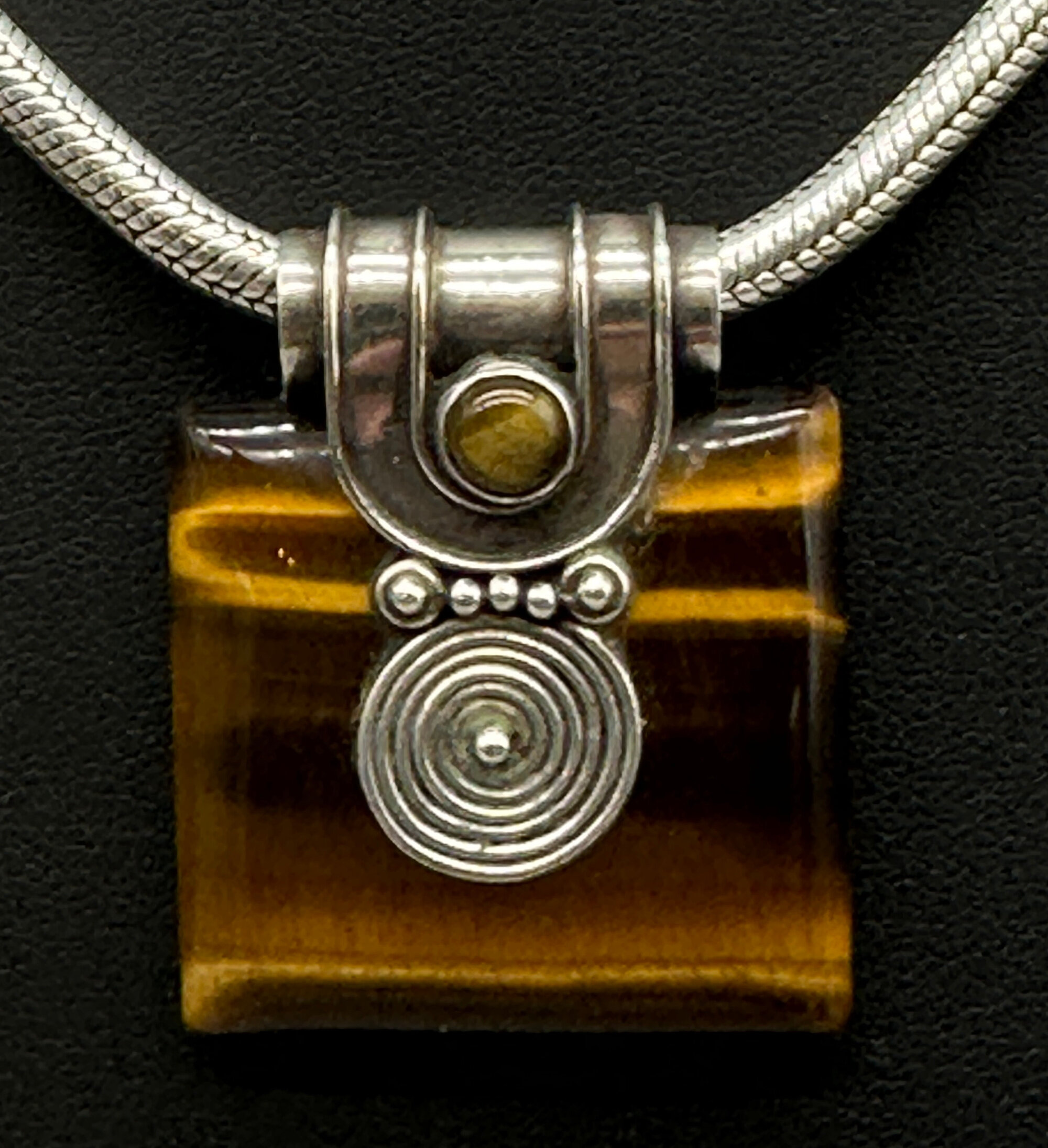
Balinese tiger's eye Necklace, C20th
Price: £55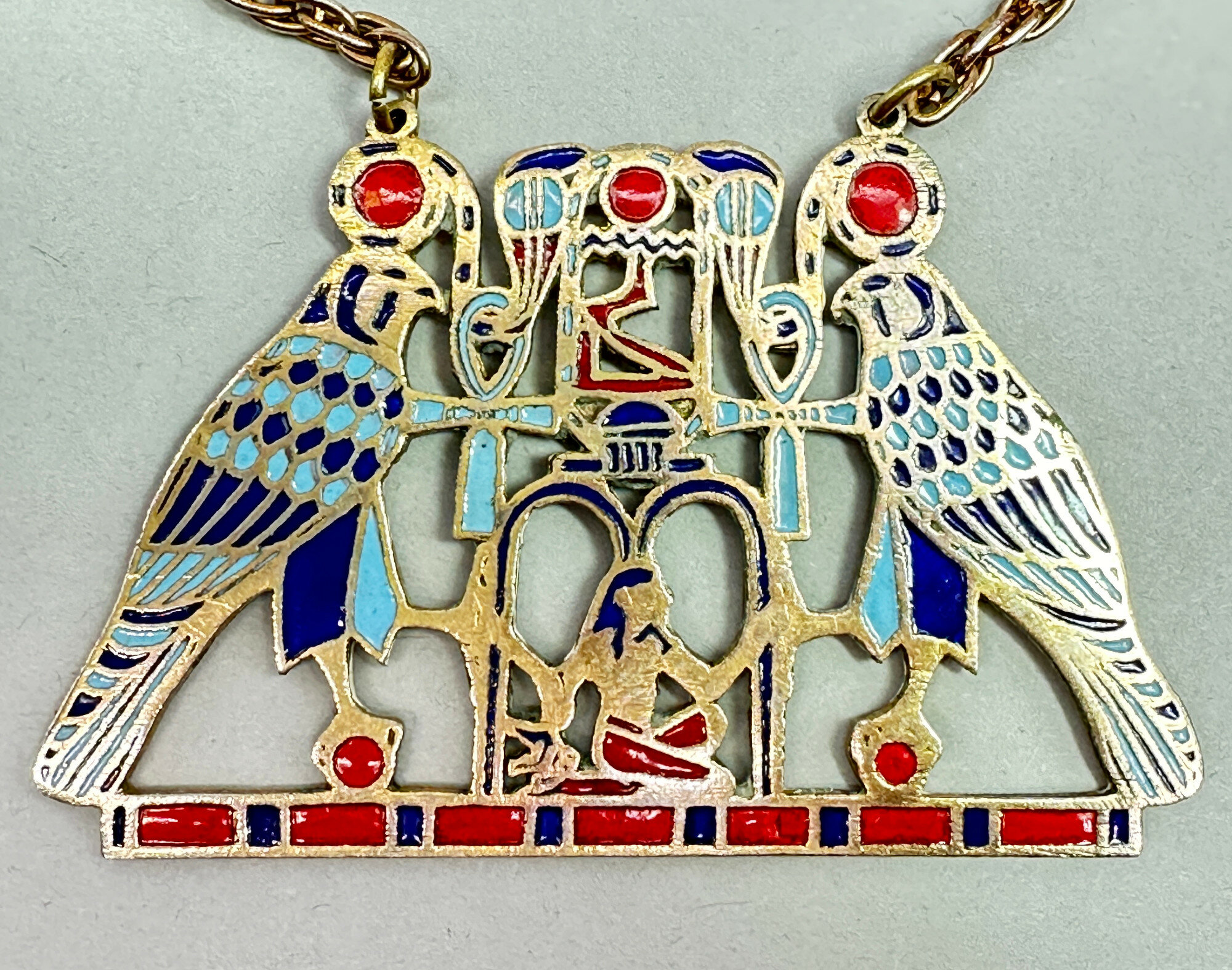
Outstanding Egyptian Revival necklace c1960
Price: £125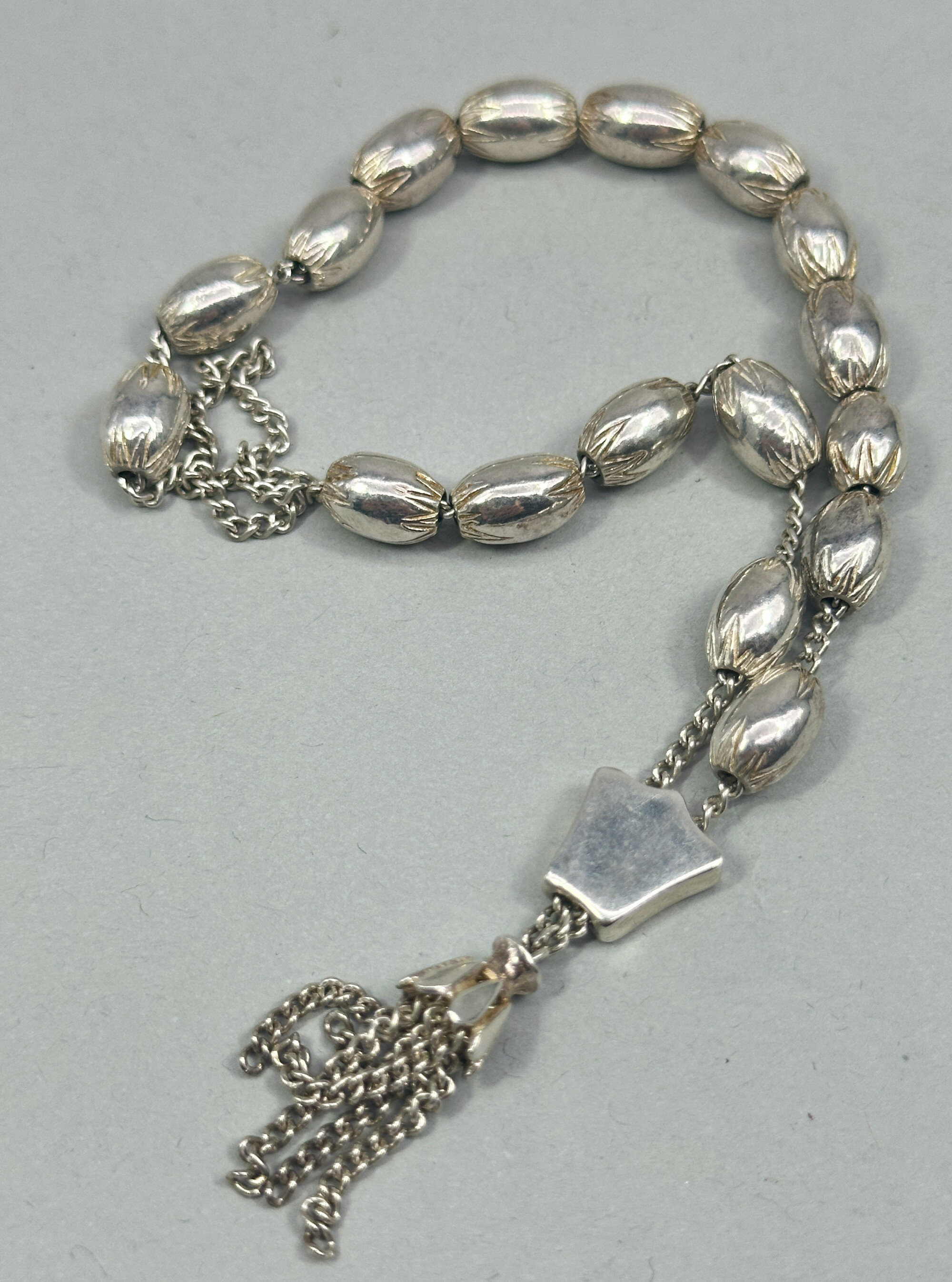
Silver prayer beads with seventeen Beads, 20th century
Price: £75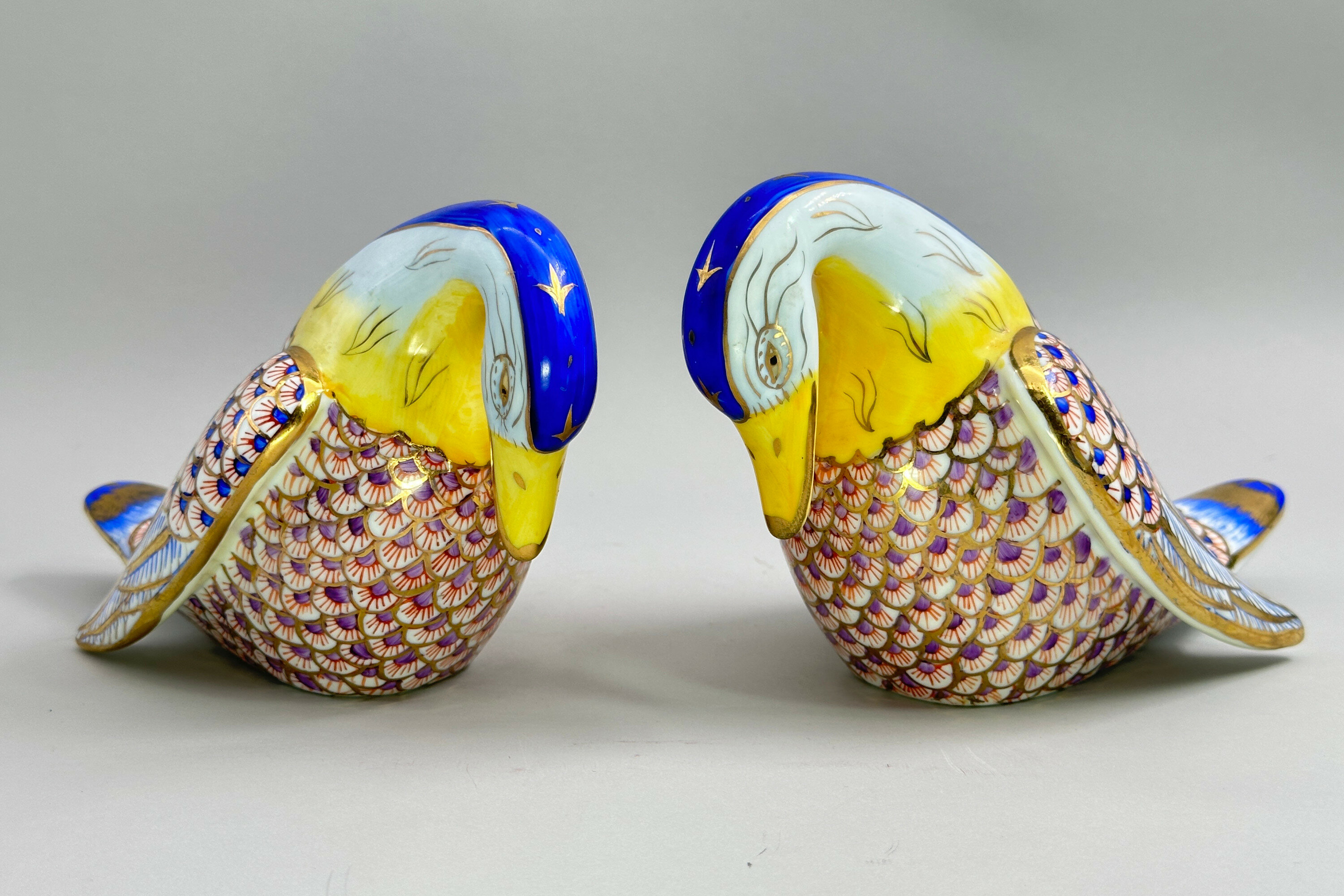
Pair of Ceramic Figures of Swans, probably continental, C20th
Price: £45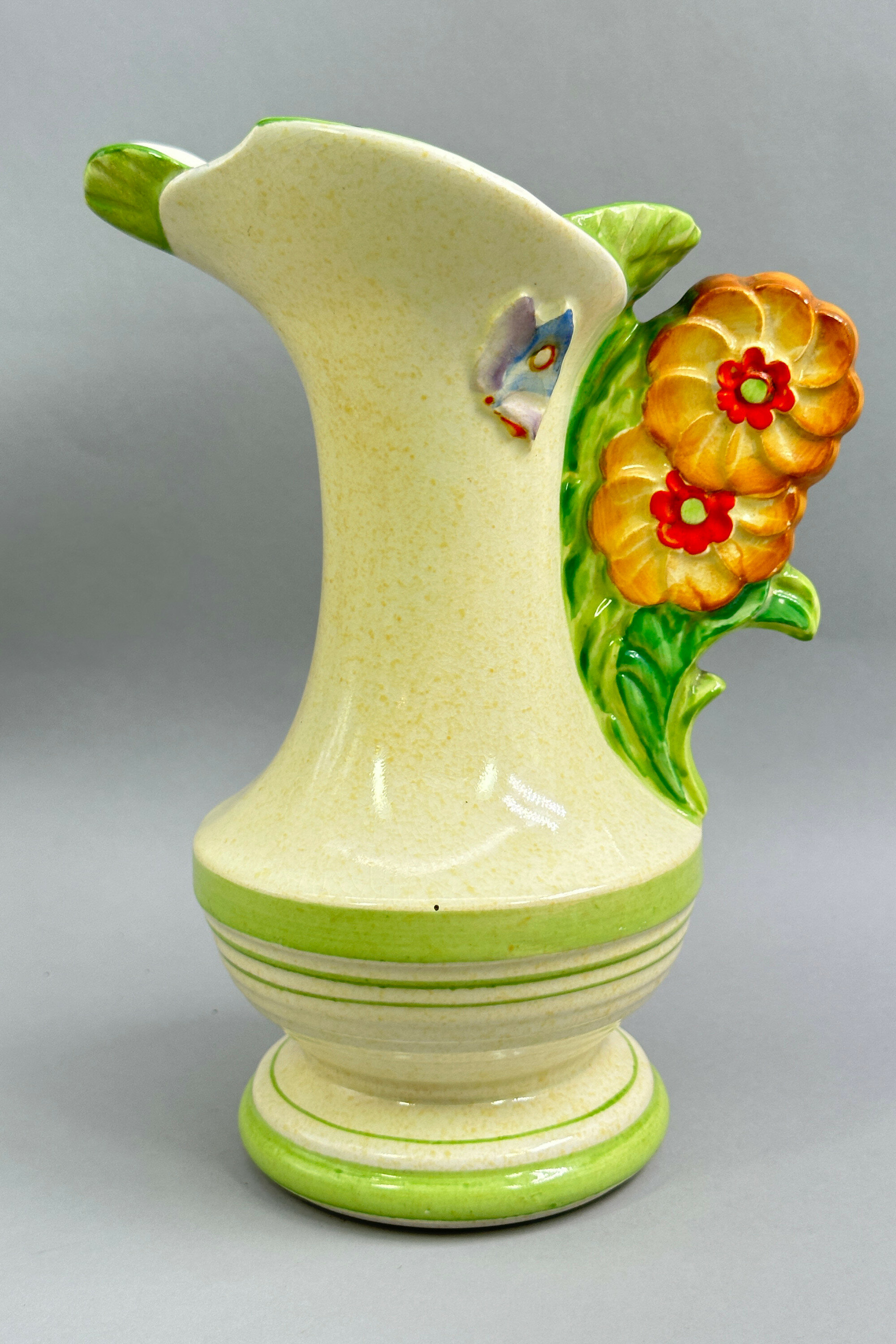
Art Deco Style Ceramic Jug with Floral Handle, probably 1930s
Price: £35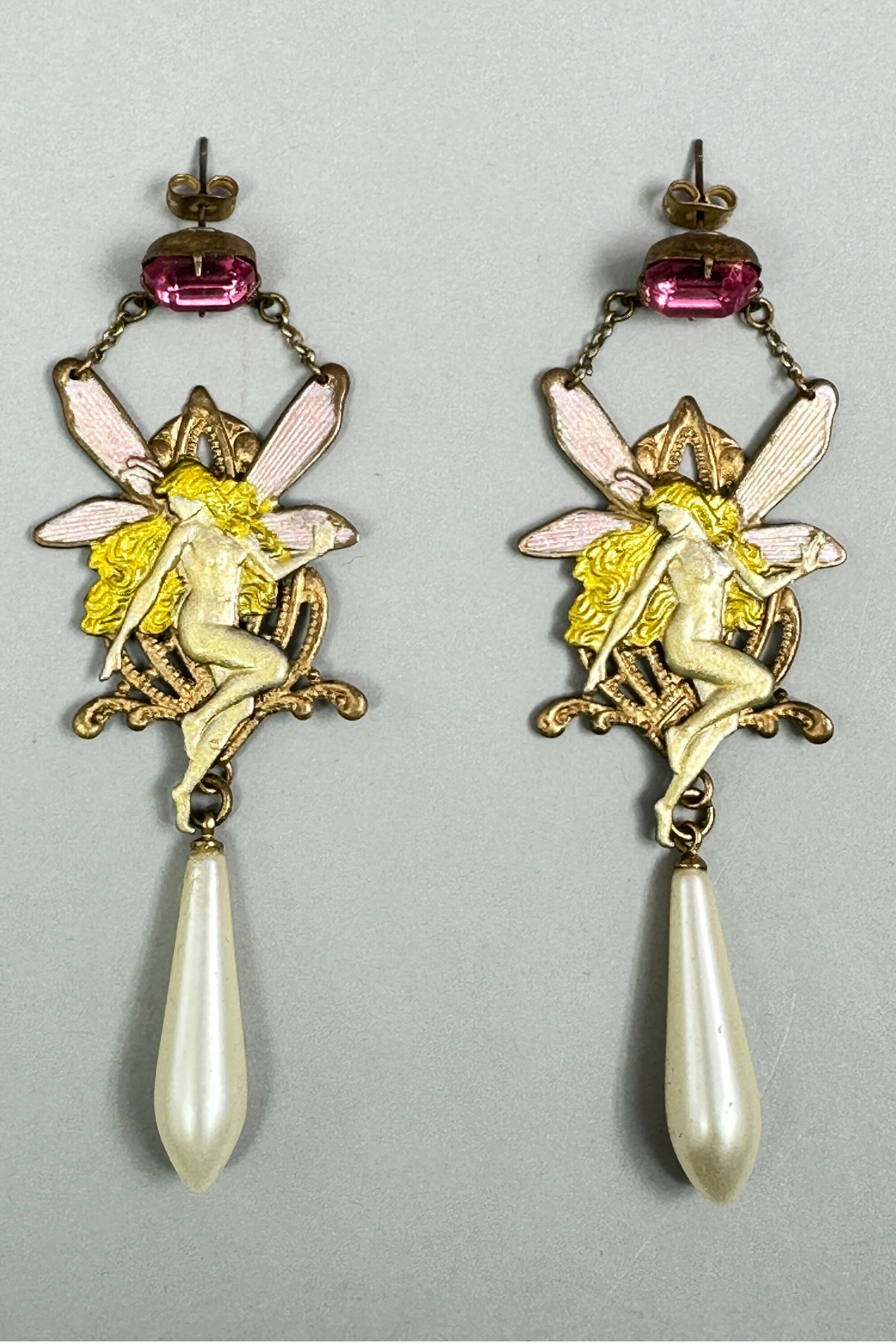
Art Nouveau Fairy earrings c1930
Price: £25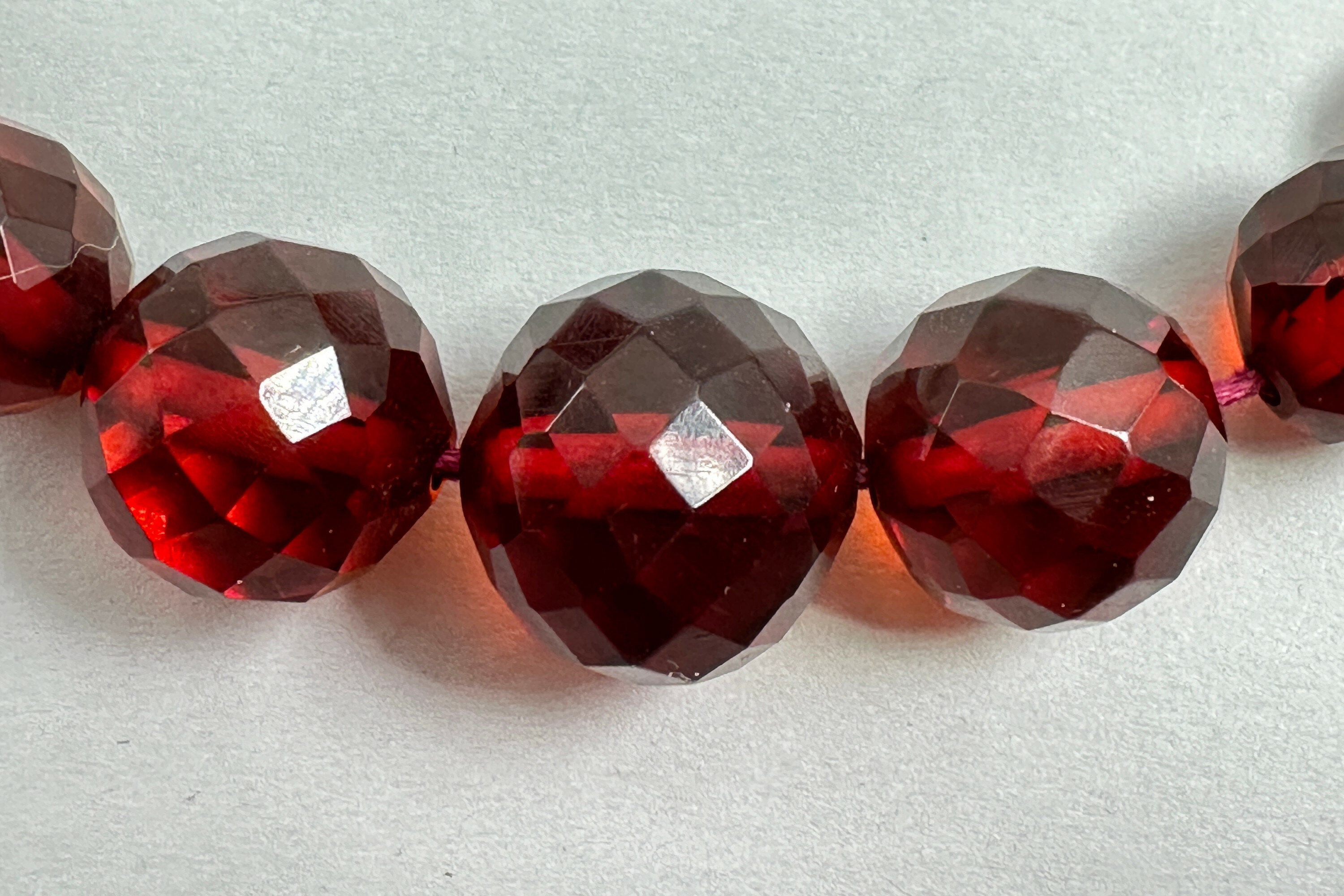
Victorian facetted cherry amber beads with intergrated clasp c1900
Price: £150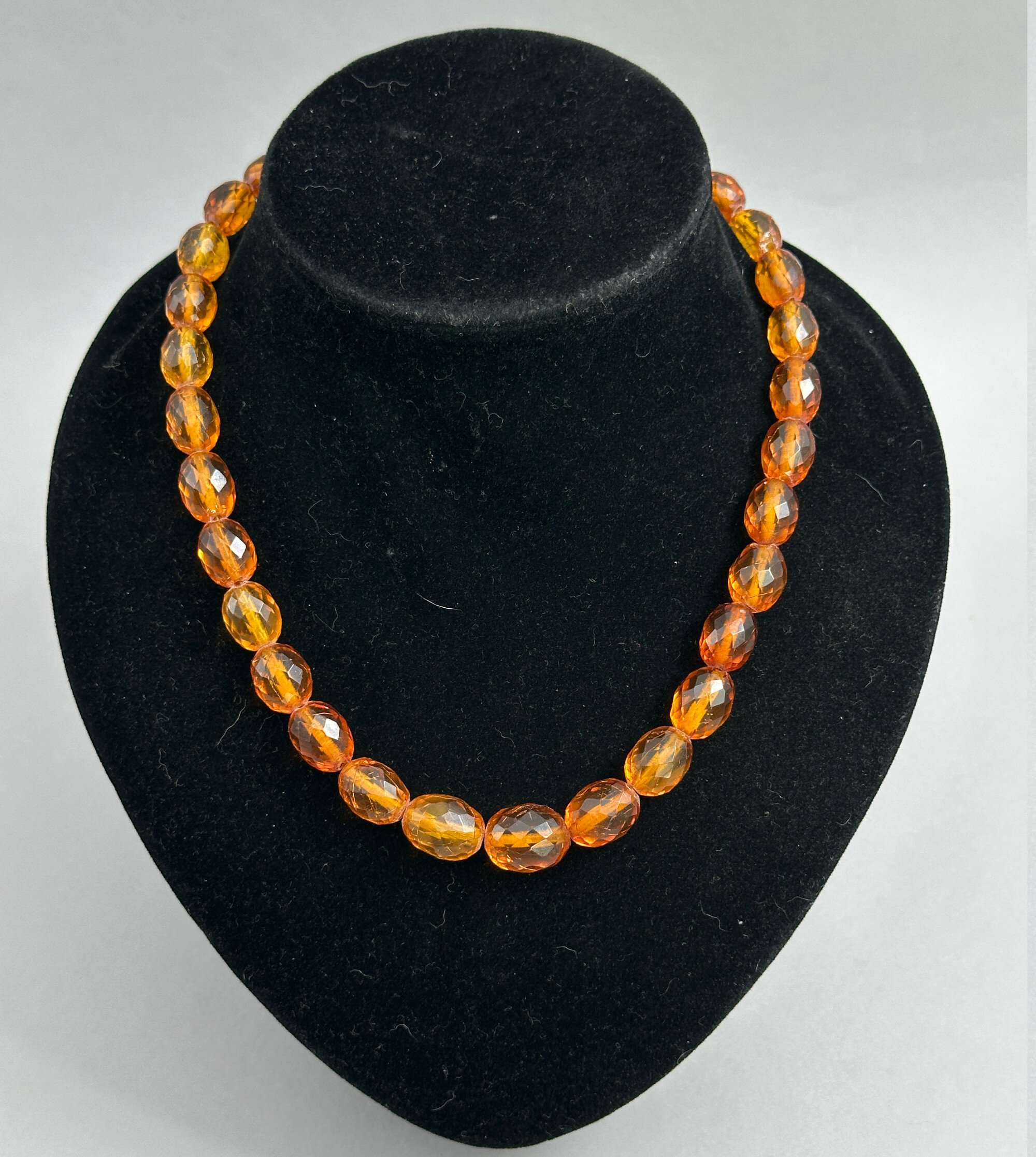
Victorian facetted amber bead necklace c1900
Price: £125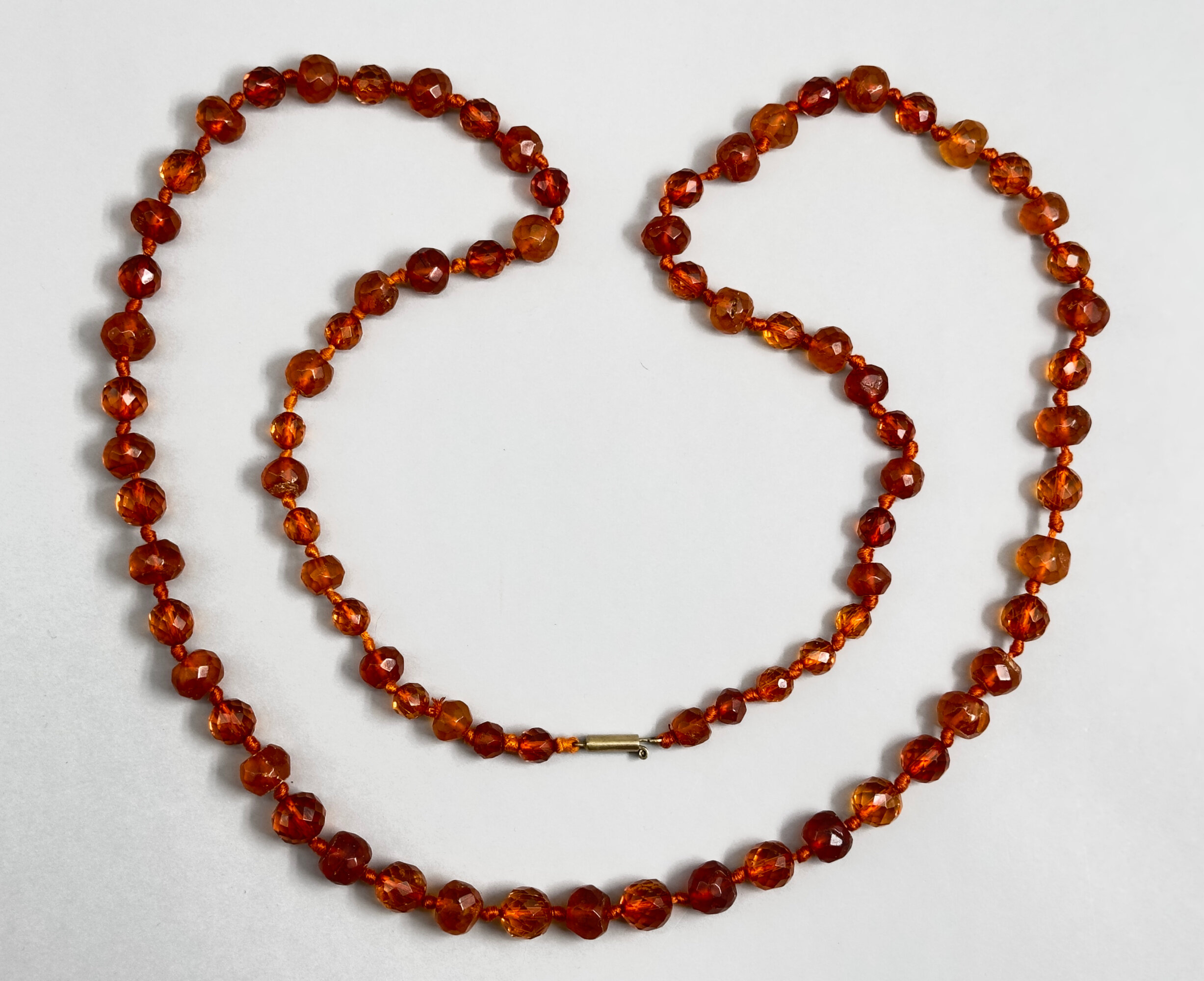
Outstanding opera length Victorian amber beads c1900
Price: £175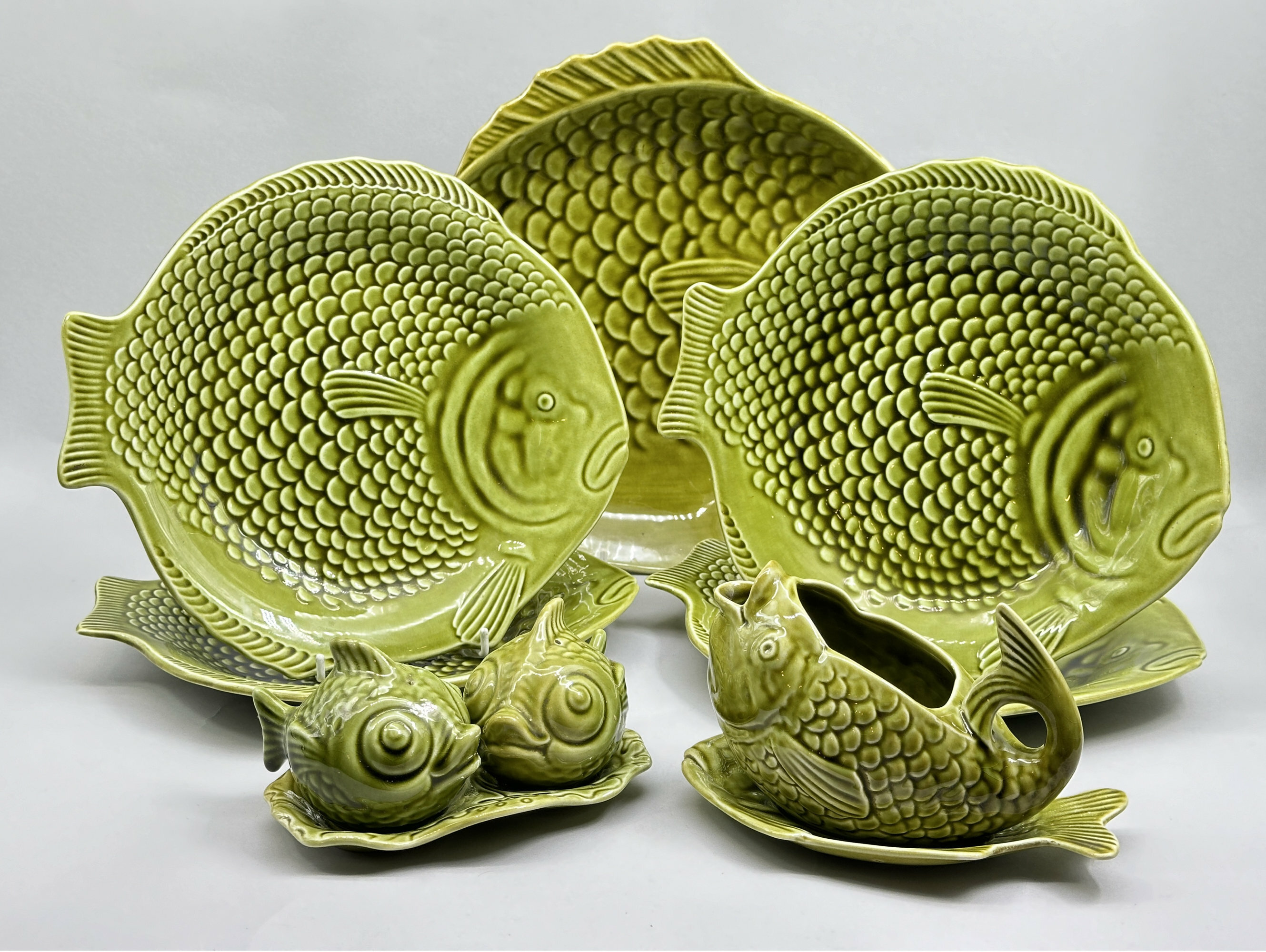
Shorter and Sons Green glazed Fish Service, 1950s/1960s
Price: £75The firm which later became Shorter and Son was first set up by Arthur Shorter in 1878 with a partner James Boulton in Stoke on Trent. Their products were solidly in the main-stream of Victorian taste - majolica wares of all types predominated. Time saw another generation join the firm and various amalgamations took place. One of the sons, Colley Shorter, developed a close association with Clarice Cliff whom he eventually married. Her designs, while concentrated on the wares signed with her name, also fed in to the productions of Shorter and Sons and the range of their wares expanded considerably in the 1920s and 1930s.
‘Fish Ware’, as it became known was introduced in the late 1920s and rapidly became one of their best selling lines. Initially production was confined to flat ware and in 1935 a part service was acquired by the Duchess of York, later to become Queen Elizabeth. The range expanded and the design of the gravy boat and stand, introduced in 1936 (and included in the present selection), was attributed to Cliff herself. There were further additions and the late 1950s saw the addition of salt and pepper pots on a wavy tray (also included in the present selection). This service, then, probably dates to around 1960 a little before the firm was effectively taken over by Crown Devon in 1964 and the eventual loss of the identity of its wares. The popularity of the line is easily understood and our present selection is an excellent memento of the design.
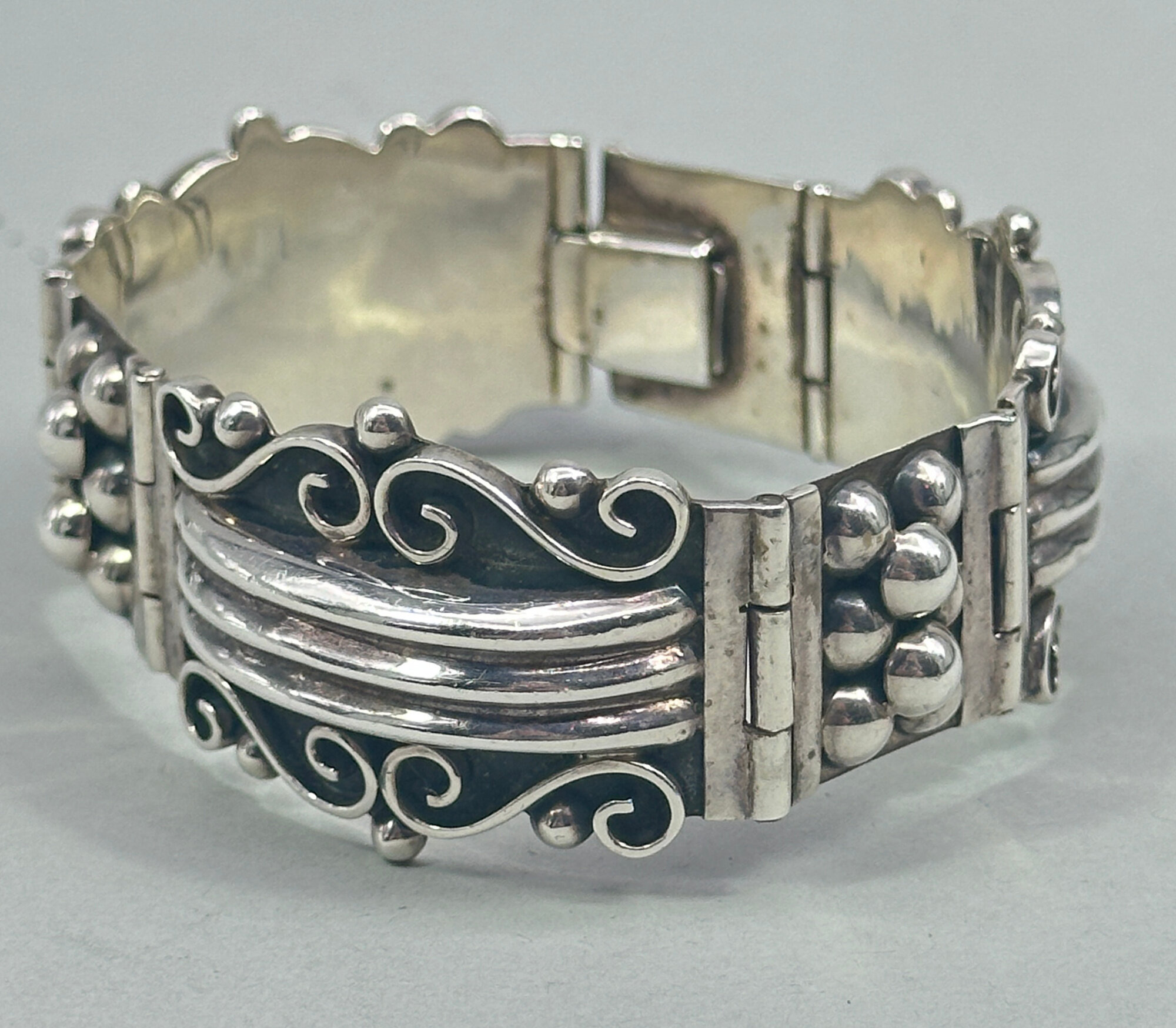
Outstanding Taxco silver bracelet c1960
Price: £295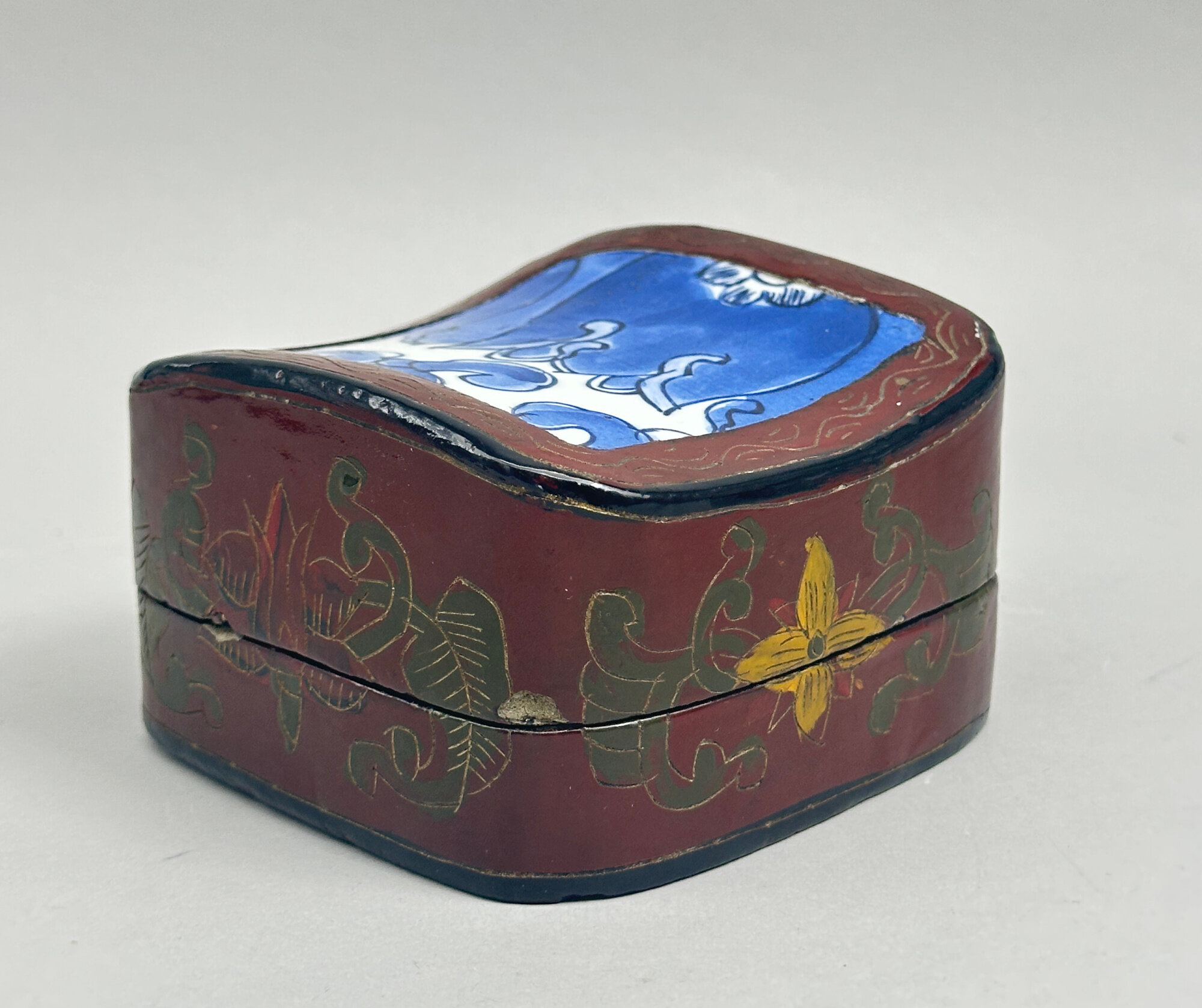
Vintage Lacquer Box with an inset ceramic Shard, probably Persian C20th
Price: £25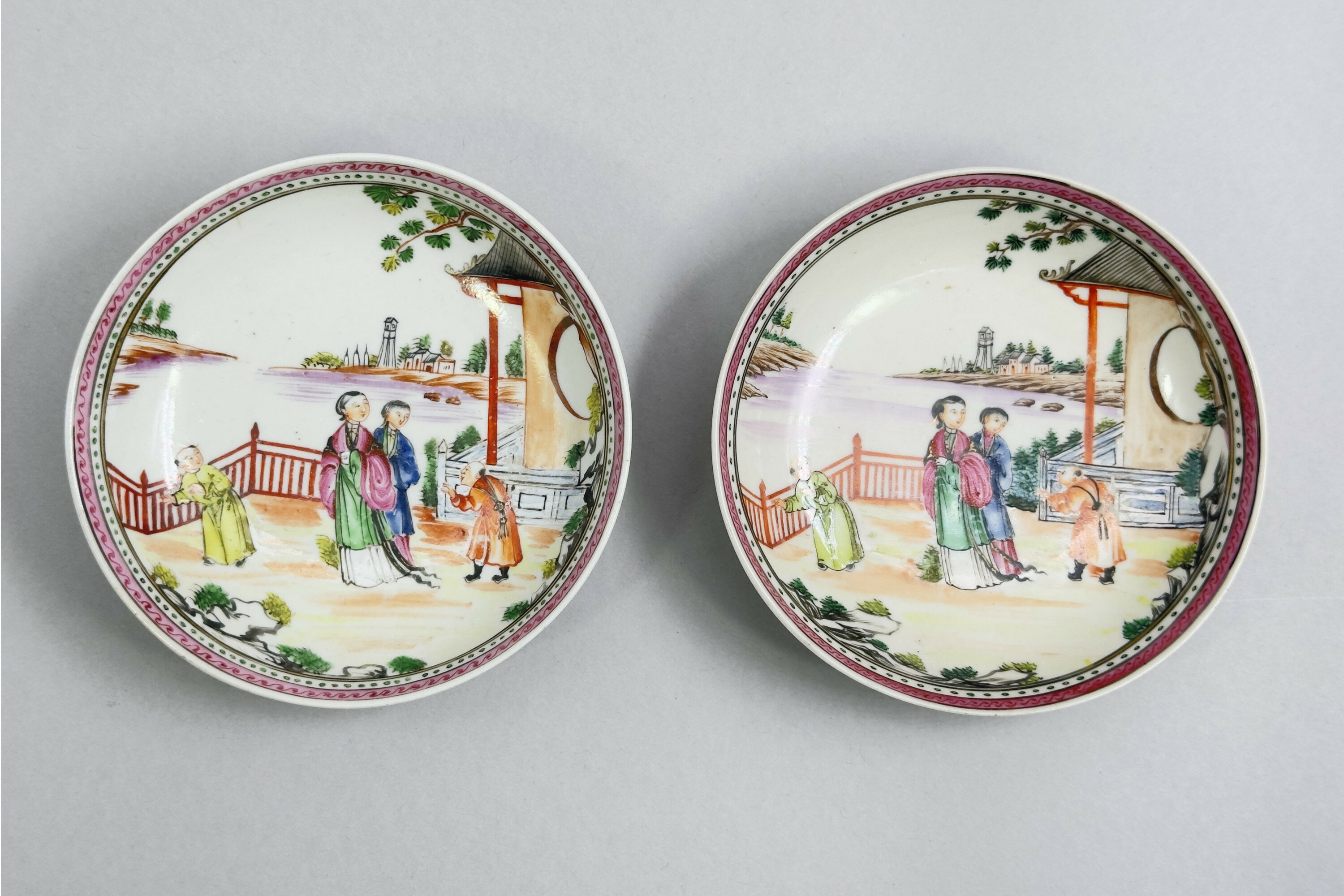
Pair of Worcester Saucers with Chinoiserie Decoration circa 1780
Price: £45While close to the Chinese originals, many features indicate European and indeed English manufacture, in particular the drawing of the ladies’ heads, the palette of colours used, the borders employed and, most importantly, the glaze and paste of the reverse. The most likely producer here was the Worcester factory whose ‘Mandarin’ pieces were well known and a circa date in the second half of the eighteenth century is reasonable. The saucers would have come from a small tea service with matching bowls and various serving items, including, of course, a teapot. Not so likely to be used now, they provide an elegant example of the vogue for Chinoiserie in England at the time.
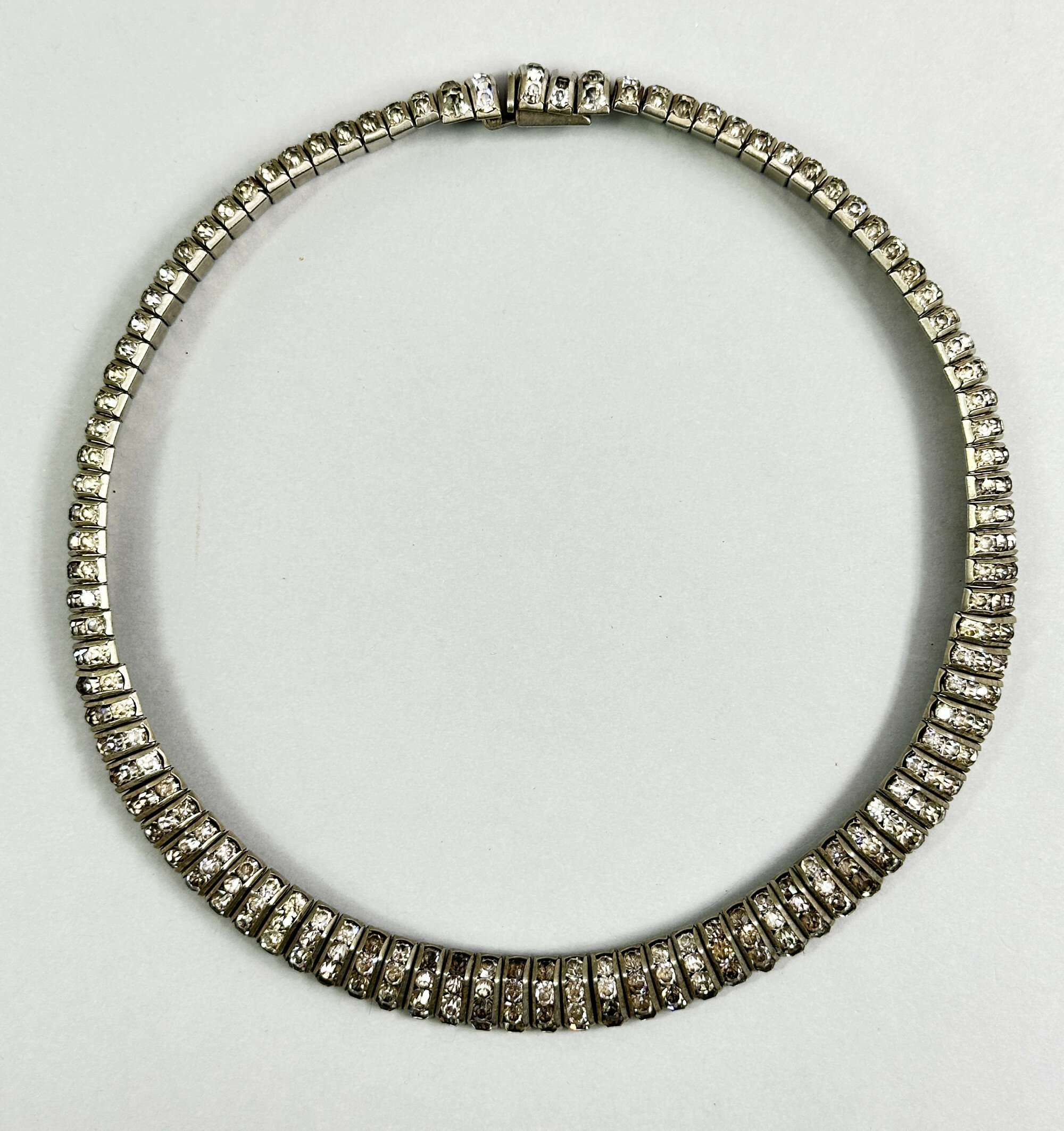
Art Deco paste collar necklace by Schreiber & Hiller c1930
Price: £125
Art Deco bee motif necklace 1930s
Price: £125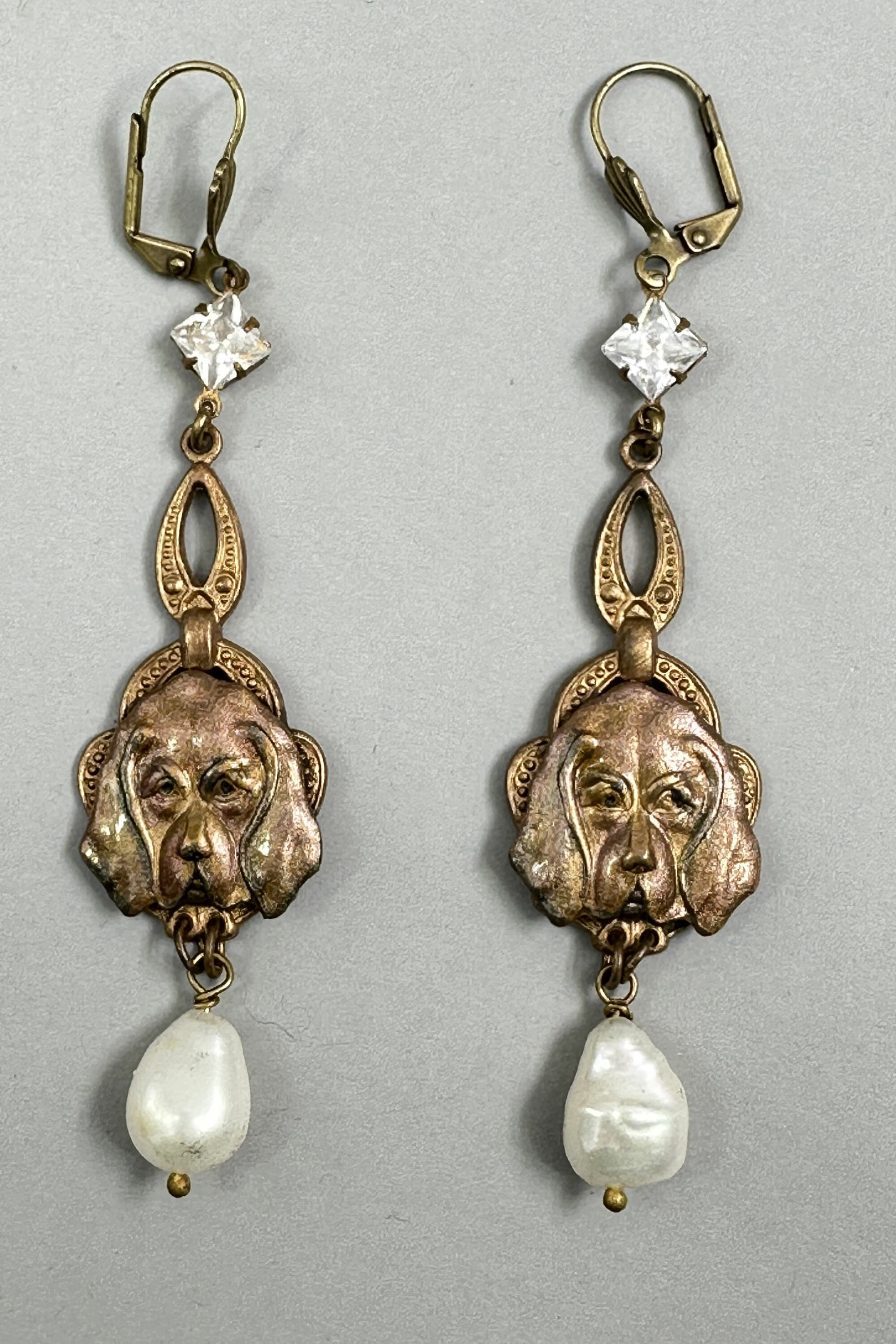
Charming Dog motif Earrings c1930
Price: £25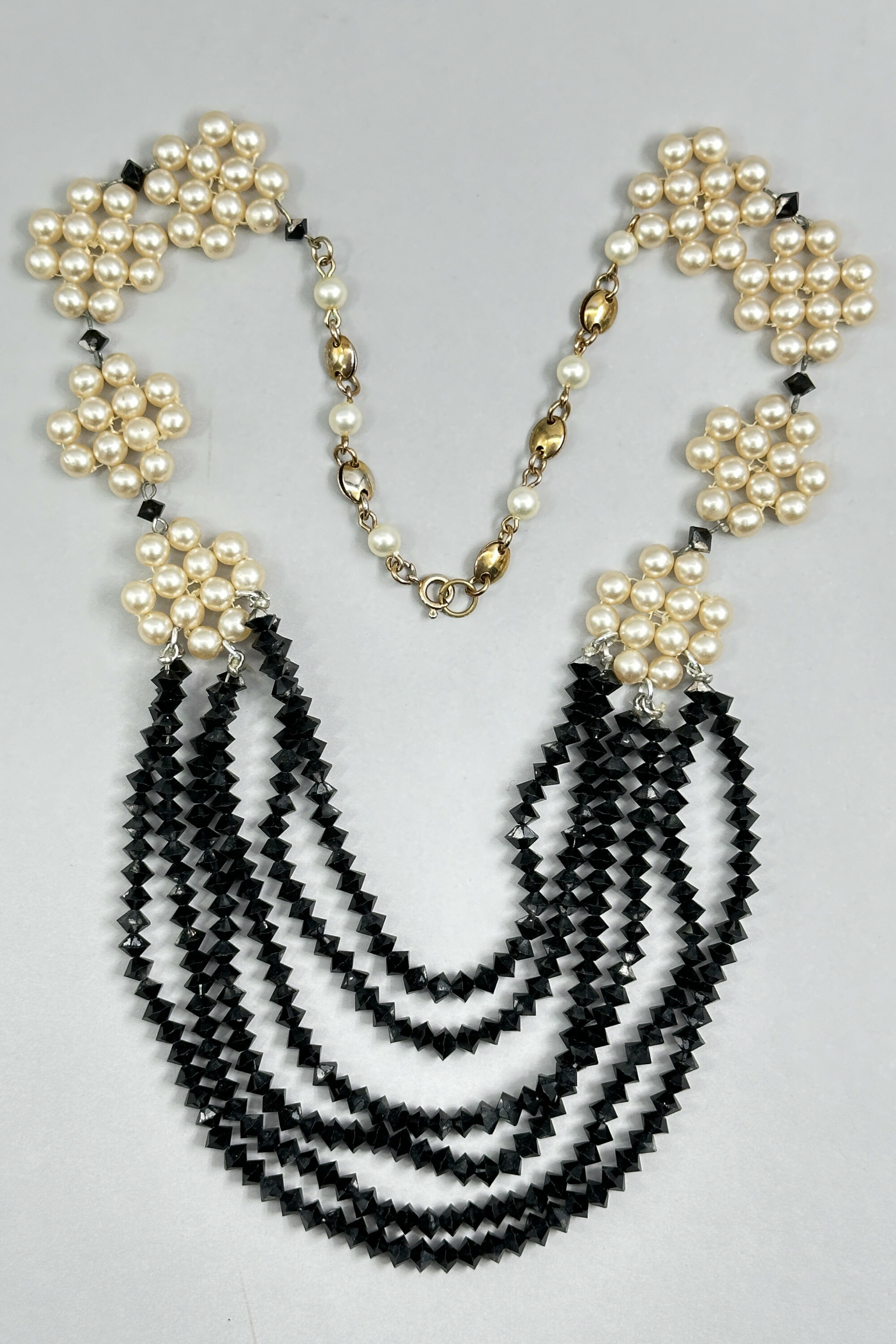
Art Deco French jet and pearl necklace c1940
Price: £40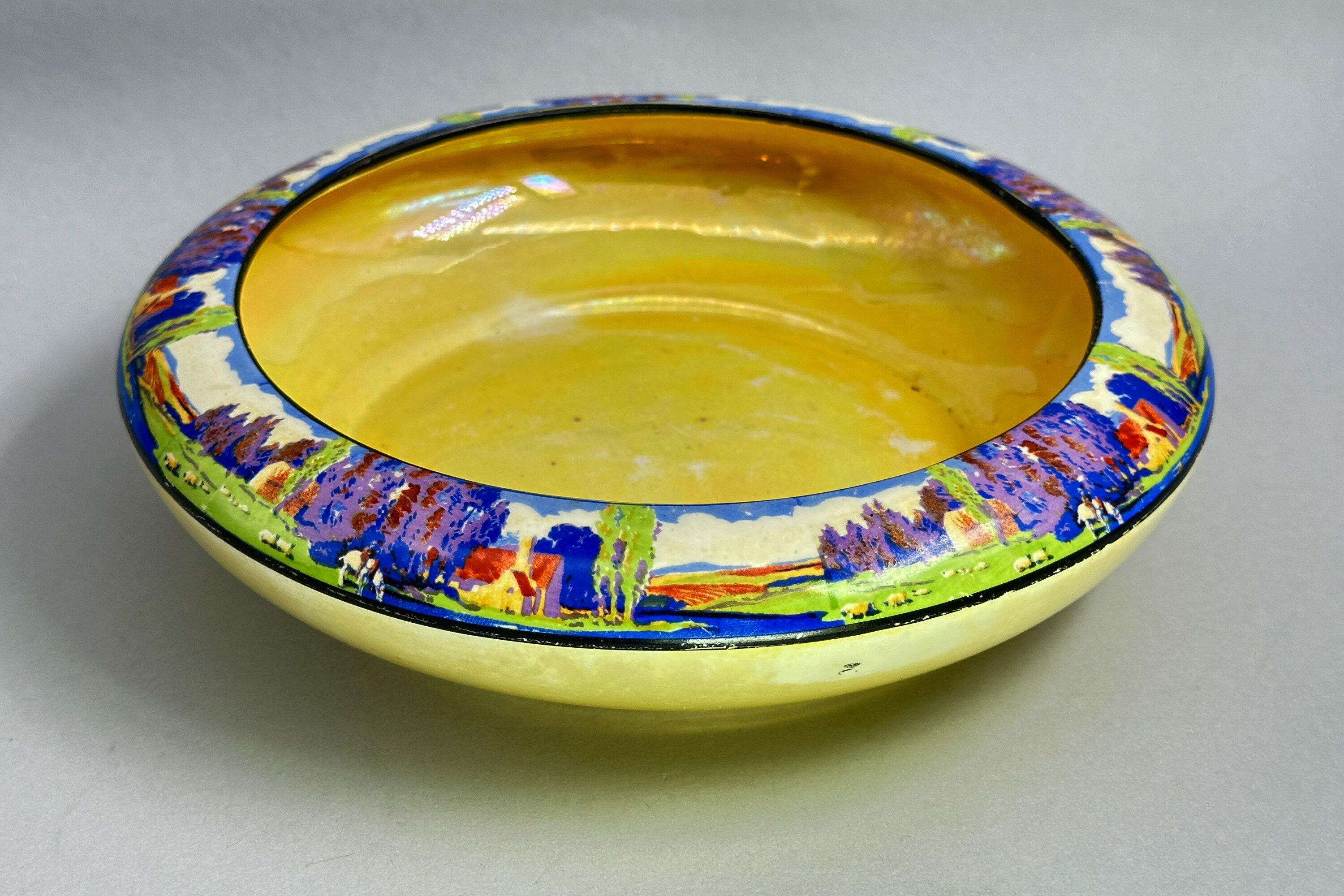
Hanley Ware circular bowl, Lancaster and Sons, 1920s
Price: £25Lancaster & Sons Ltd were manufacturers of earthenware at the Dresden works, Tinkersclough, in the Shelton area of Hanley, Stoke-on-Trent, England. The firm was founded in 1899 under the name ‘Lancaster and Barker’ was renamed ‘Lancaster & Sons Ltd’ in the early 1900s and continued production until 1944. In the 1920s they produced various pieces with rural landscape scenes of which this is an example. Some see reminiscences of the ‘Arts and Crafts’ movement here but the mark found on the bottom clearly dates the piece to the 1920s. The yellow lustre glaze is interesting and free from the crazing sometimes found.
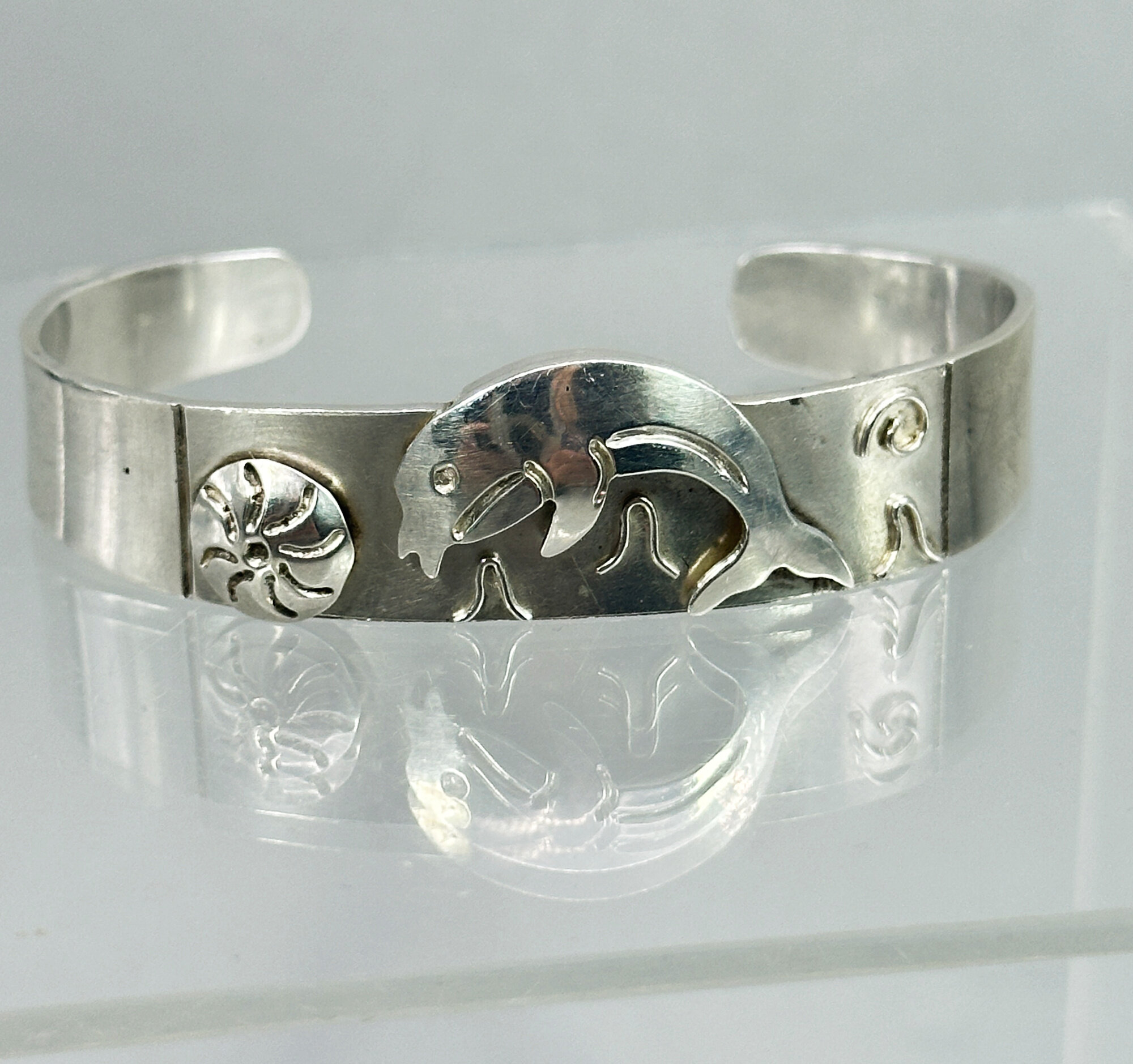
Mexican silver dolphin bangle bracelet c1990
Price: £65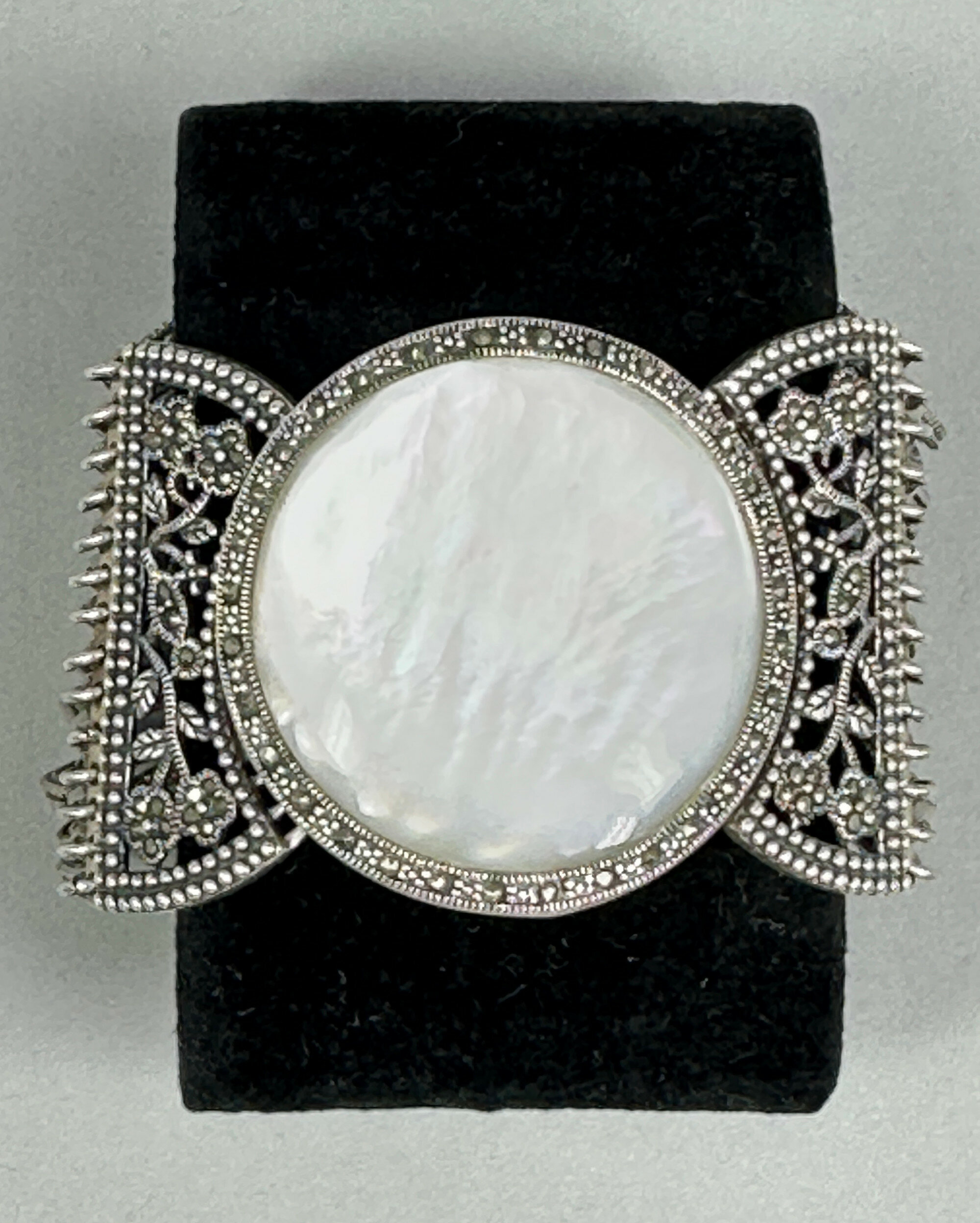
Victorian style Bracelet in Mother of Pearl and Silver, modern
Price: £95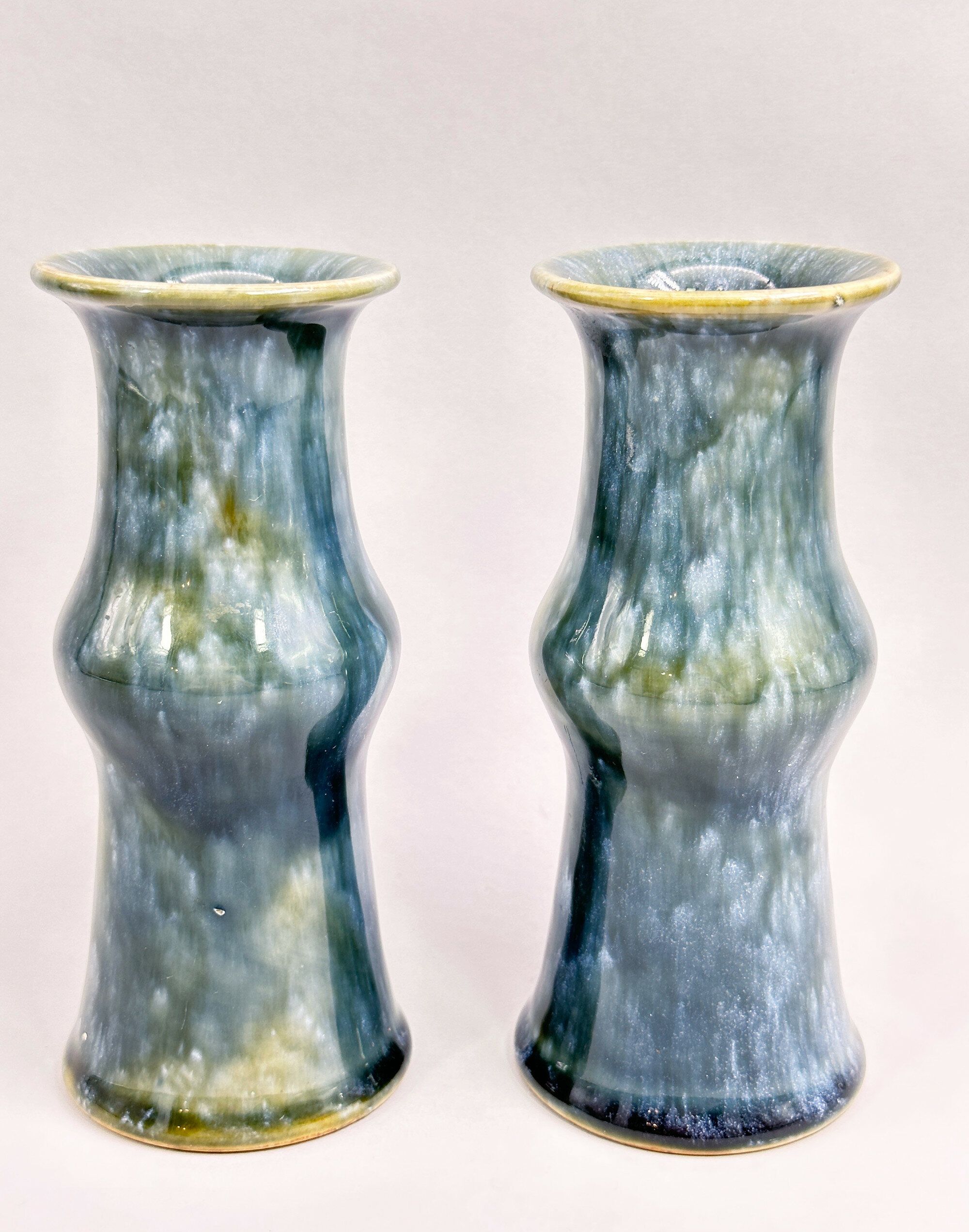
Pair of Royal Doulton slender Ku form Vases, 1920s
Price: £75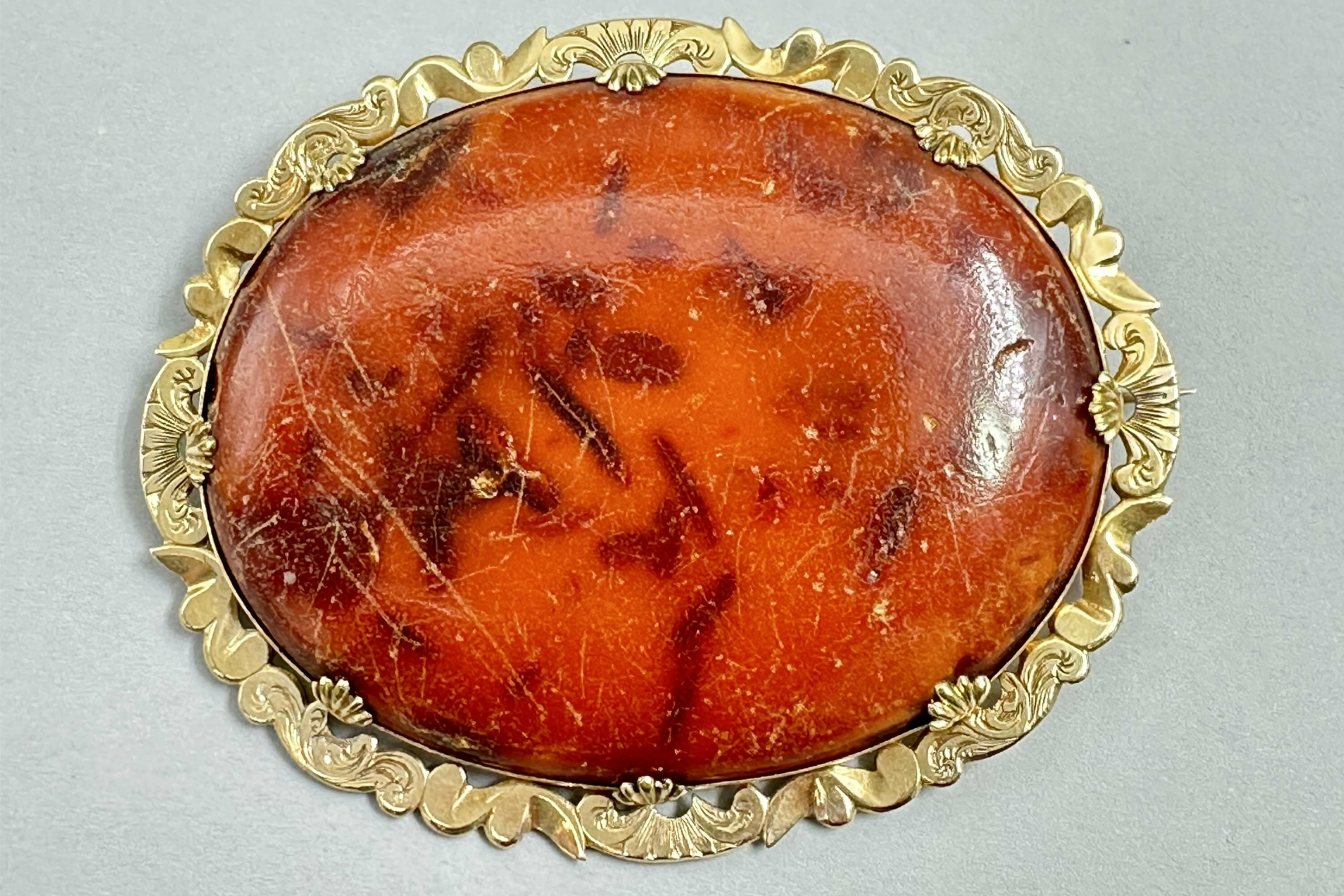
Victorian large 9ct gold brooch set with amber c1900
Price: £200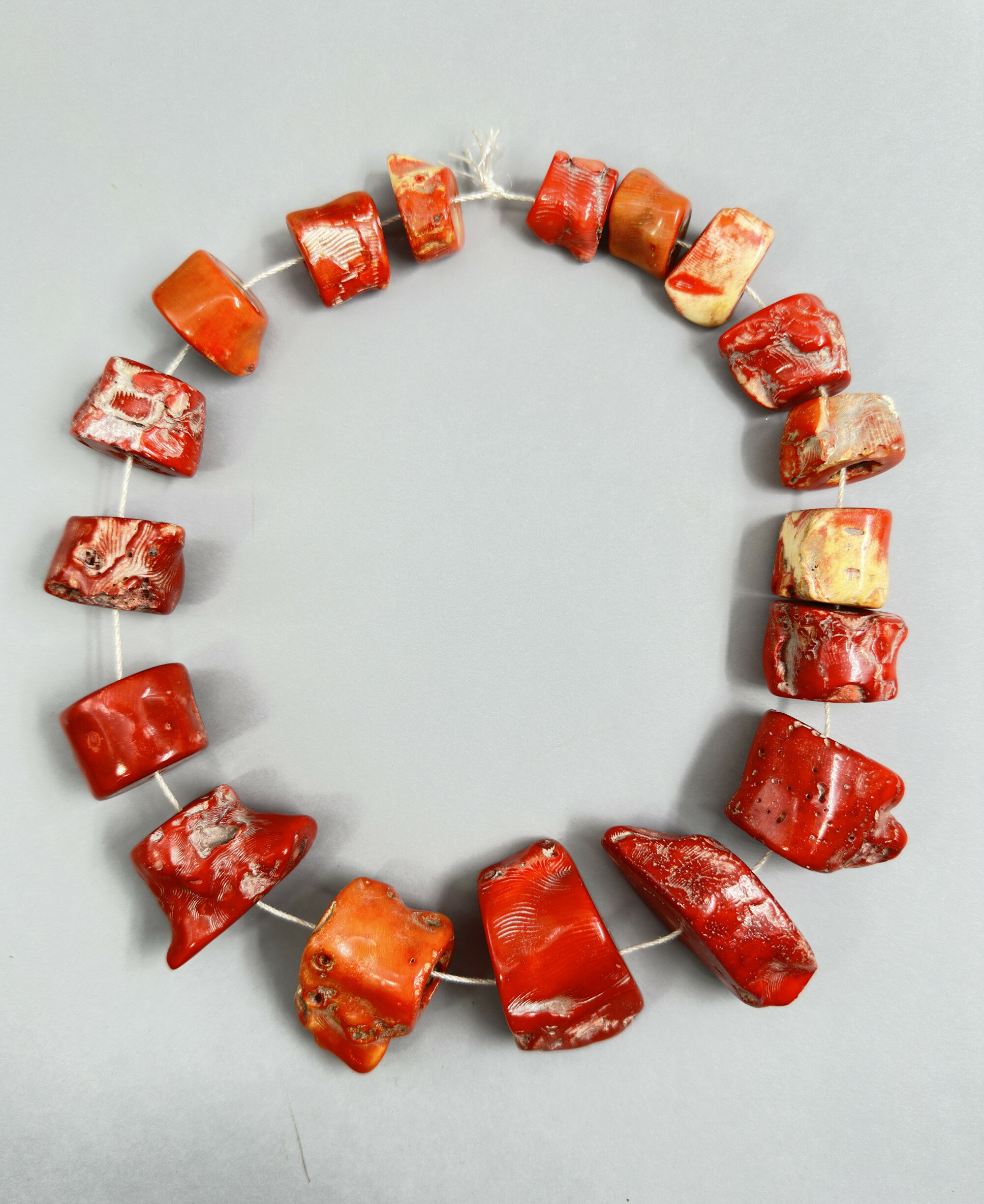
Massive natural coral beads
Price: £175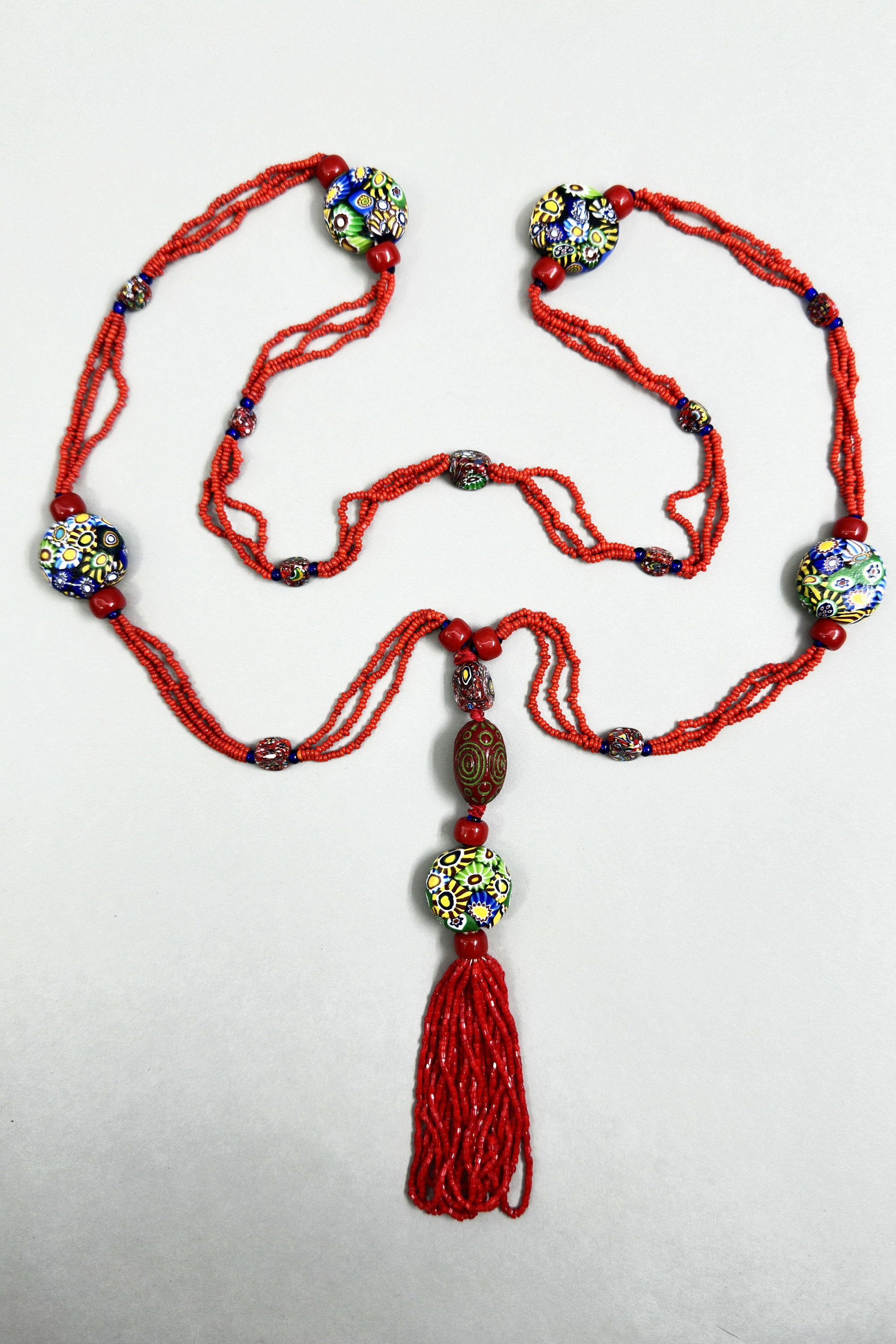
Mille fiore bead flapper necklace c1930
Price: £95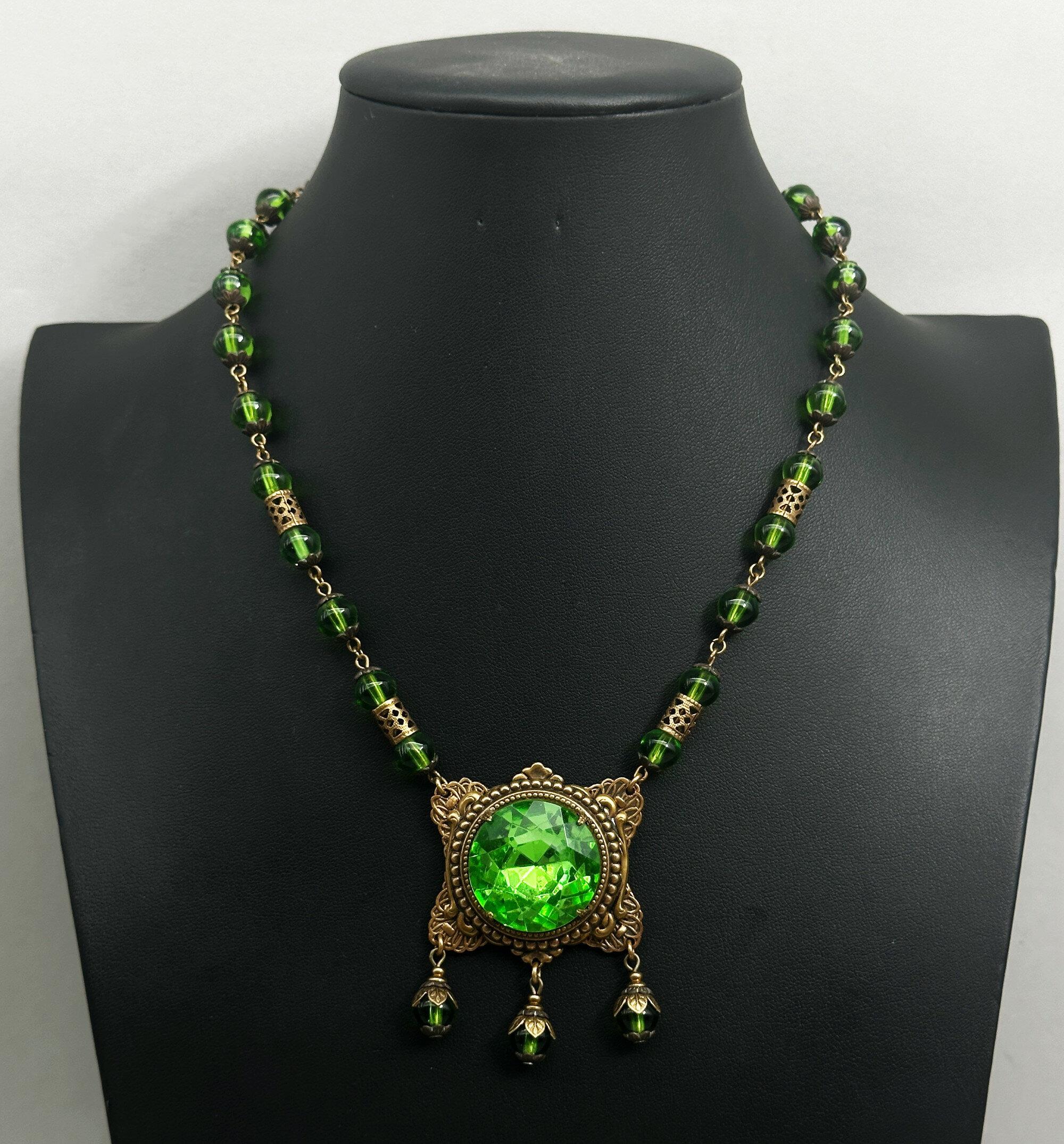
Art Deco necklace with large green glass pendant 1930s
Price: £85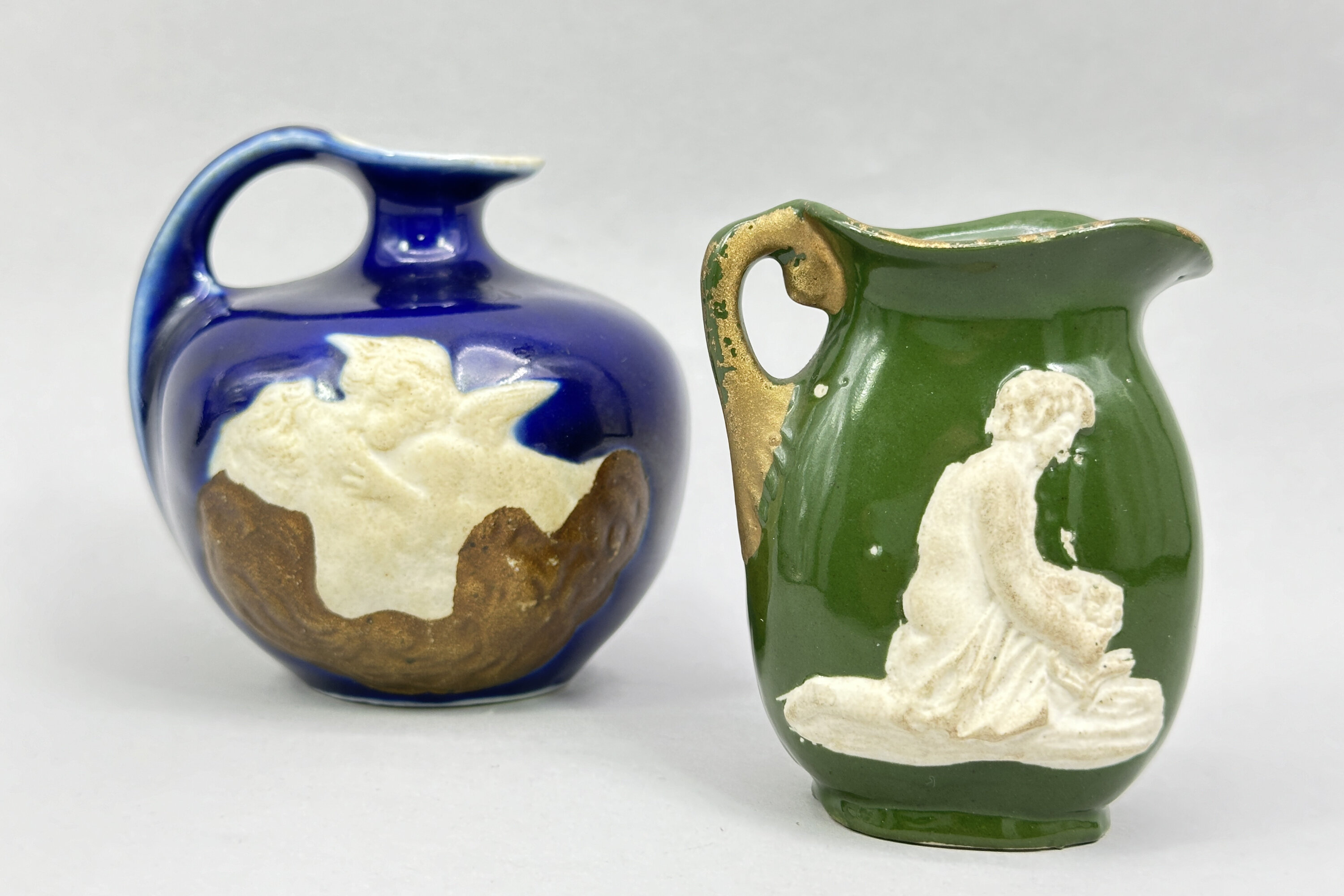
Two Ceramic Jugs with Erotic Decoration, continental perhaps German, circa 1900
Price: £25These pieces represent something of a puzzle. Seen the right way round (with the handle on the right) they are plain and the decoration only reveals itself on the reverse. This suggests a playful intent to conceal which, when combined with the subject matter, suggests something a bit ‘naughty’ which could confirm the second interpretation of what the seated man is holding! The paste, and general style of the pieces, looks continental and a German origin might be a good guess, but no more than that. The blue glazed jug has an impressed mark to the base ‘186 [plus an unidentifiable number]’ which might be the date but is more likely the pattern number; a dating of around 1900 for both seems reasonable - certainly there is an ‘old’ look to the pieces. There are one or two similar examples but little in the way of firm information. One for a collector to puzzle out!
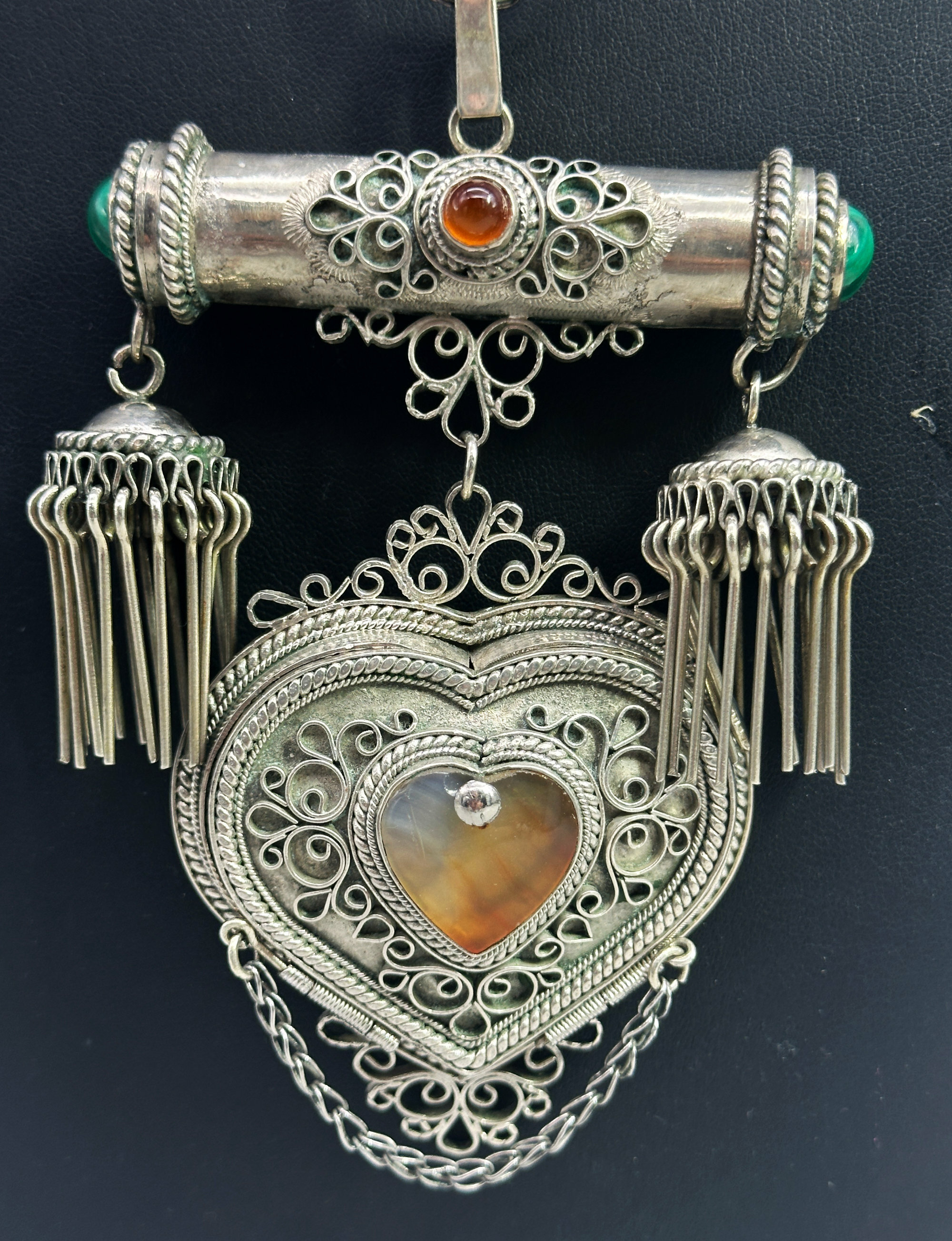
Large Islamic silver necklace with heart shaped box c1920
Price: £85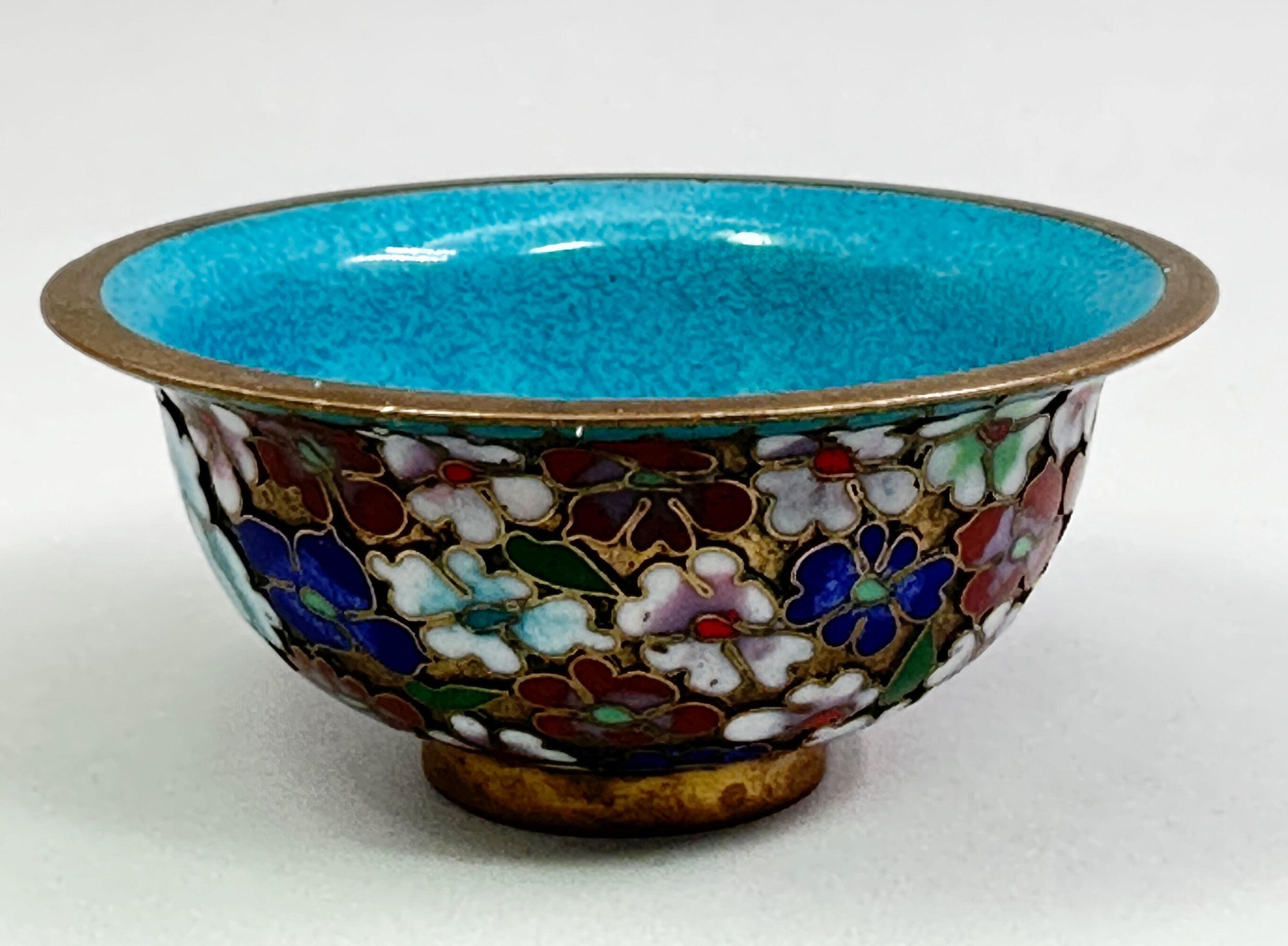
Small Chinese Gilt Ground Cloisonné Bowl, C20th
Price: £35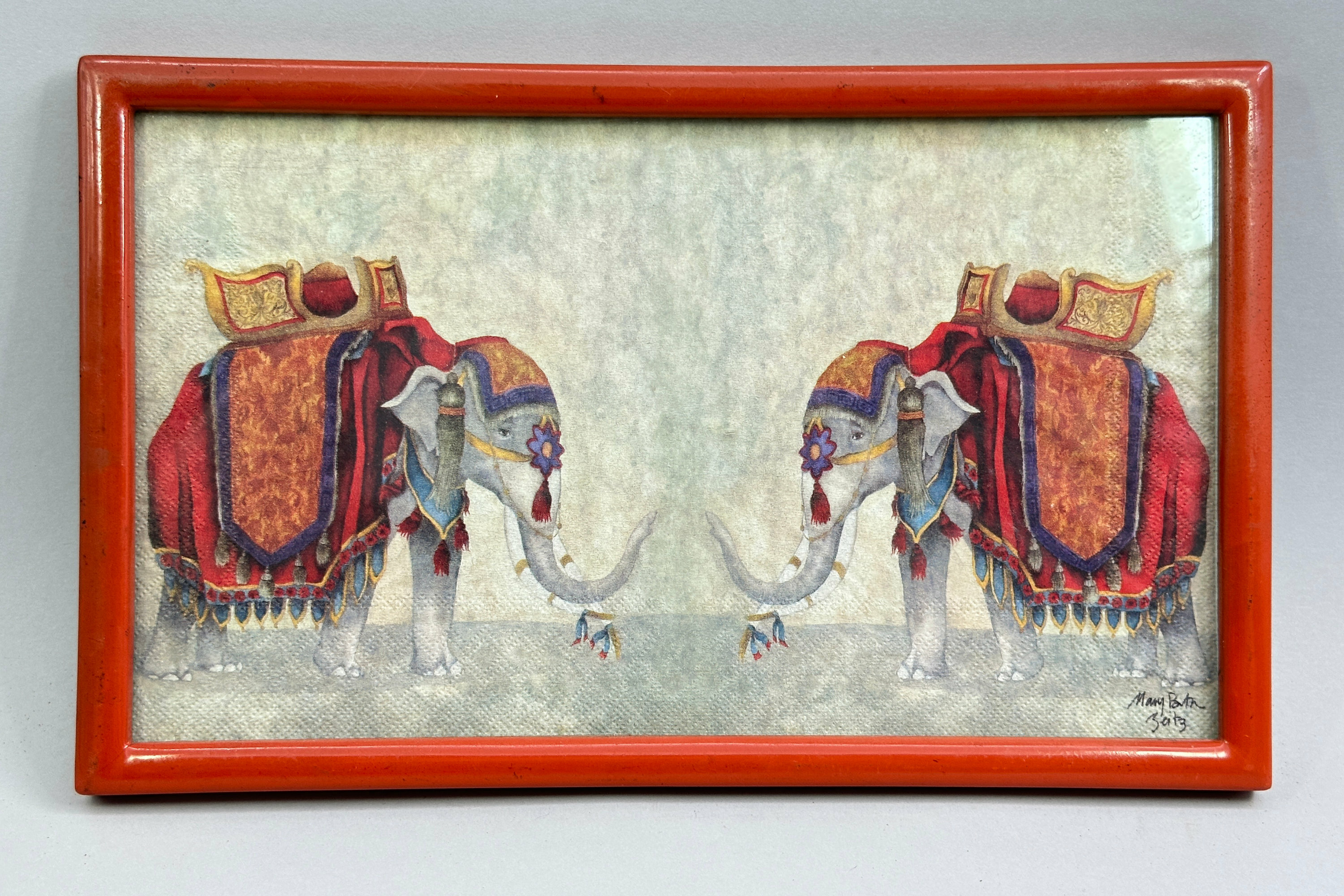
Framed Picture of Two Elephants signed Mary Beth Zeitz and dated 2003
Price: £25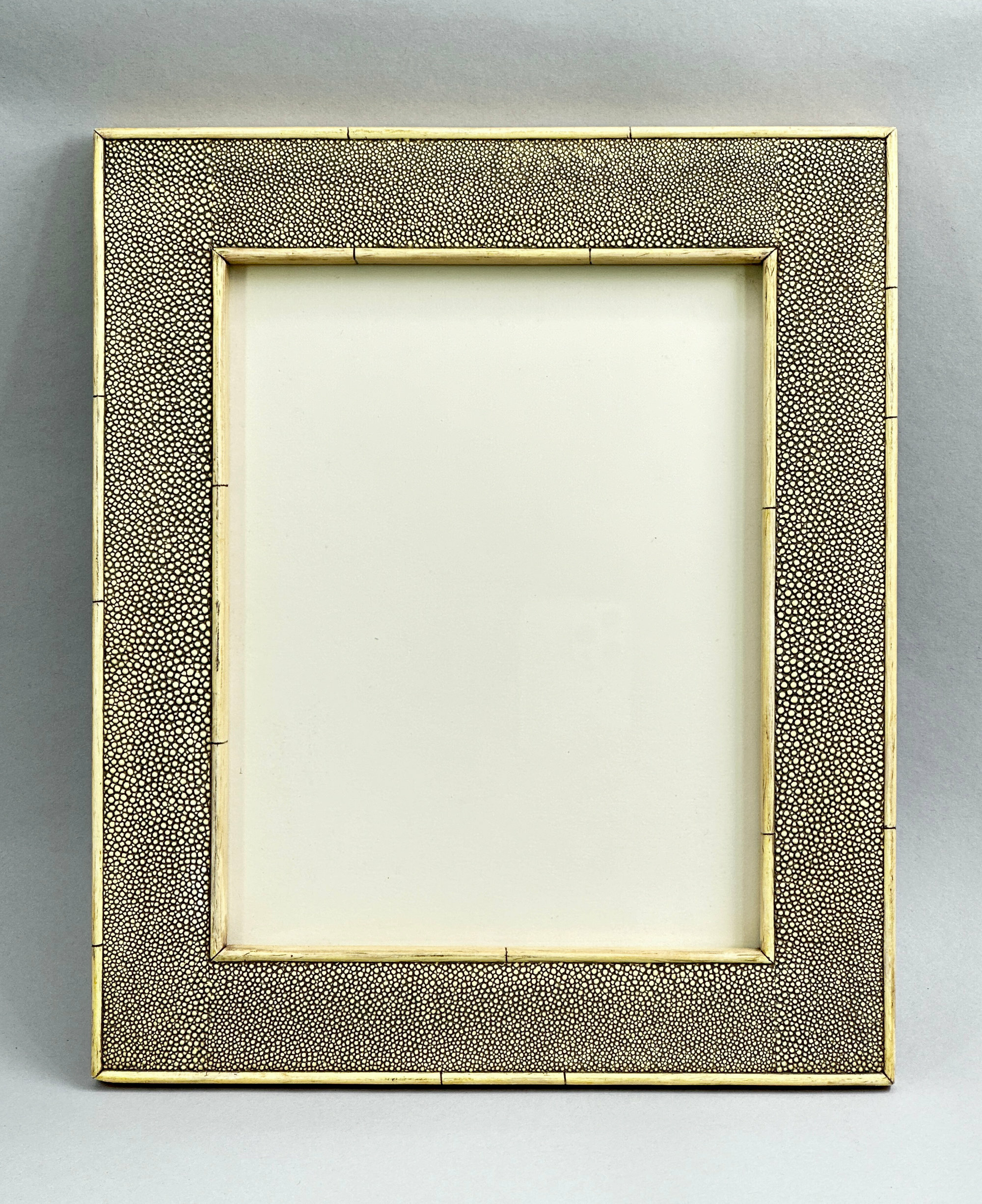
Art Deco Shagreen Picture Frame, 1930s
Price: £110Shagreen is a natural hide, typically from shark, stingray or dogfish, worked through special processes to produce a granular surface effect. Known in China and Japan from the earliest times and popular in Europe in the eighteenth century Shagreen enjoyed its greatest popularity in the Art Deco period where it was used as a covering for writing desks and well-dressed cabinetry and smaller items such as the picture frame we have here. The clean lines of this piece and the palette of colours employed fit exactly with the ethos of the Art Deco period and a dating to the 1930s is extremely likely. A luxury item at the time it could be used now to provide enhanced presentation of a favourite image adding to it a hint of true elegance.

Octagonal Agate Mortar Bowl, C20th
Price: £25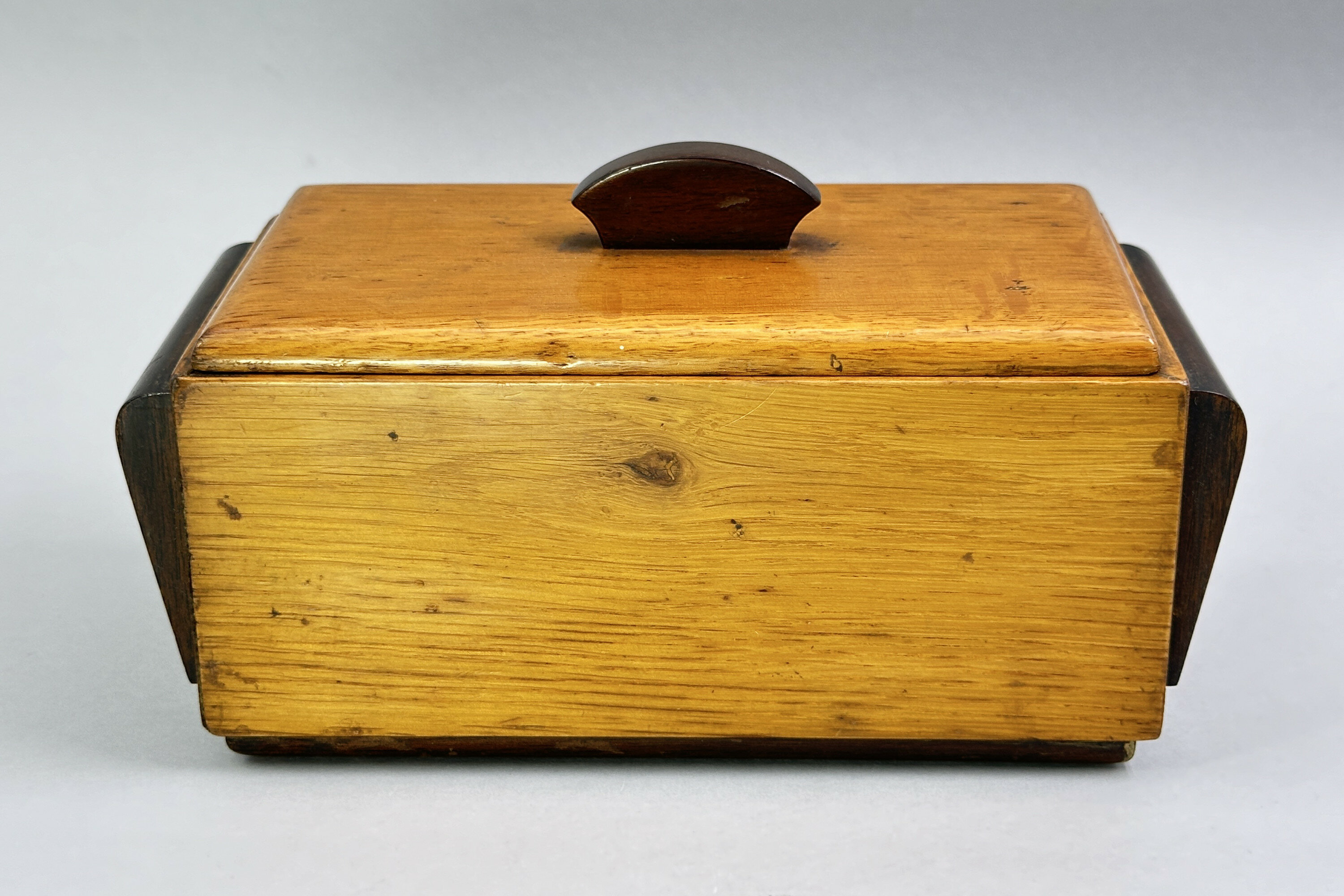
Art Deco Wooden Cigarette Box, 1930s
Price: £25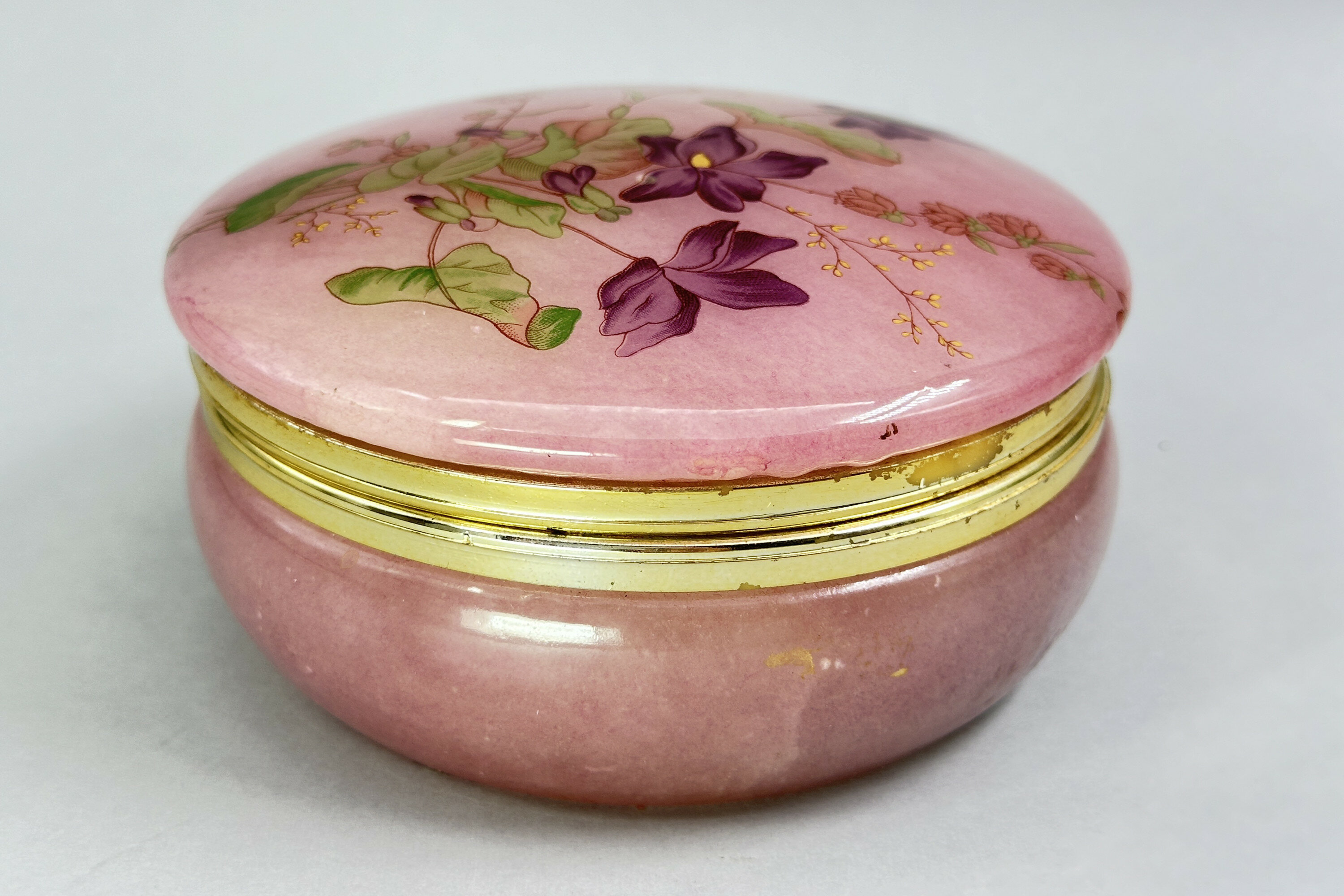
Pink Alabaster Box and Cover, Italy late c20th
Price: £25
Bead necklace with jade carnelian and silver beads c1990
Price: £75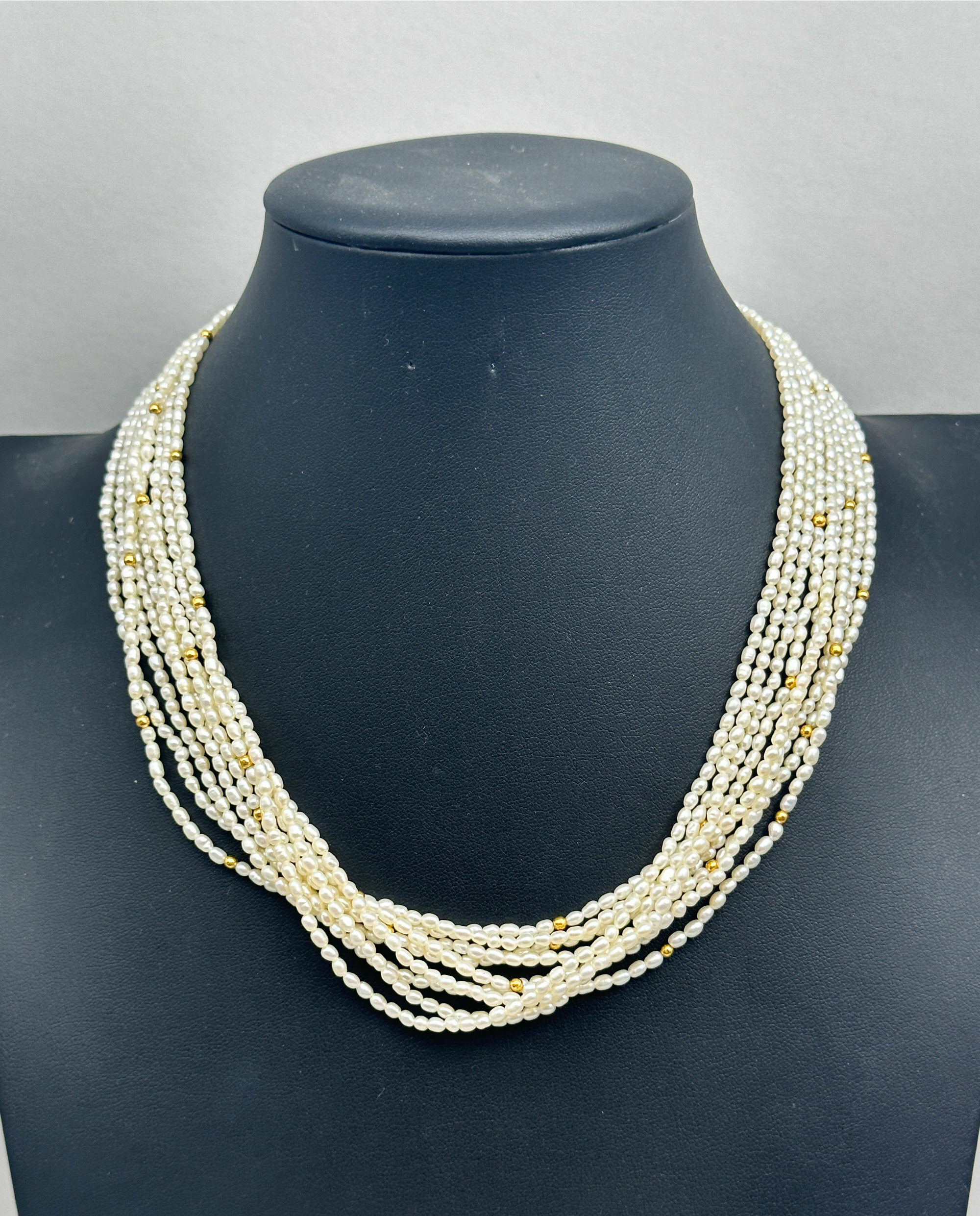
Nine strand authentic seed pearl necklace 1980s
Price: £45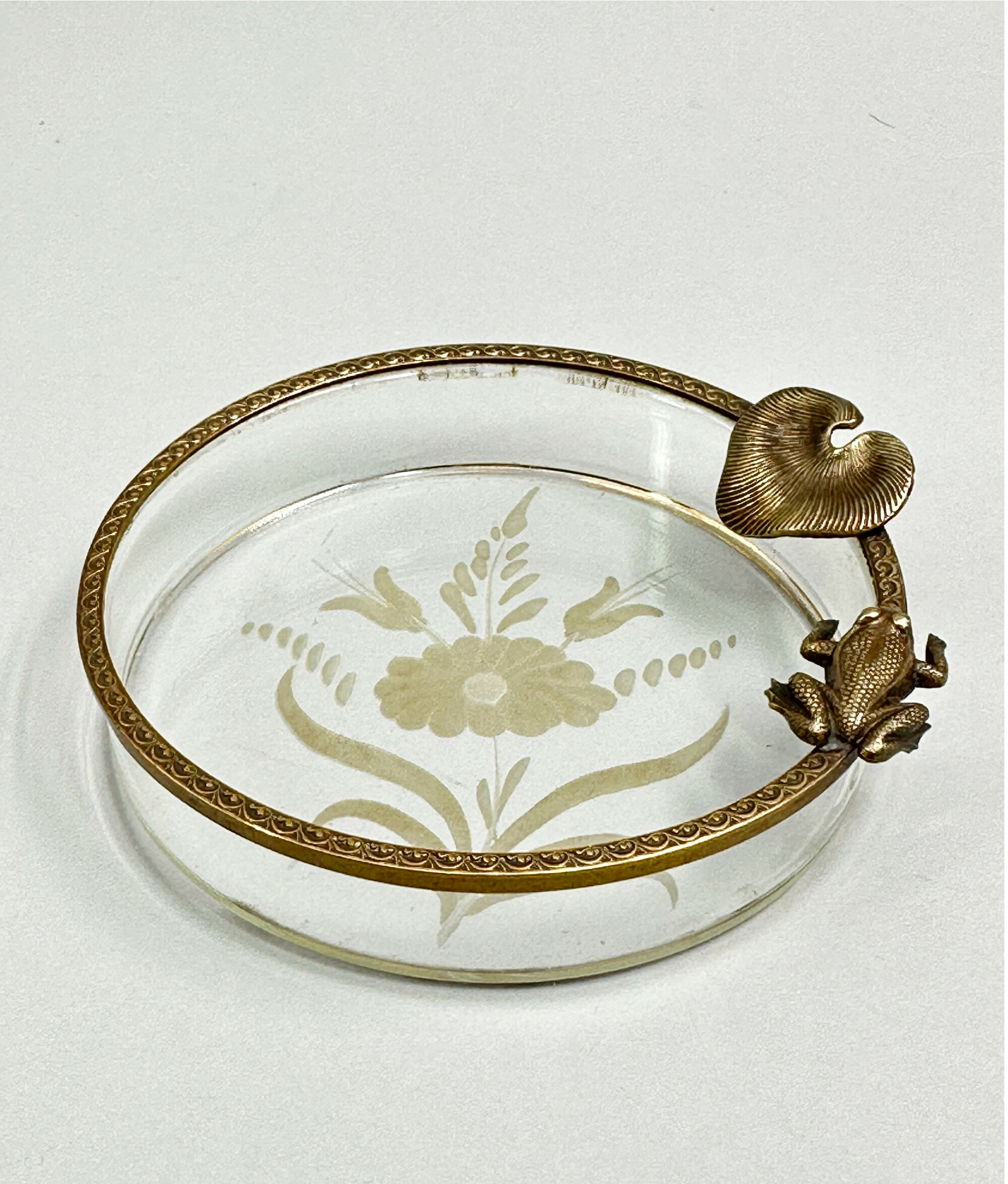
Fine Quality engraved French Glass Dish with naturalistic Ormolu Mounts, early C20th
Price: £25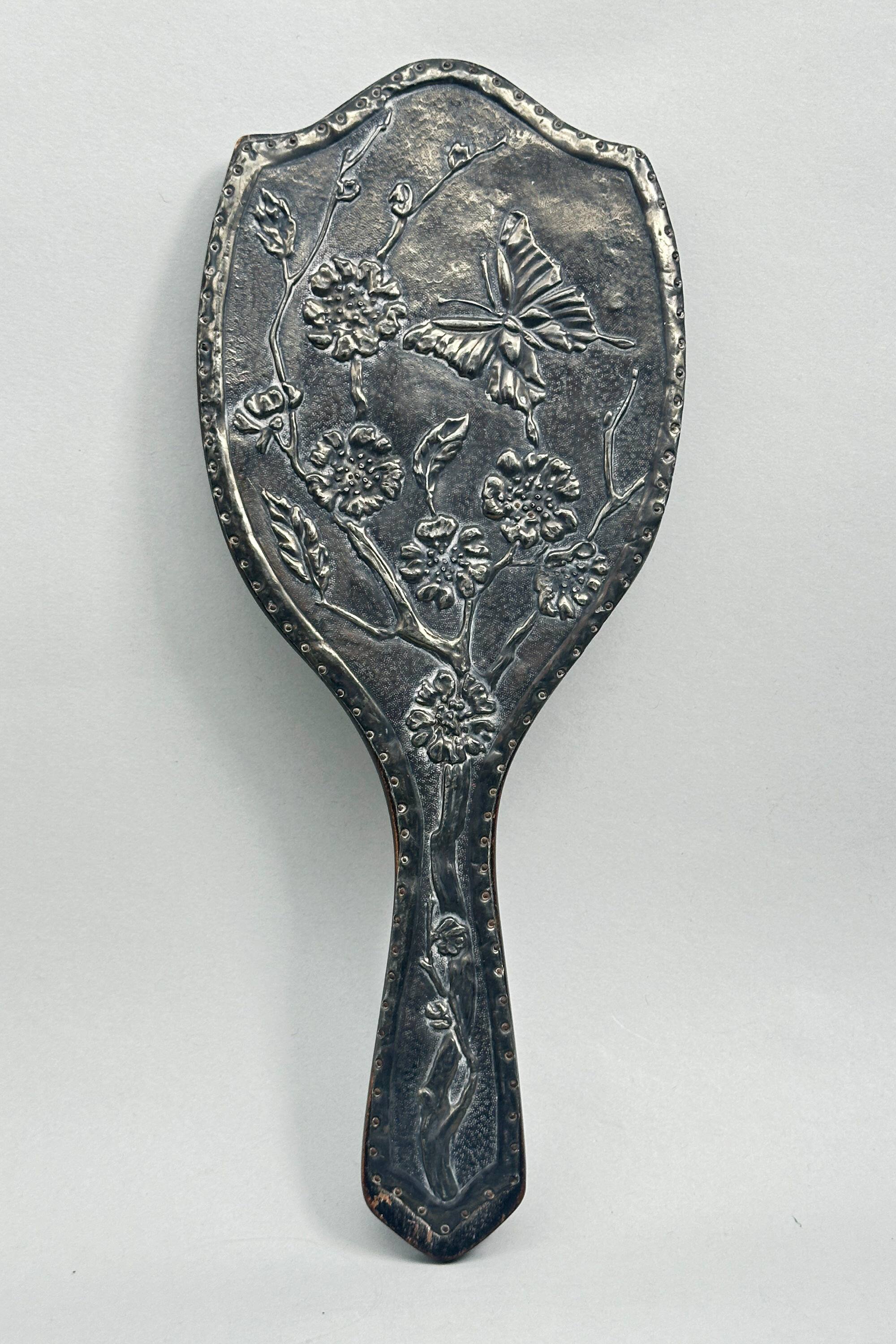
Arts and Crafts Hand Mirror with Repousse Decoration, circa 1900
Price: £55Elements of two contrasting contemporary styles combine here with features from both the Arts and Crafts and the Art Nouveau movement. The hammered pewter with the almost rustic nail head fixings and the red bead reflect the former but the elegant depiction of the lotus and butterfly, with more than a hint of the Orient, reflect the latter. The maker is anonymous but doubtless British and clearly a highly skilled craftsman. Much thought and expertise went into the design of this piece which would be a desirable addition for collectors of either or both of the pieces made under the influence of these two highly popular design movements.
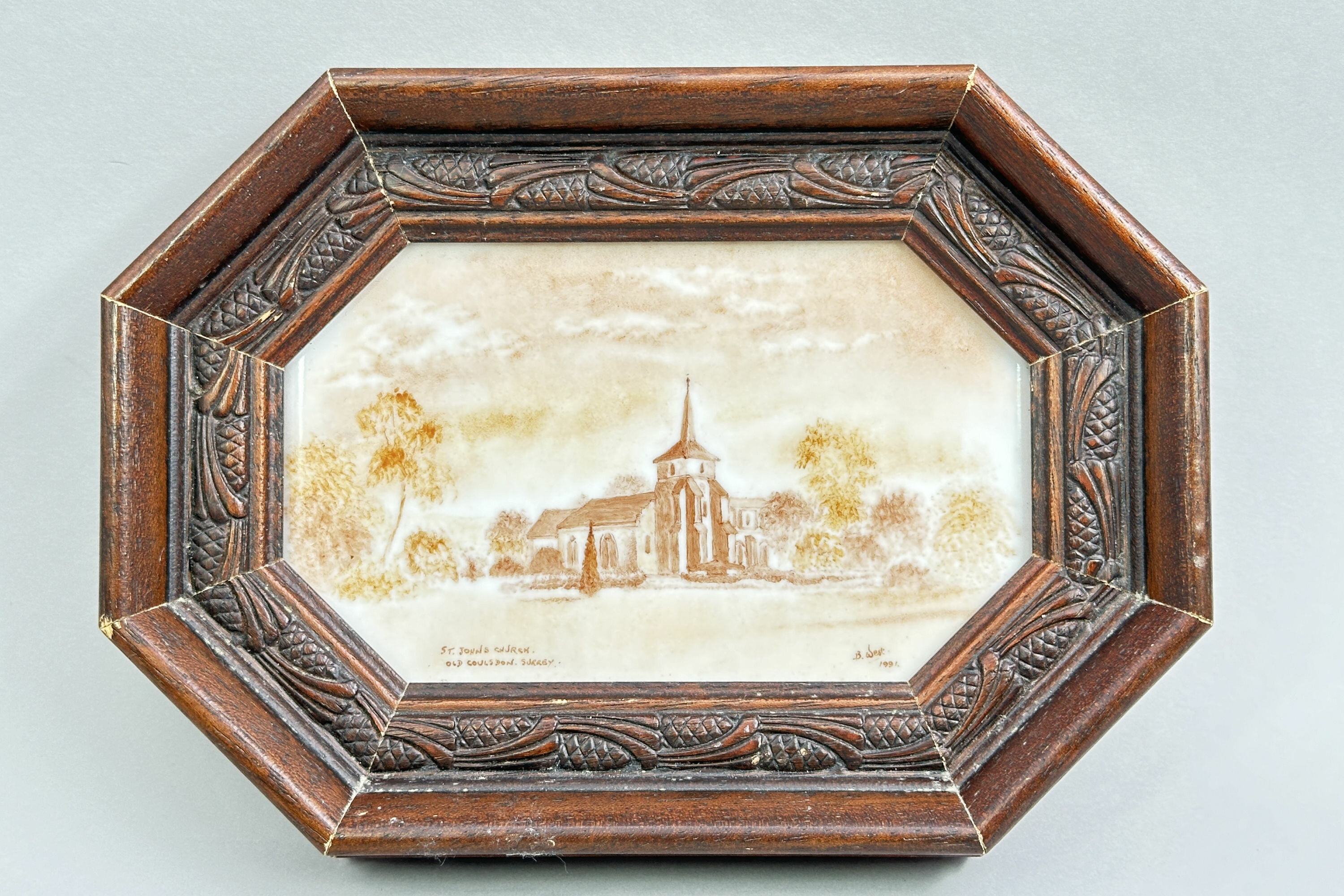
Framed Ceramic Plaque depicting St John’s Church, Old Coulsdon, late C20th
Price: £25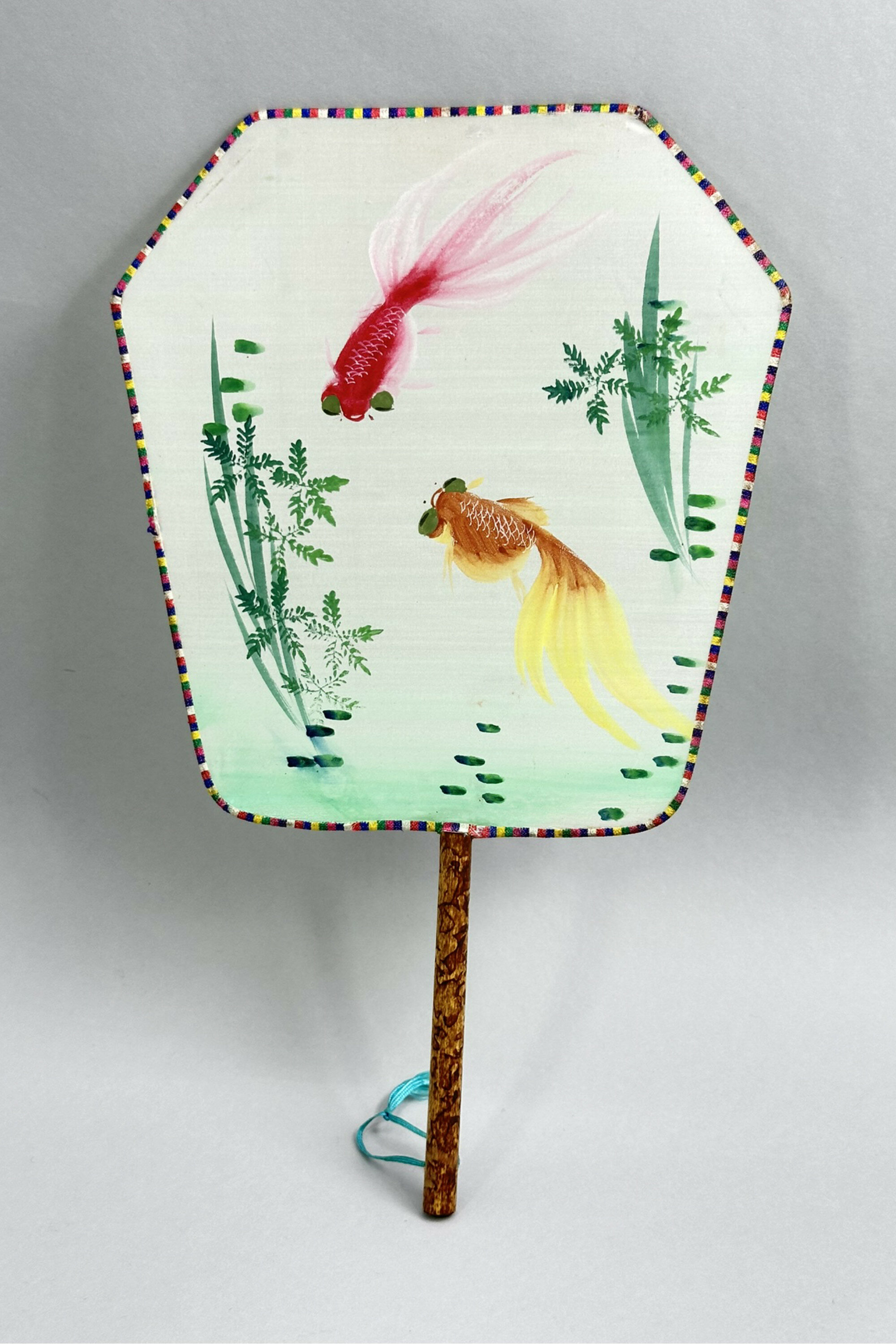
Chinese Fan, painting on silk, 1960s
Price: £15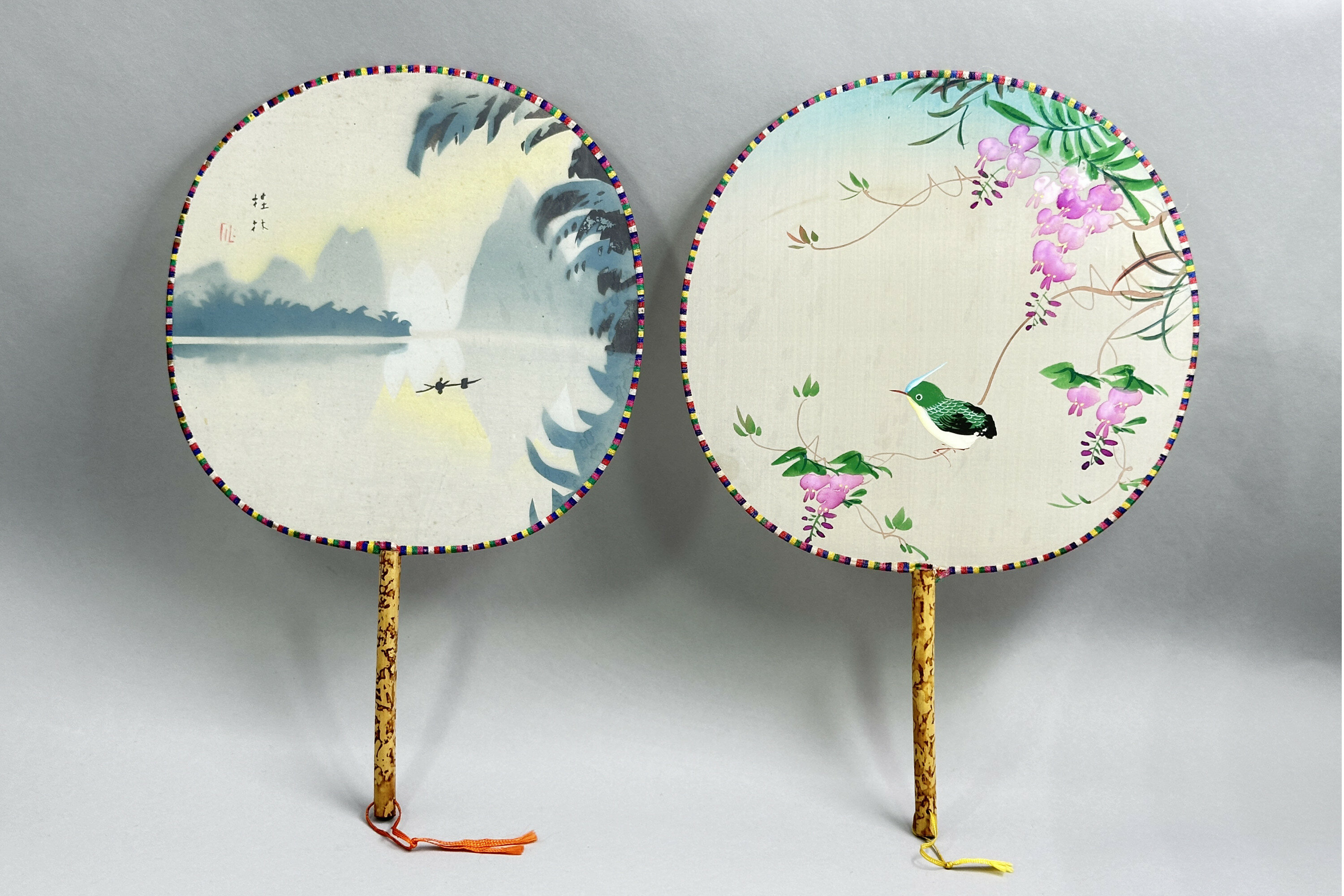
Two Chinese Fans, painting on silk, 1960s
Price: £15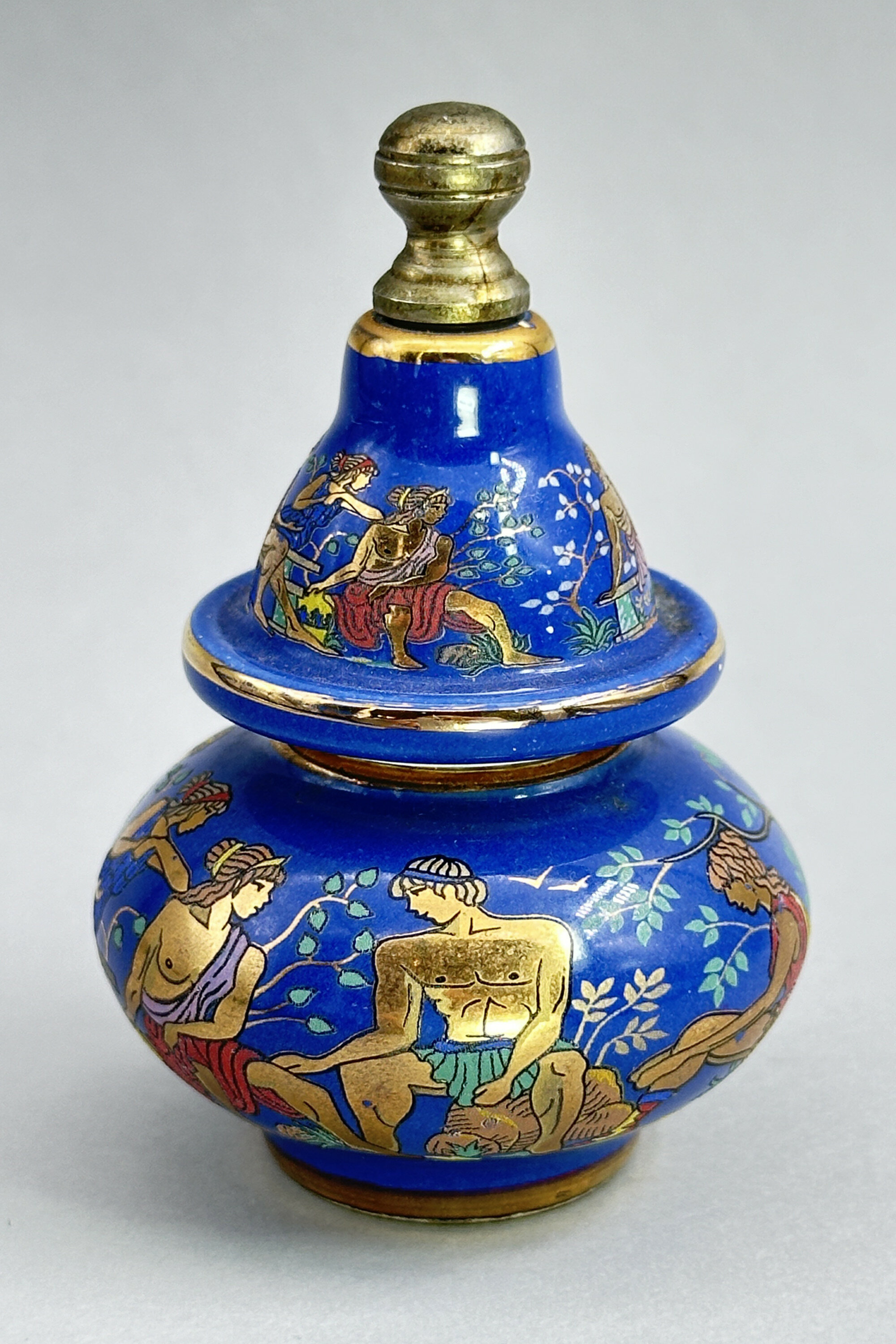
Novelty Perfume Bottle with Grecian Scenes, late C20th
Price: £15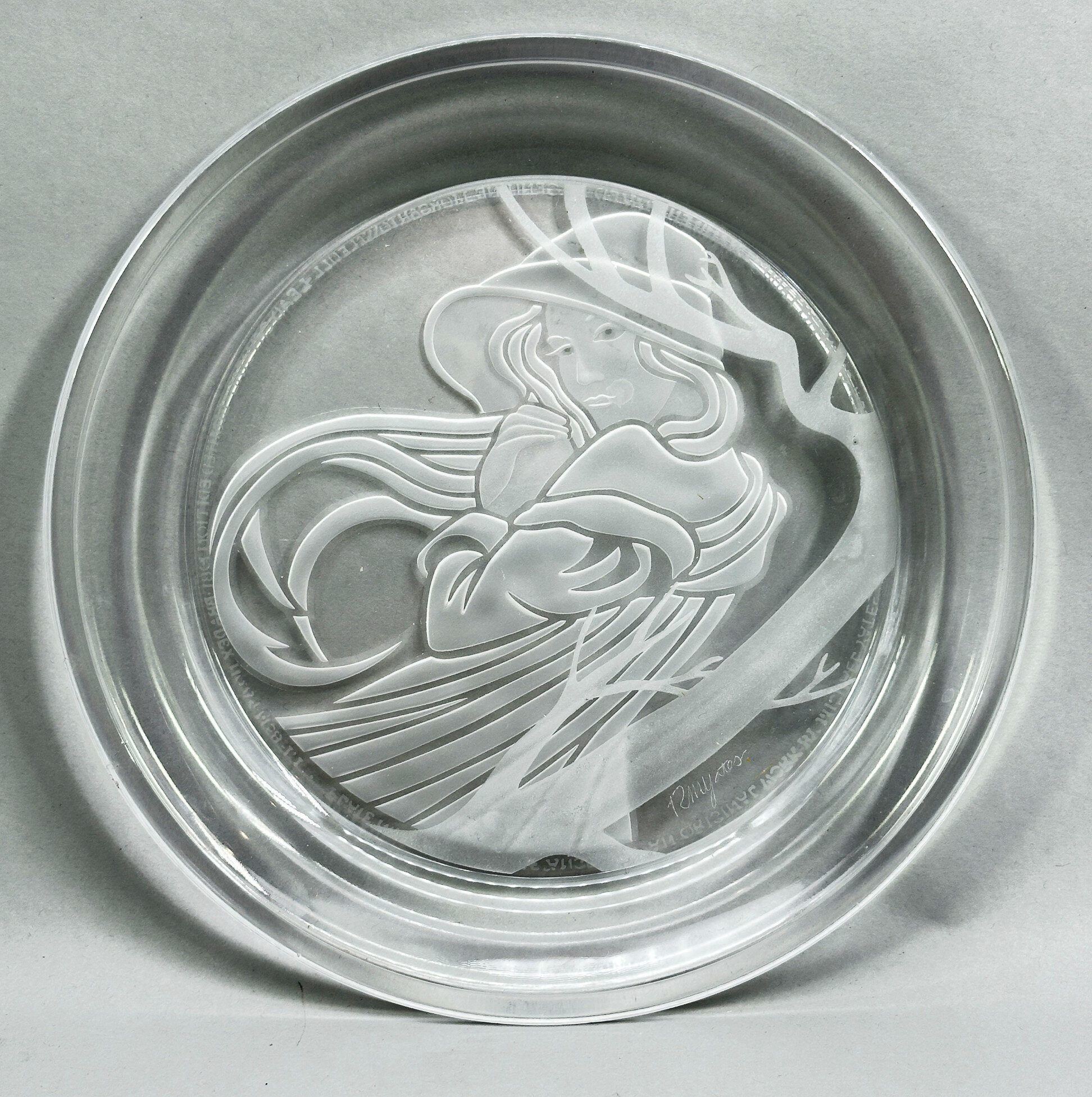
Engraved Glass Dish, Angelica, by Michael Yates, Country Ladies Series, 1981
Price: £20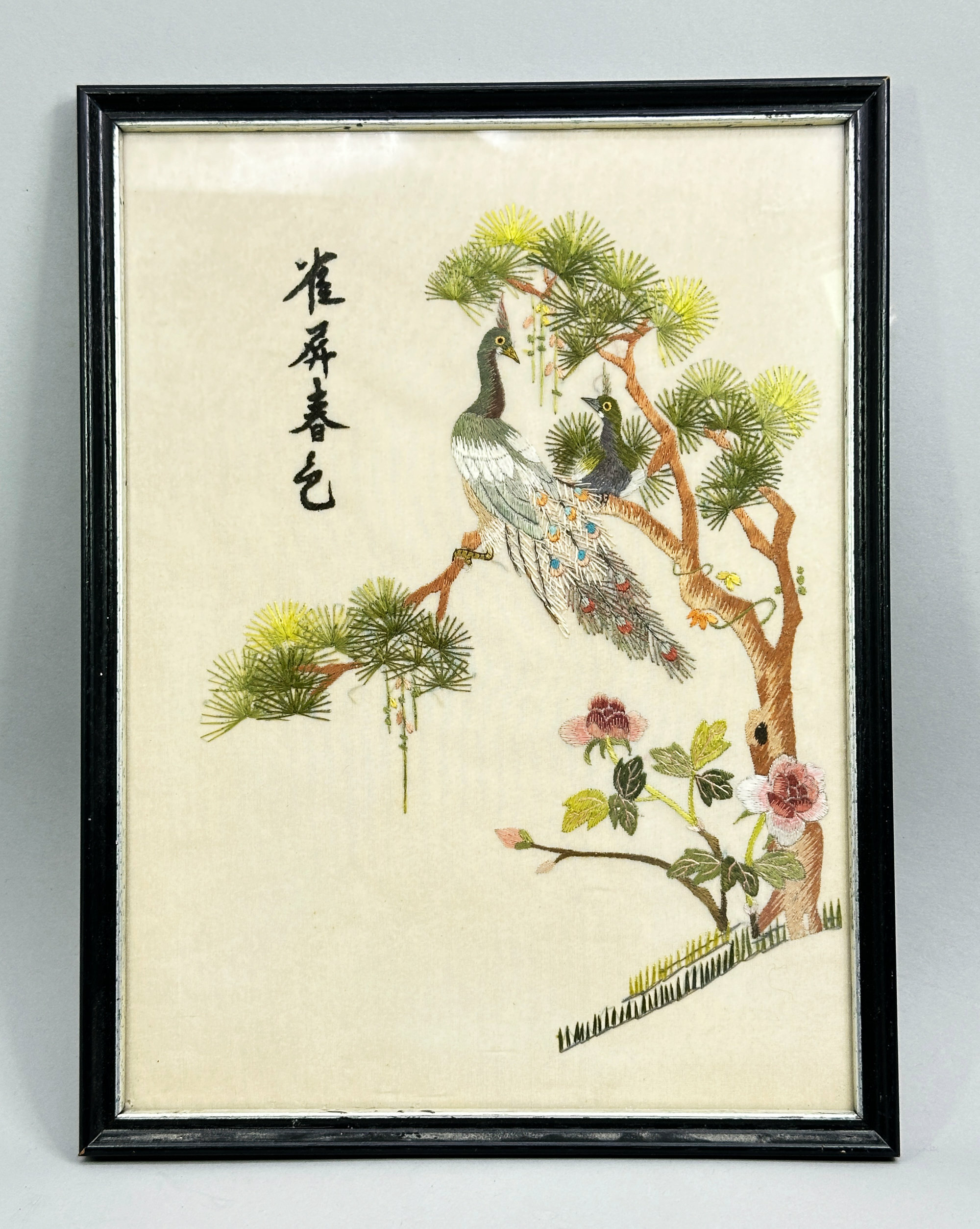
Framed Chinese Embroidery Silk Textile, signed, second half C20th
Price: £25
Vintage hand carved Fossil Stone Trinket Box and Cover, C20th
Price: £25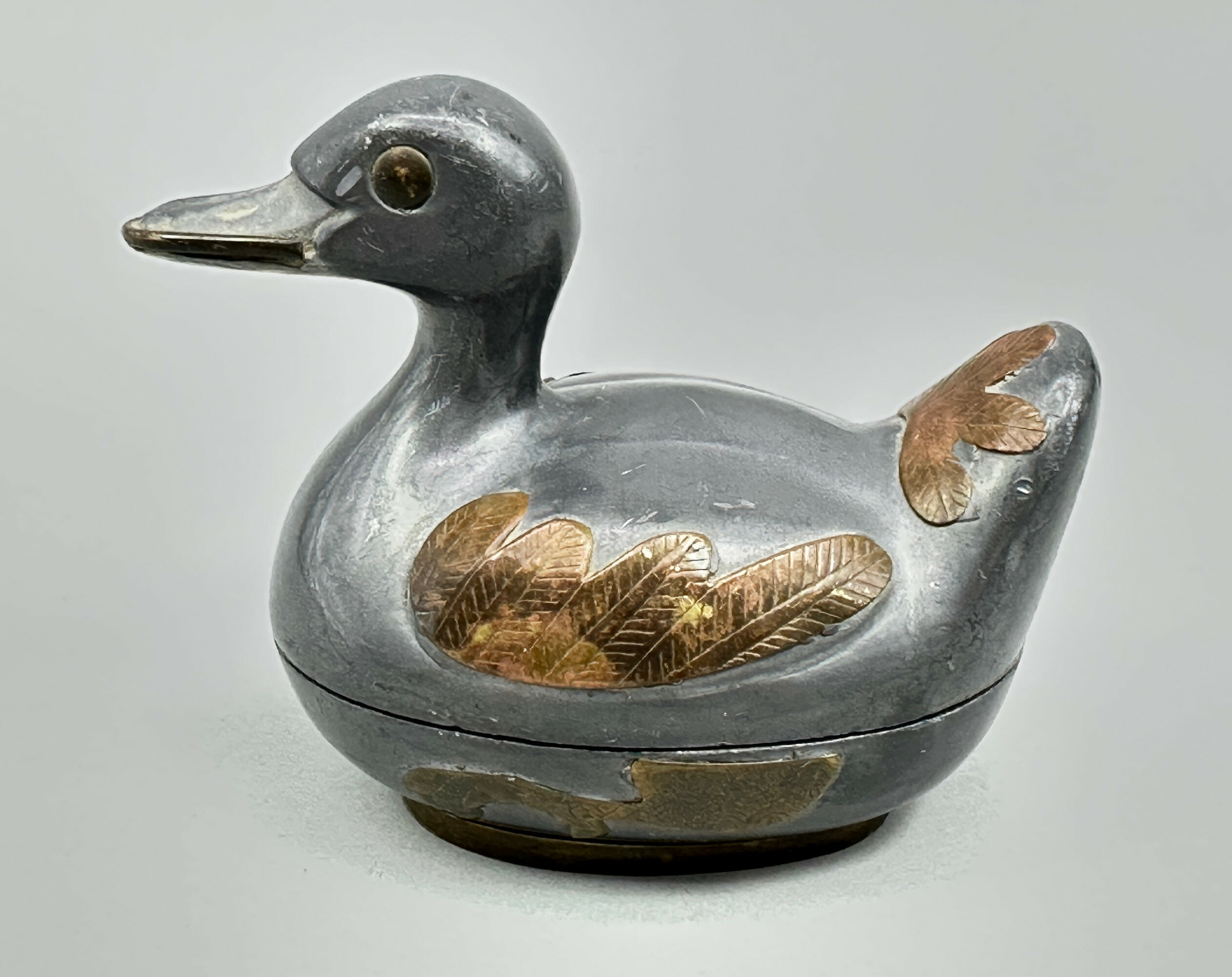
Pewter and brass box and cover in the form of a Mallard Duck, Gatco, Hong Kong, 1960s
Estimate: £20 – 30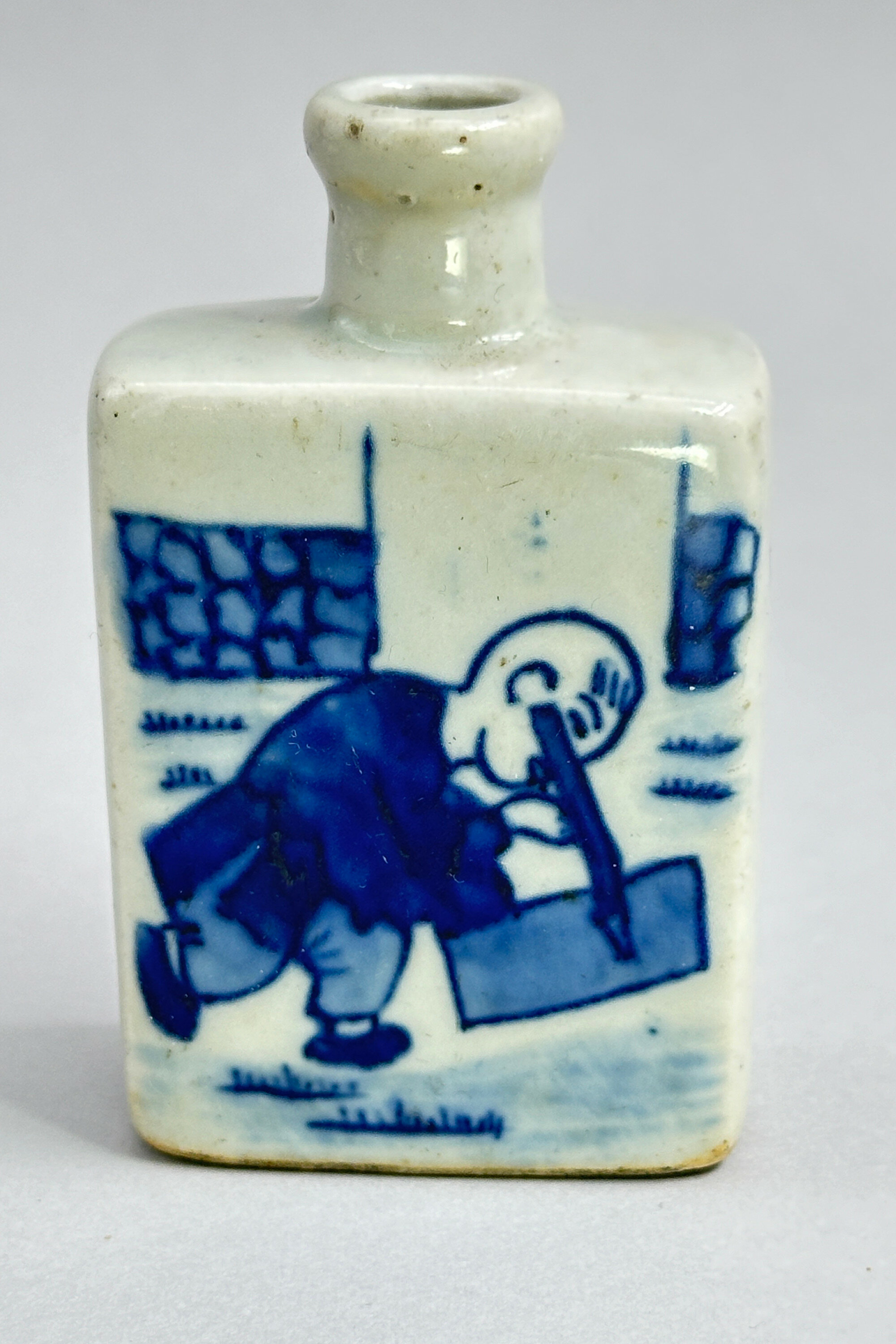
Chinese Blue and White Snuff Bottle circa 1900
Price: £45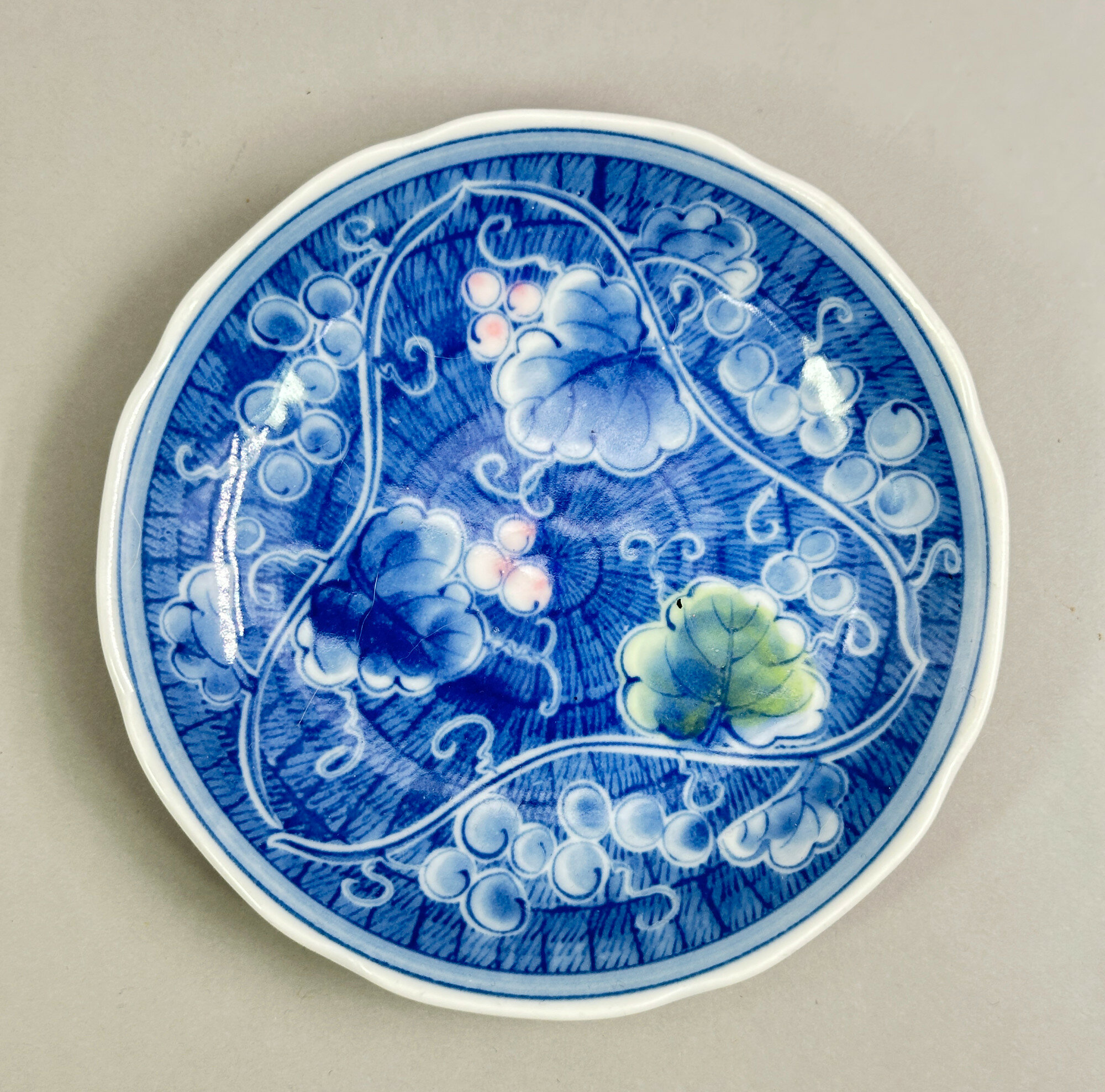
Japanese Arita Blue and White Saucer decorated Gourd and Grapes, mid C20th
Price: £15
Chinese Mandarin Pattern Saucer circa 1780
Price: £45This is a typical example of the ‘Mandarin’ pattern produced by the Chinese in the late eighteenth century for export to the West where it enjoyed great popularity. The name derives from the male court figures, mandarins, who form such an important component of the designs. The scenes are carefully composed with much charm and rendered in a wide variety of coloured enamels with much emphasis on deep pink (‘Famille Rose’) and iron red. A wide variety of wares were produced in the pattern including vases, bowls, dinner services and tea sets, as here, where there would have been a set of bowls and saucers along with matching serving items. The charm and quality of this piece speaks for itself and presents an excellent and collectible example of this opulent pattern from the eighteenth century.
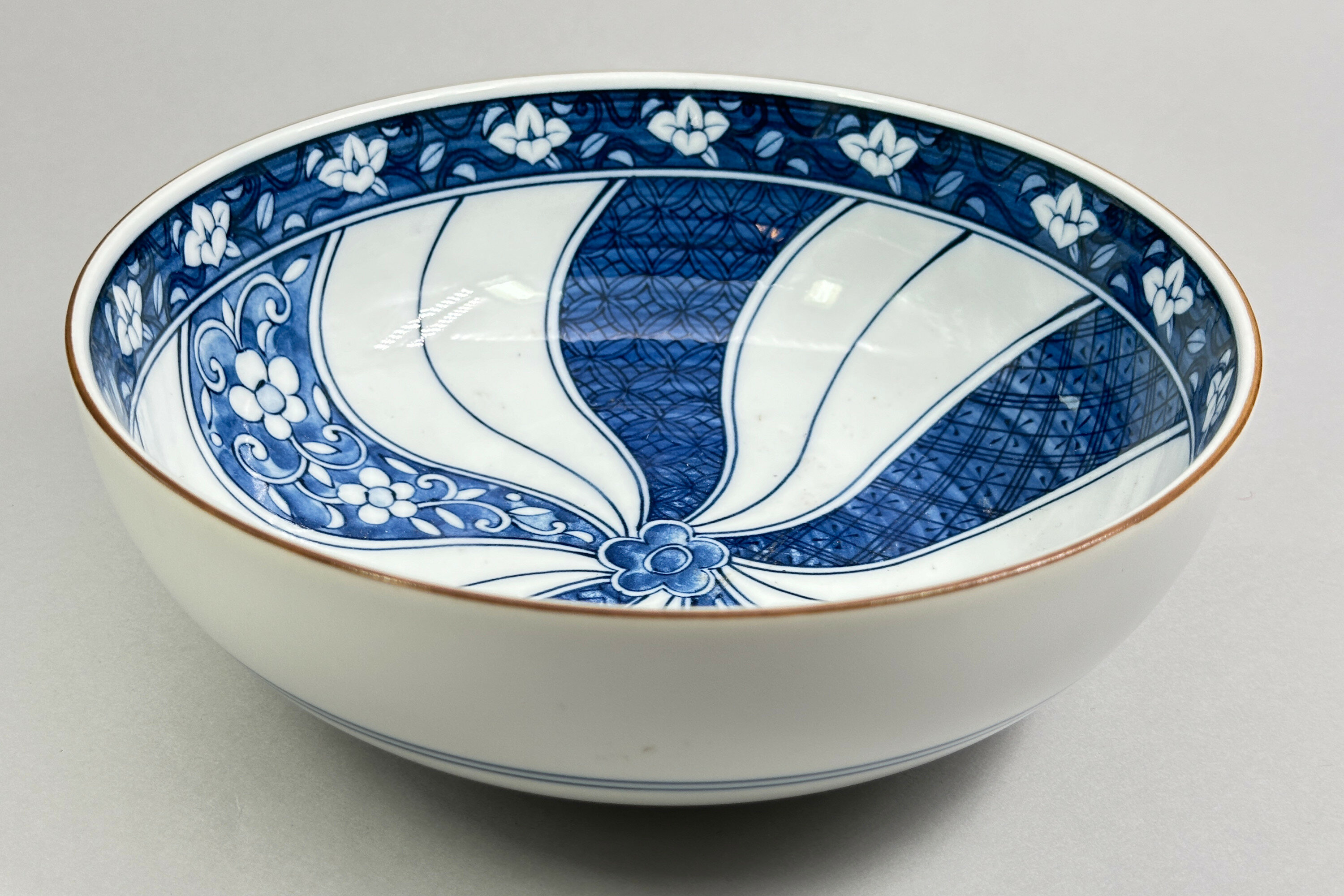
Japanese Arita Blue and White Bowl, first half C20th
Price: £25This ‘swirling’ pattern is sometimes found on late nineteenth century polychrome plaques. Dating here is probably later, perhaps to around 1920, in the middle of the Taisho period (1912 – 1926), but care has been taken with this piece and the mark, which unfortunately cannot be deciphered, no doubt denotes the studio which created it.
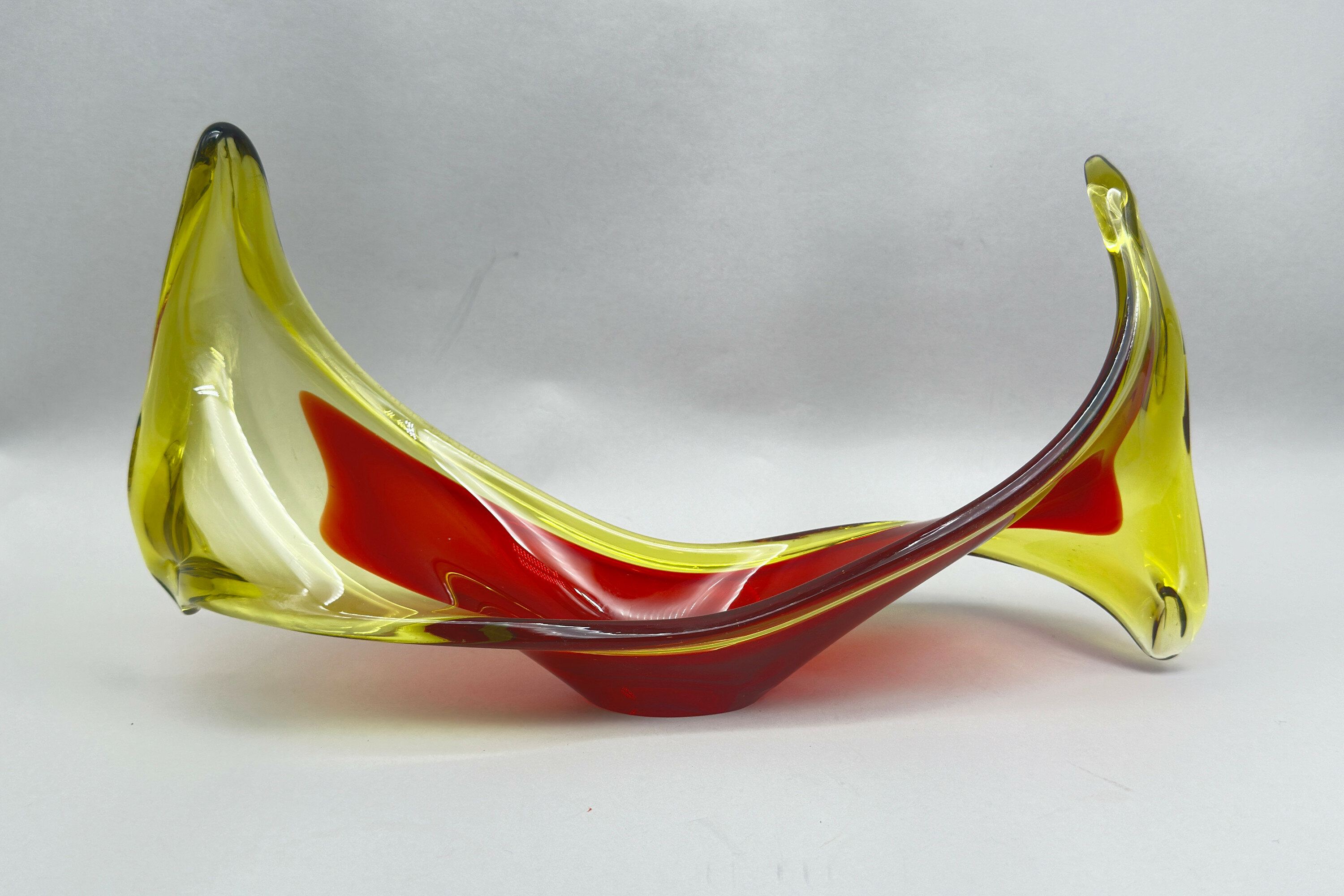
Viartec Murano Style Selenium Red & Orange Glass Sculptural Dish, Spanish 1950s/1960s
Price: £45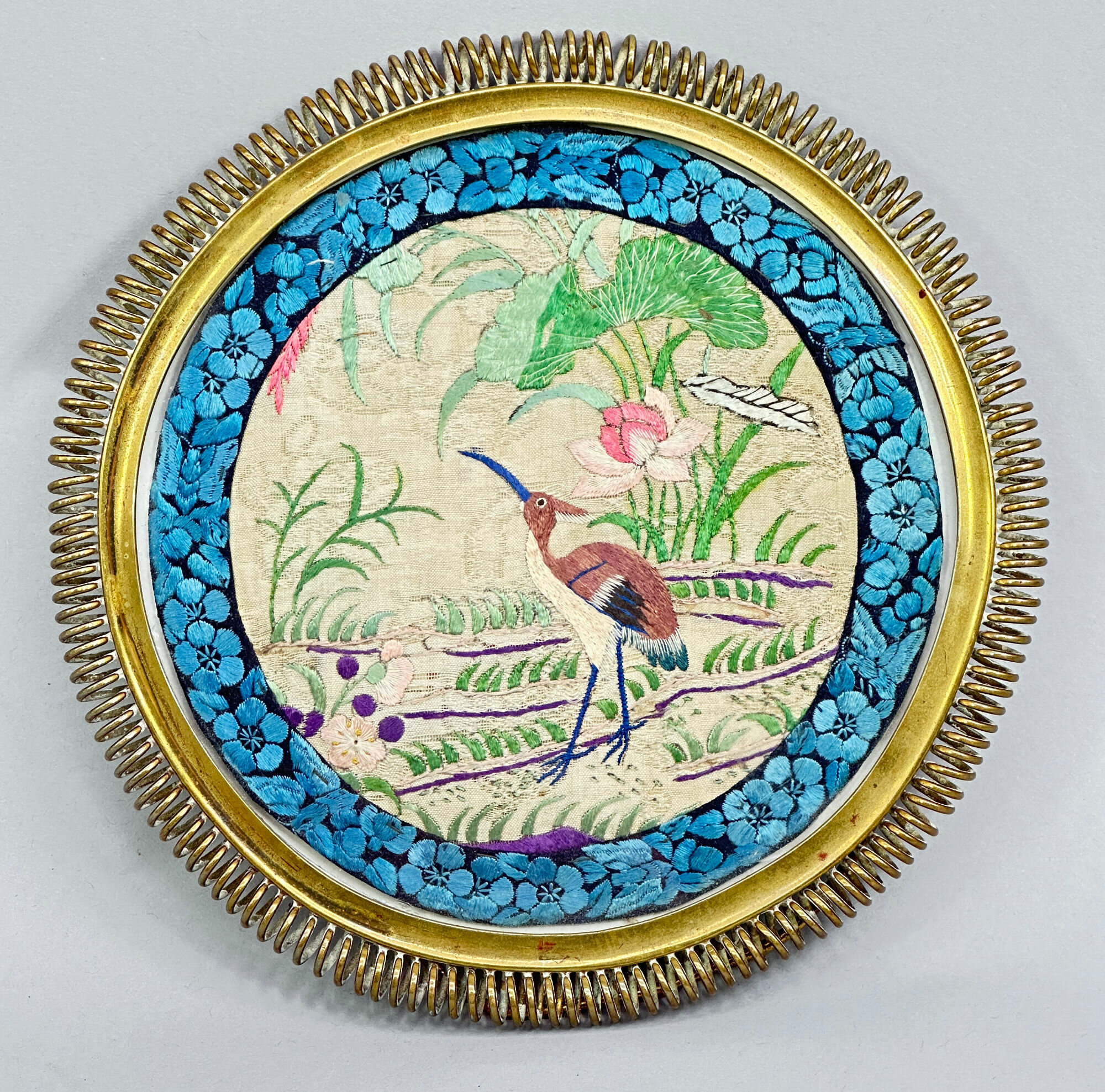
Chinese circular silk textile Panel in later European brass metal Frame, C19th/C20th
Price: £55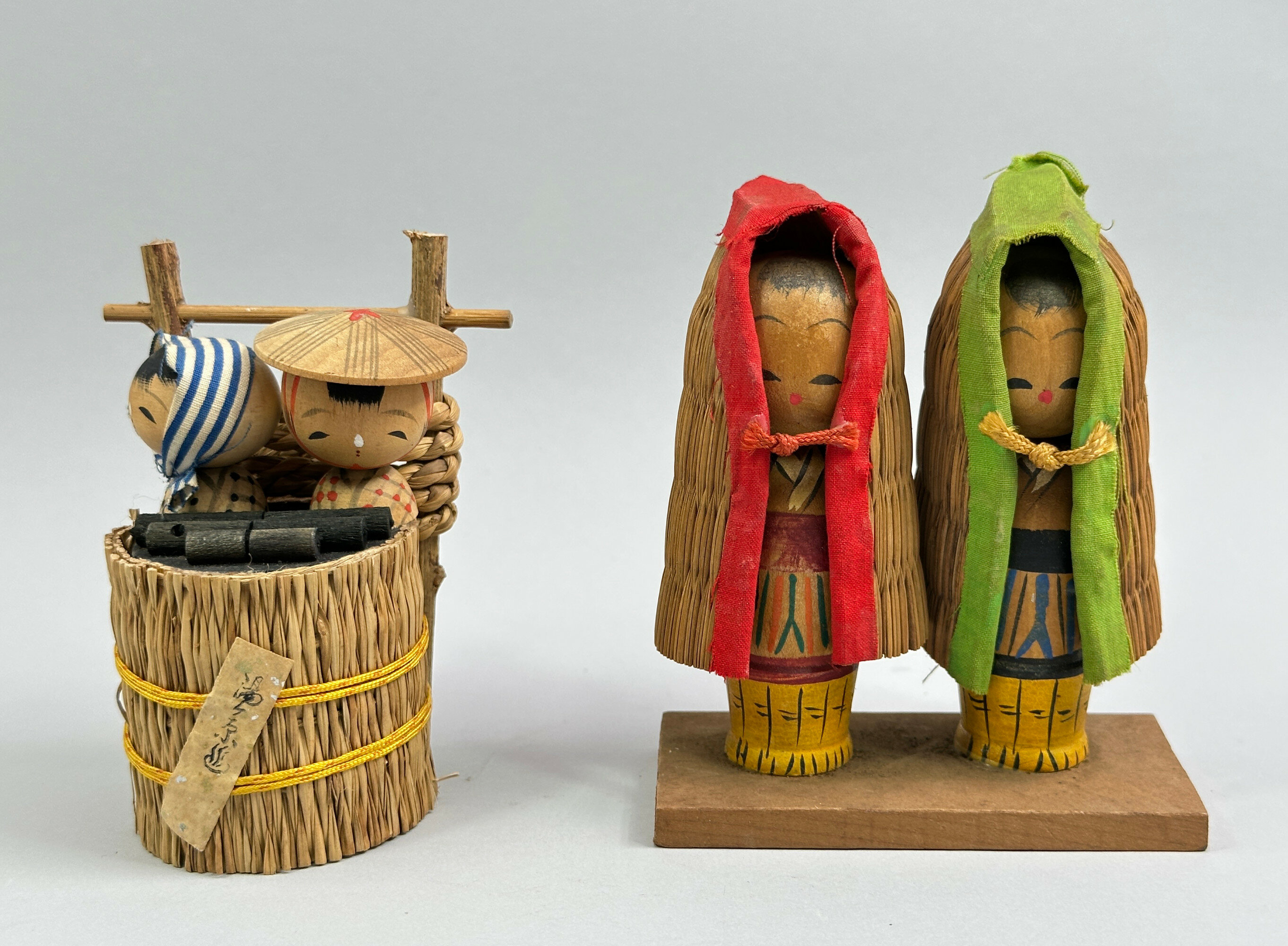
Two Vintage Japanese Kokeshi Doll Groups, C20th
Price: £25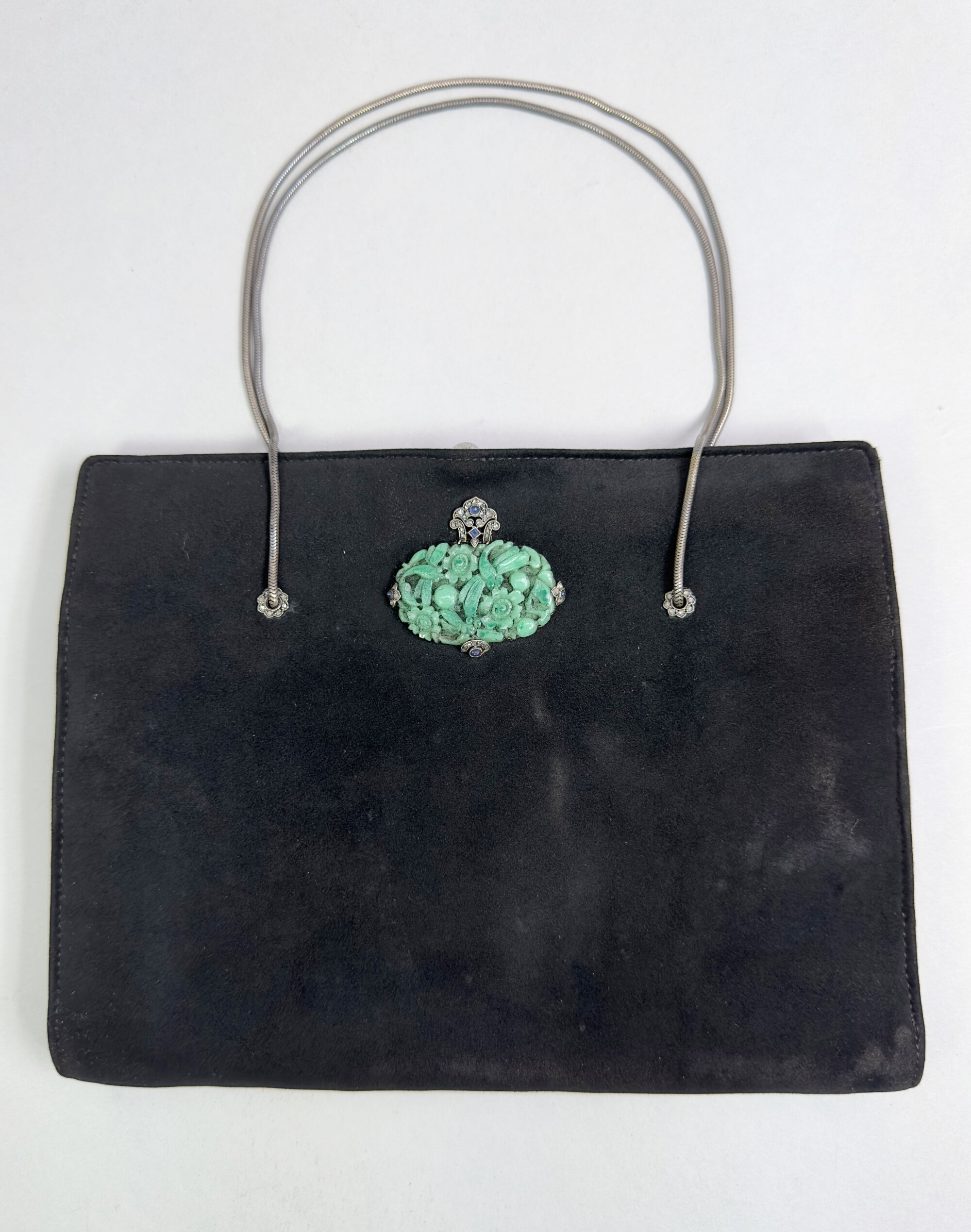
French Art Deco Clutch bag with faux jade insert
Price: £65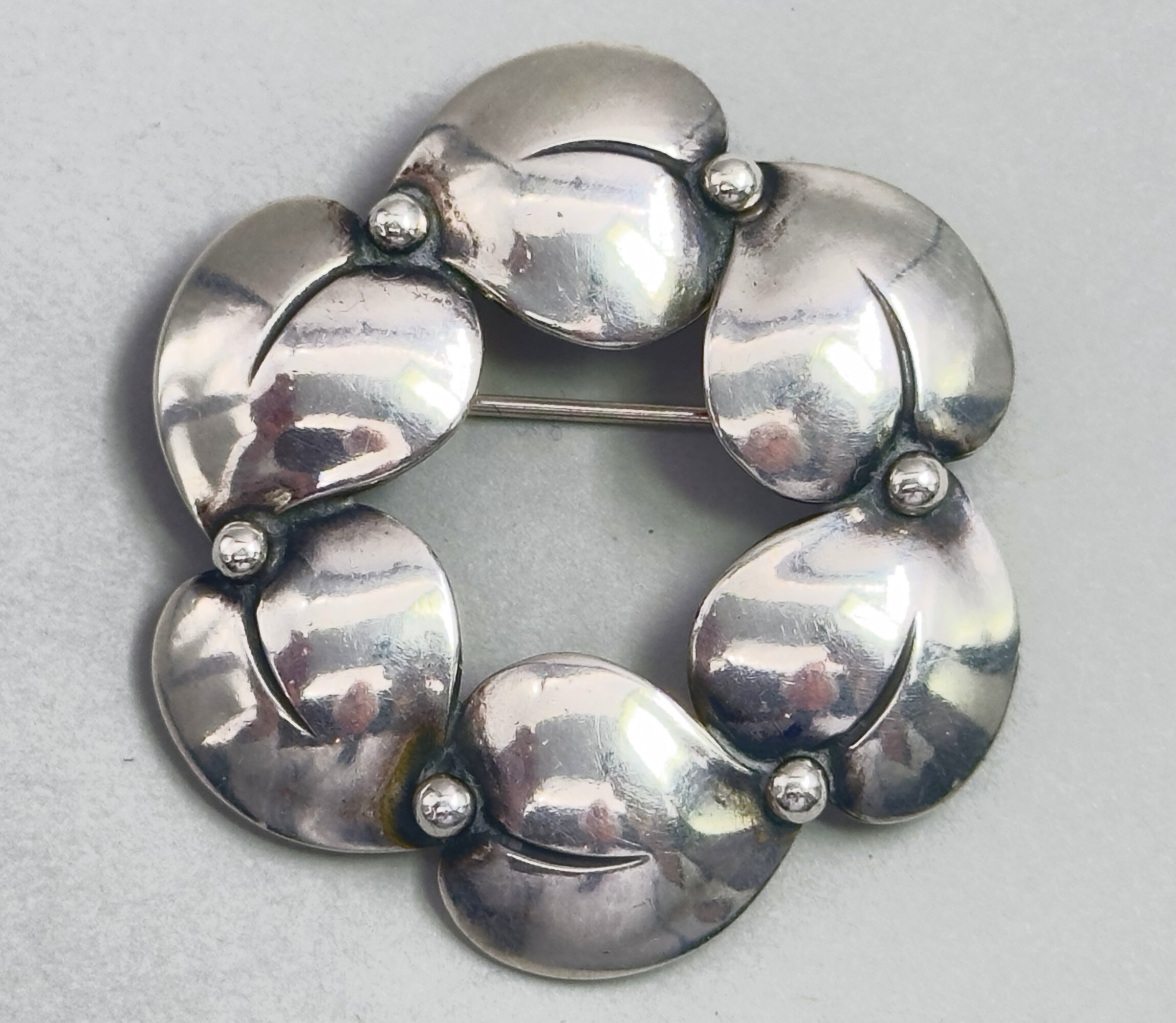
Danish silver brooch, Niels Erik From, marked, c1960
Price: £55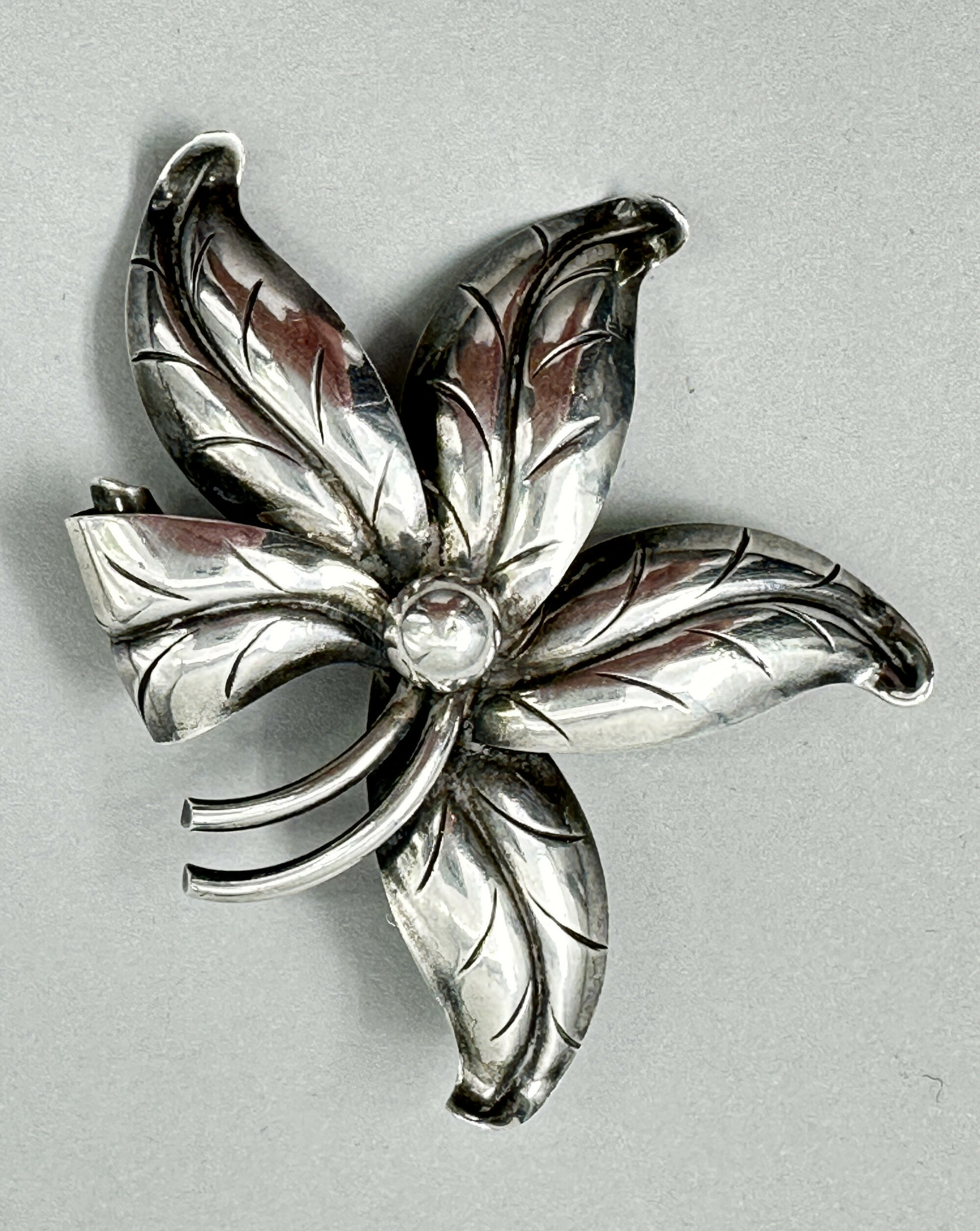
Danish silver floral brooch, Max Standager c1960
Price: £55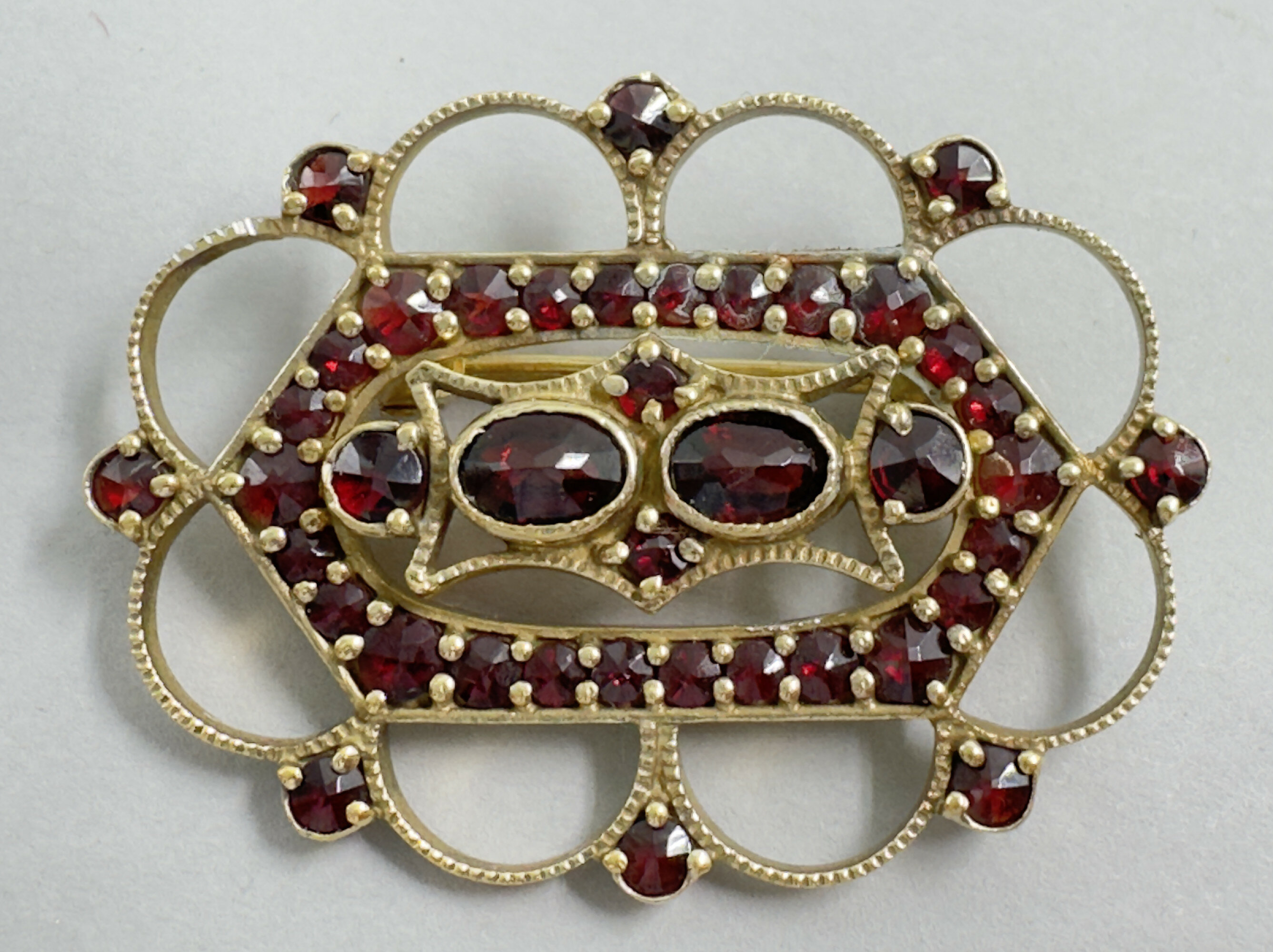
Florentine style garnet and gold brooch, 20th century
Price: £150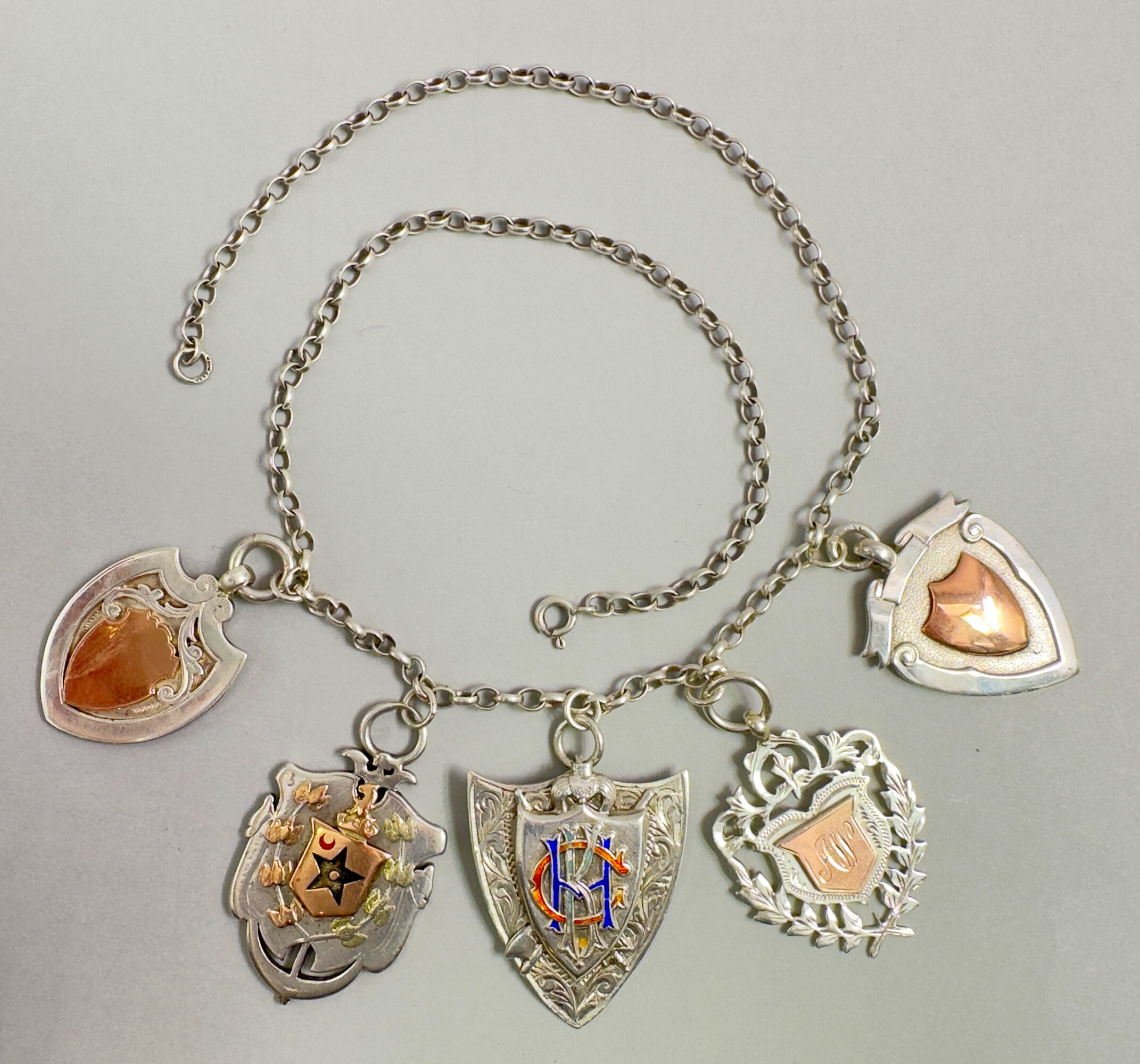
Necklace and earrings constructed with English watch fobs c. 1920-1940
Price: £225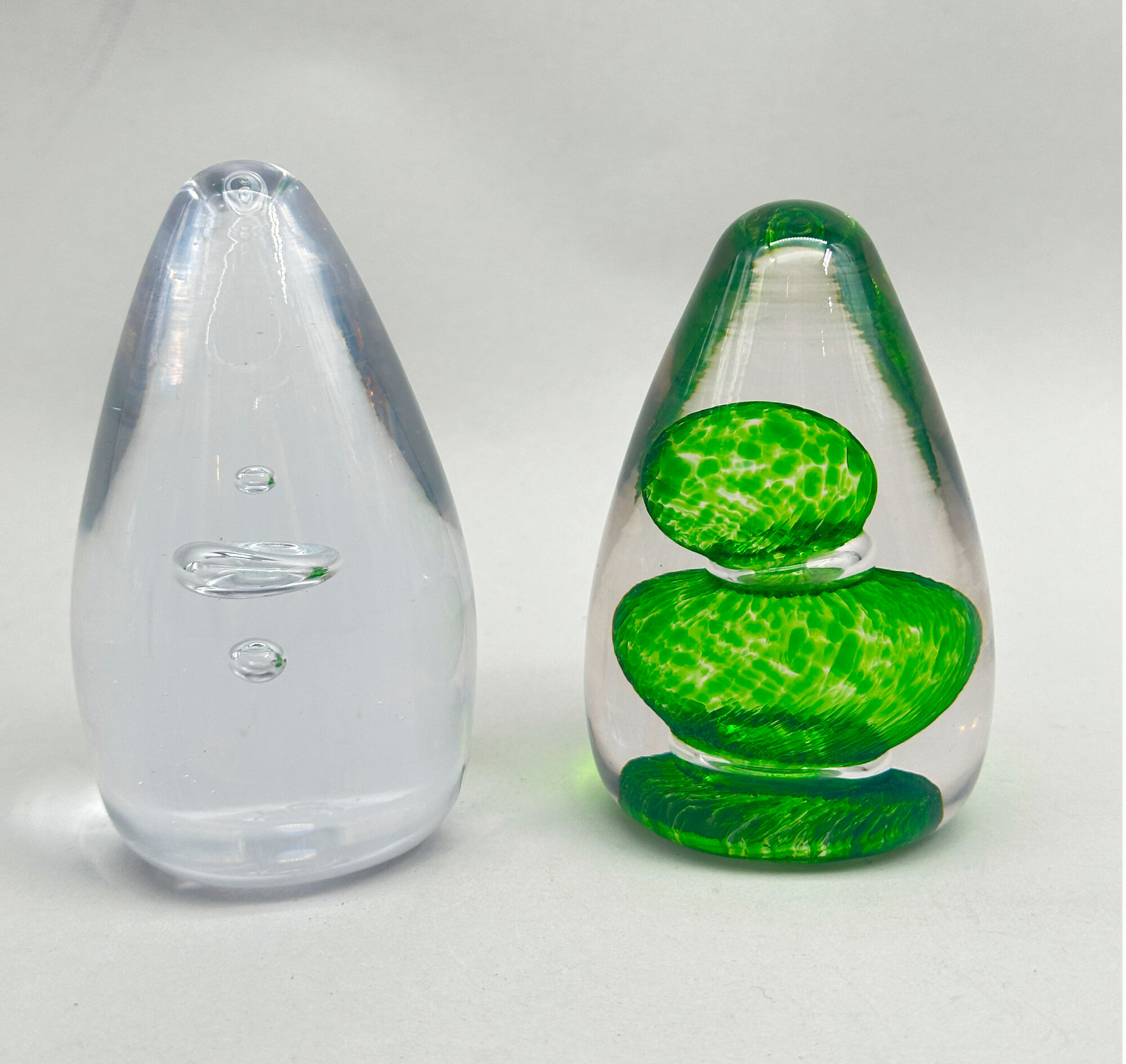
Two Wedgwood Glass paperweights designed by Ronald Stennett-Wilson, late C20th
Price: £40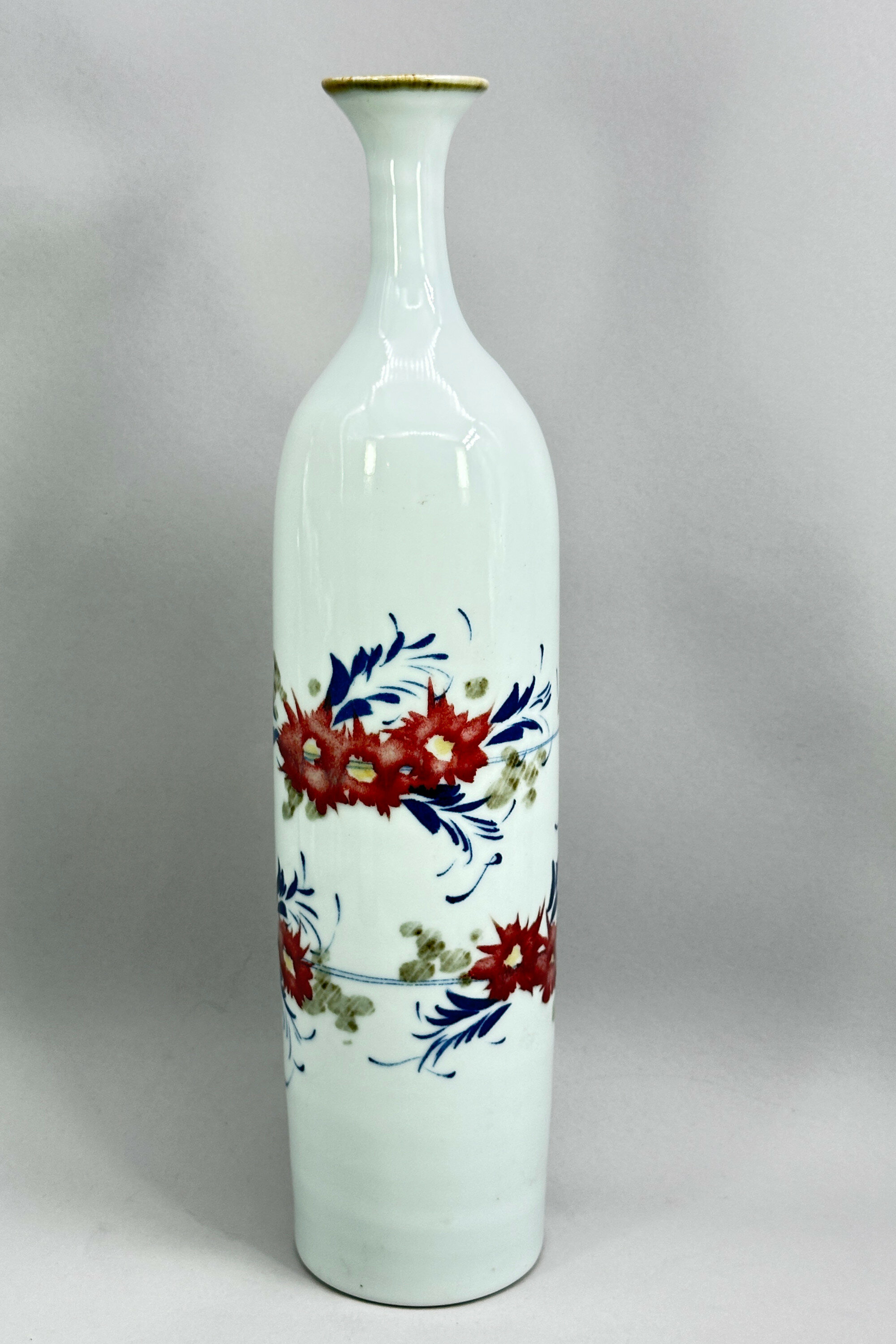
Japanese Studio Pottery Vase, signed, C20th
Price: £75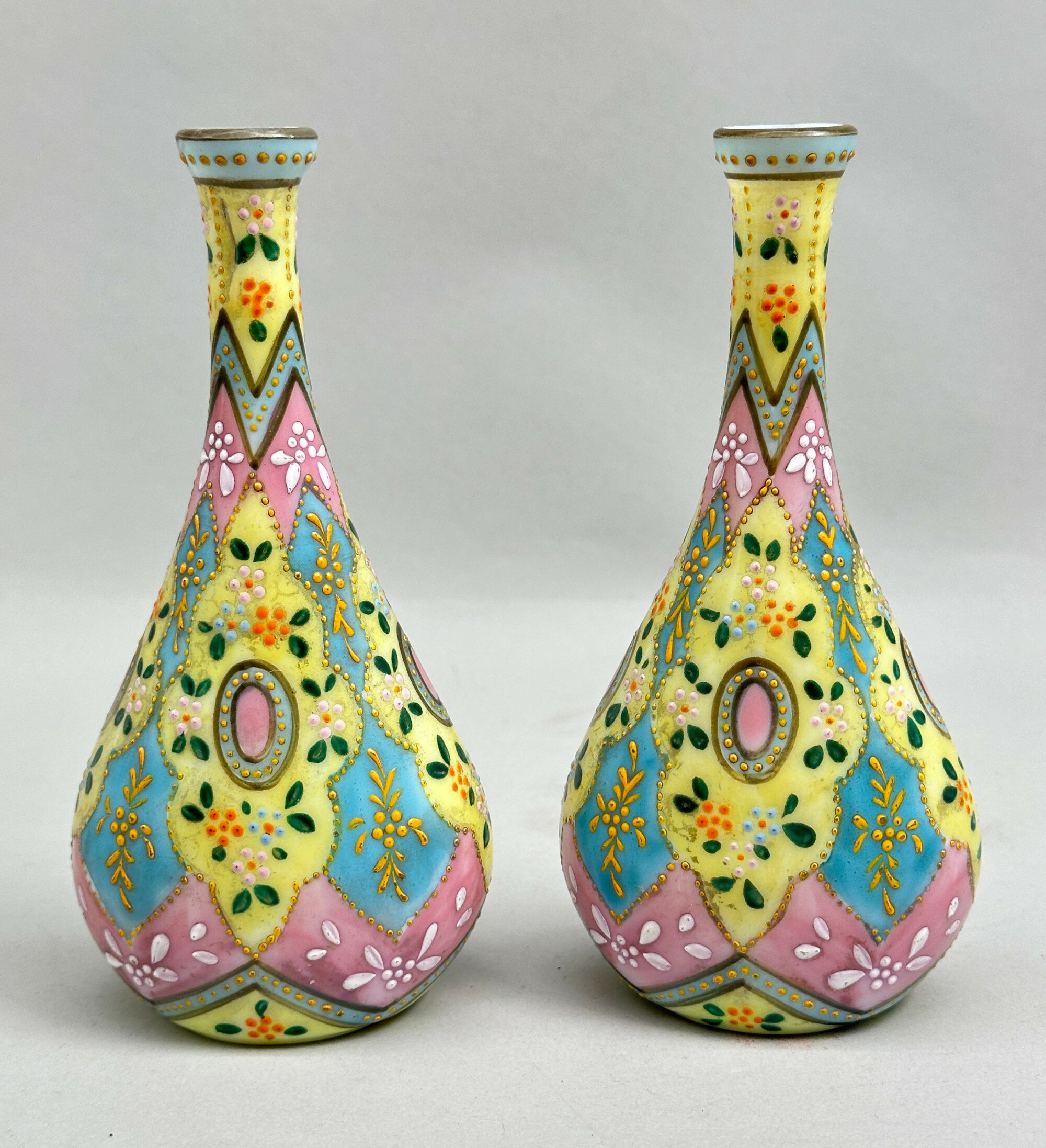
Pair of Bohemian Harrach Glass Vases, Morocco pattern, second half C19th
Price: £95The Harrach glassworks is named after Alois Raimund von Harrach (Count Harrach), on whose estate it was founded in Bohemia, in the early eighteenth century. Managed at first by one Elias Muller, the firm traded under a variety of names becoming known as Harrach in the nineteenth century and Harrachov, the name eventually given to the town where the factory was situated, in the twentieth. These opulent vases were a popular part of its range in the nineteenth century, the pattern being produced in a variety of similar shapes and always as shelf ornament pieces. The decoration here is particularly lavish with an attractive use of colour and has survived in excellent condition making these a desirable addition for collectors of Bohemian glass or admirers of nineteenth century glass style generally.
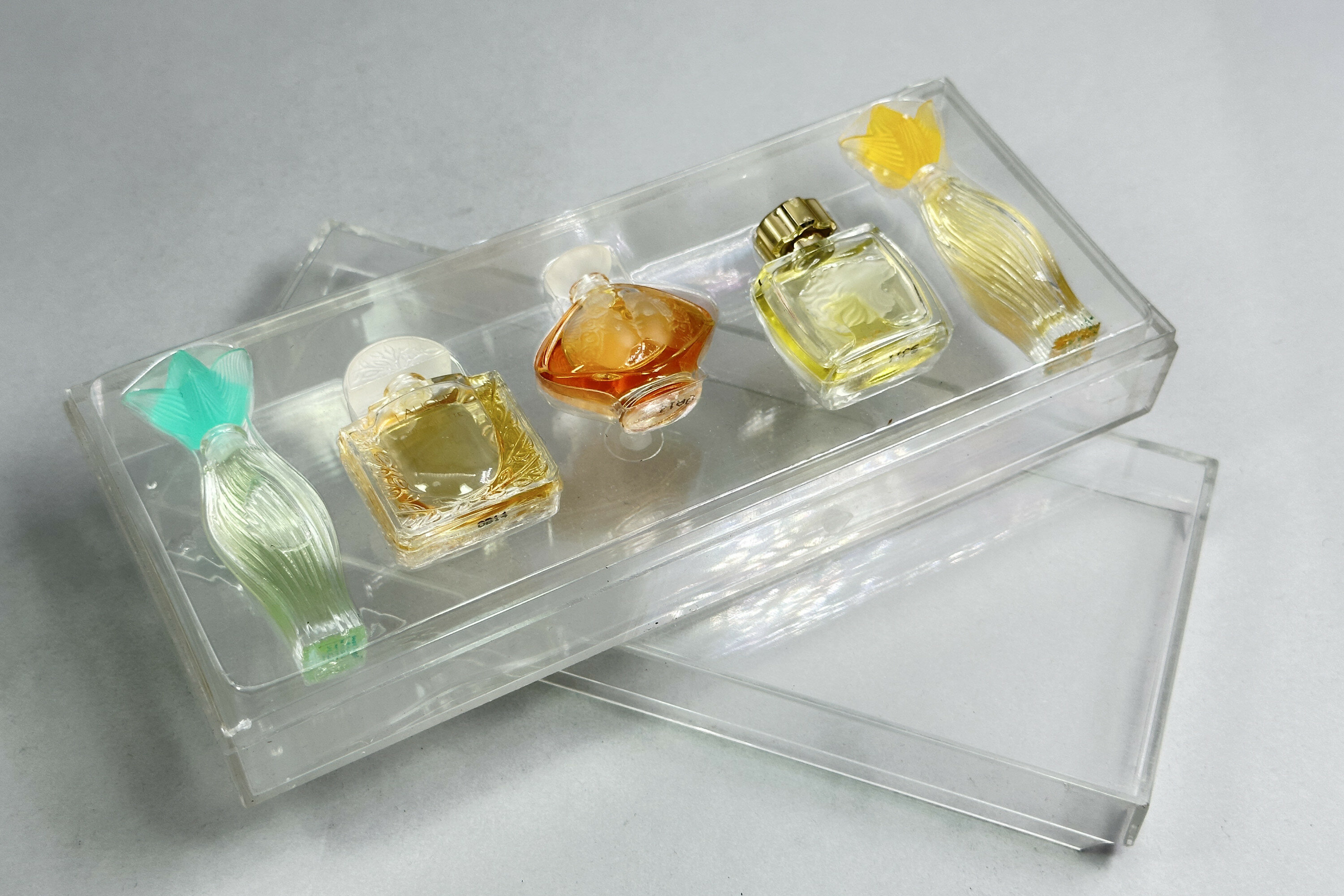
Collection Parfums Lalique miniature set in display box 1990s
Price: £55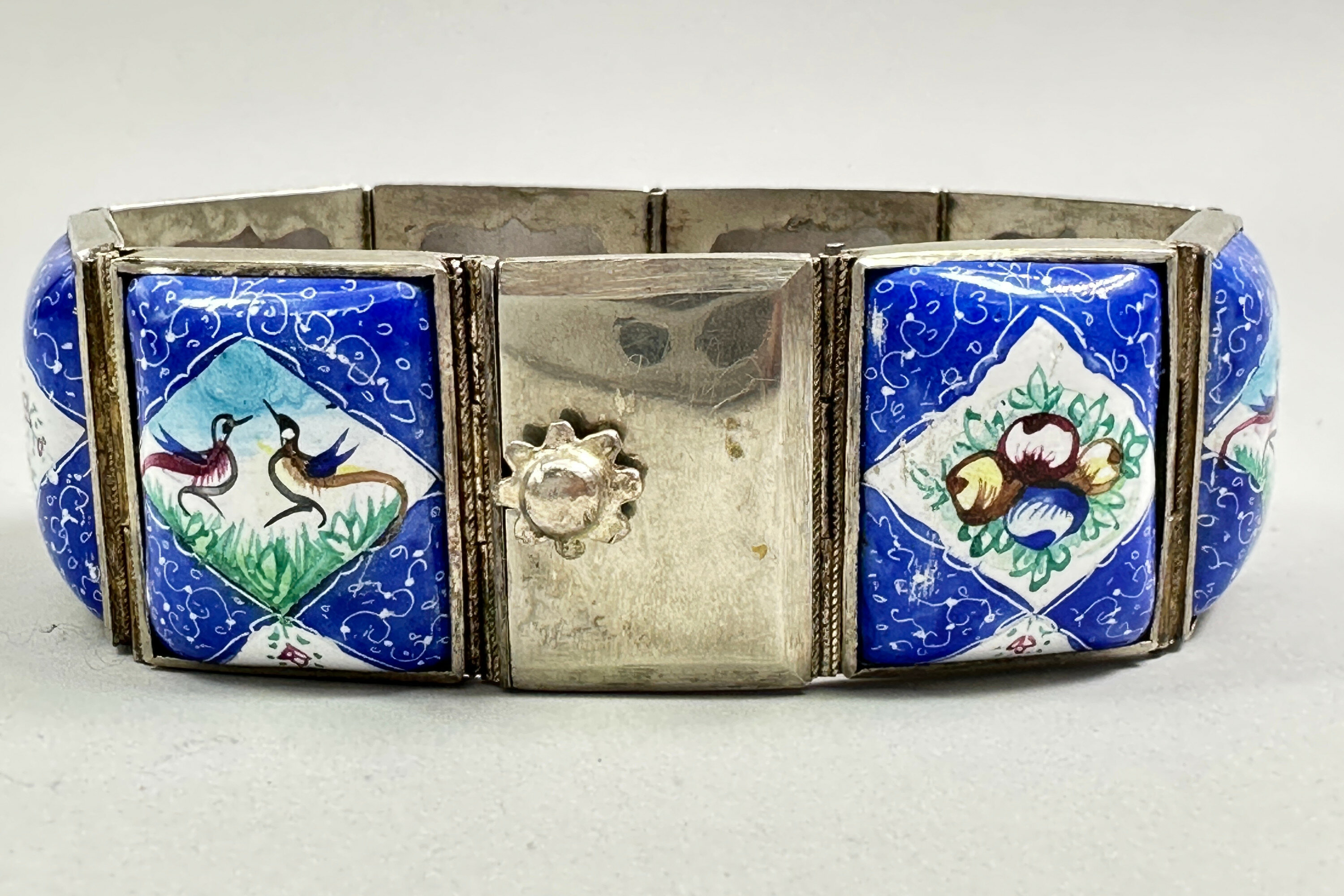
Persian silver bracelet with inset enamel plaques, c1930
Price: £125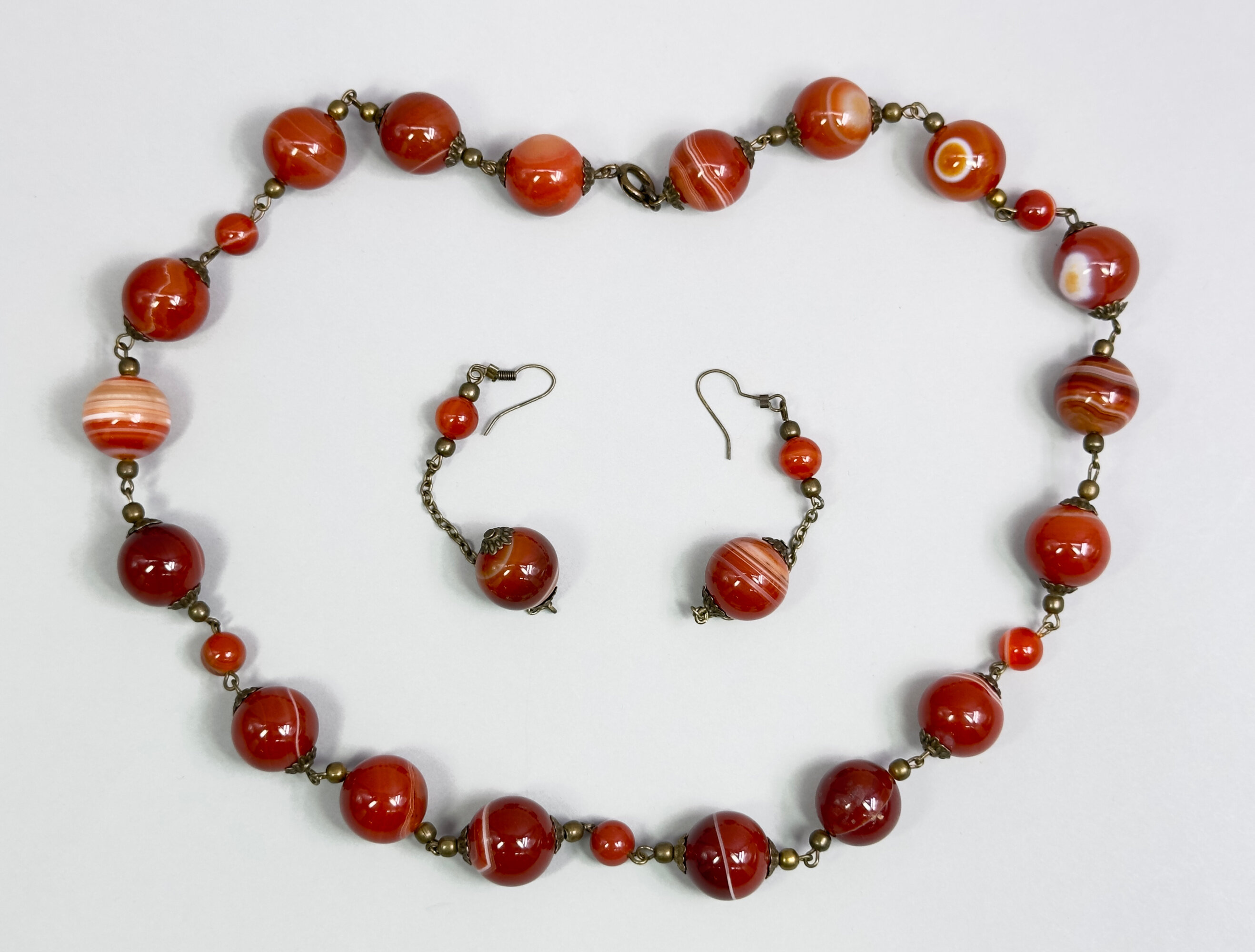
Suite of Art Deco banded carnelian necklace and earrings c1920
Price: £95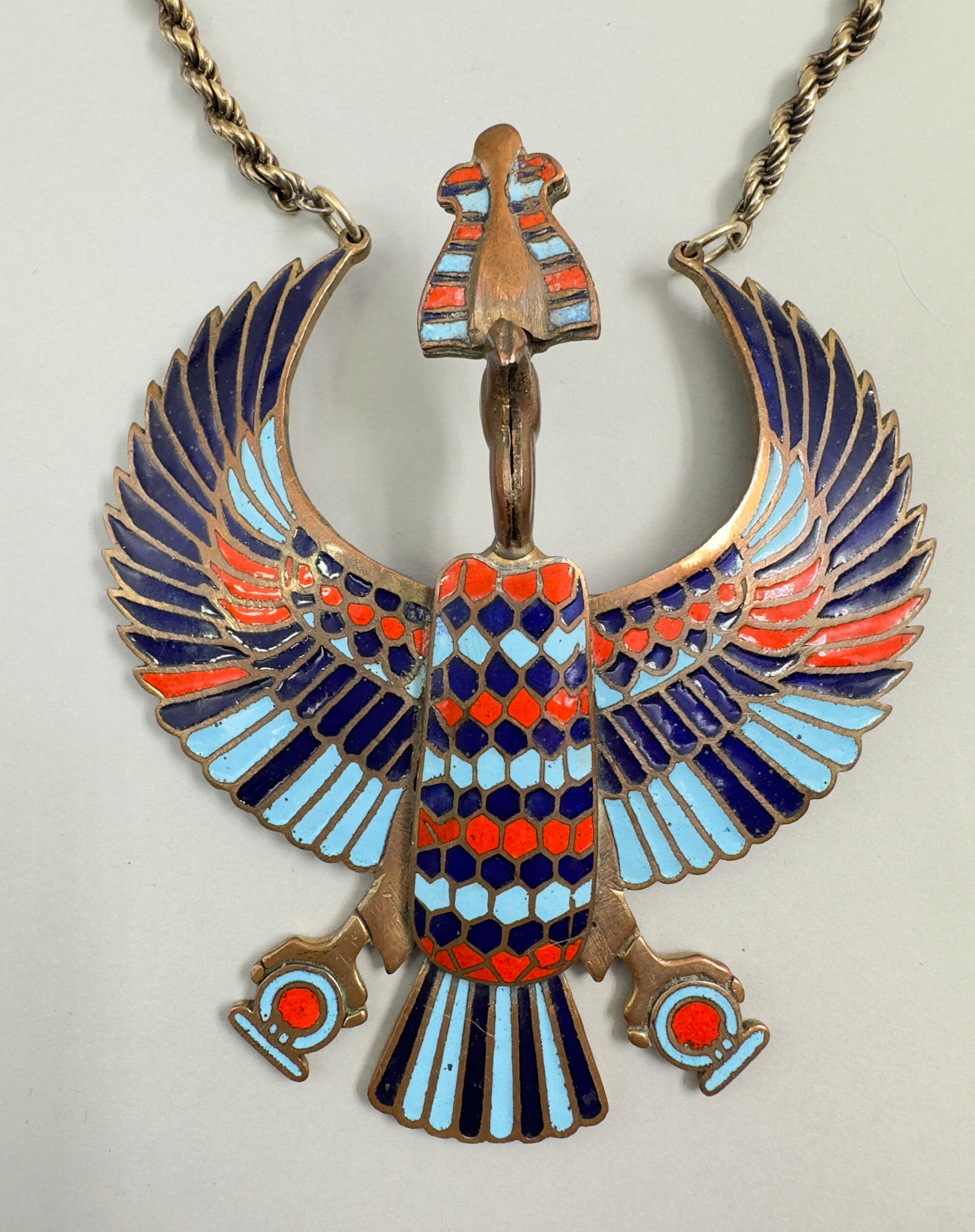
Massive Egyptian Revival long necklace c1930
Price: £195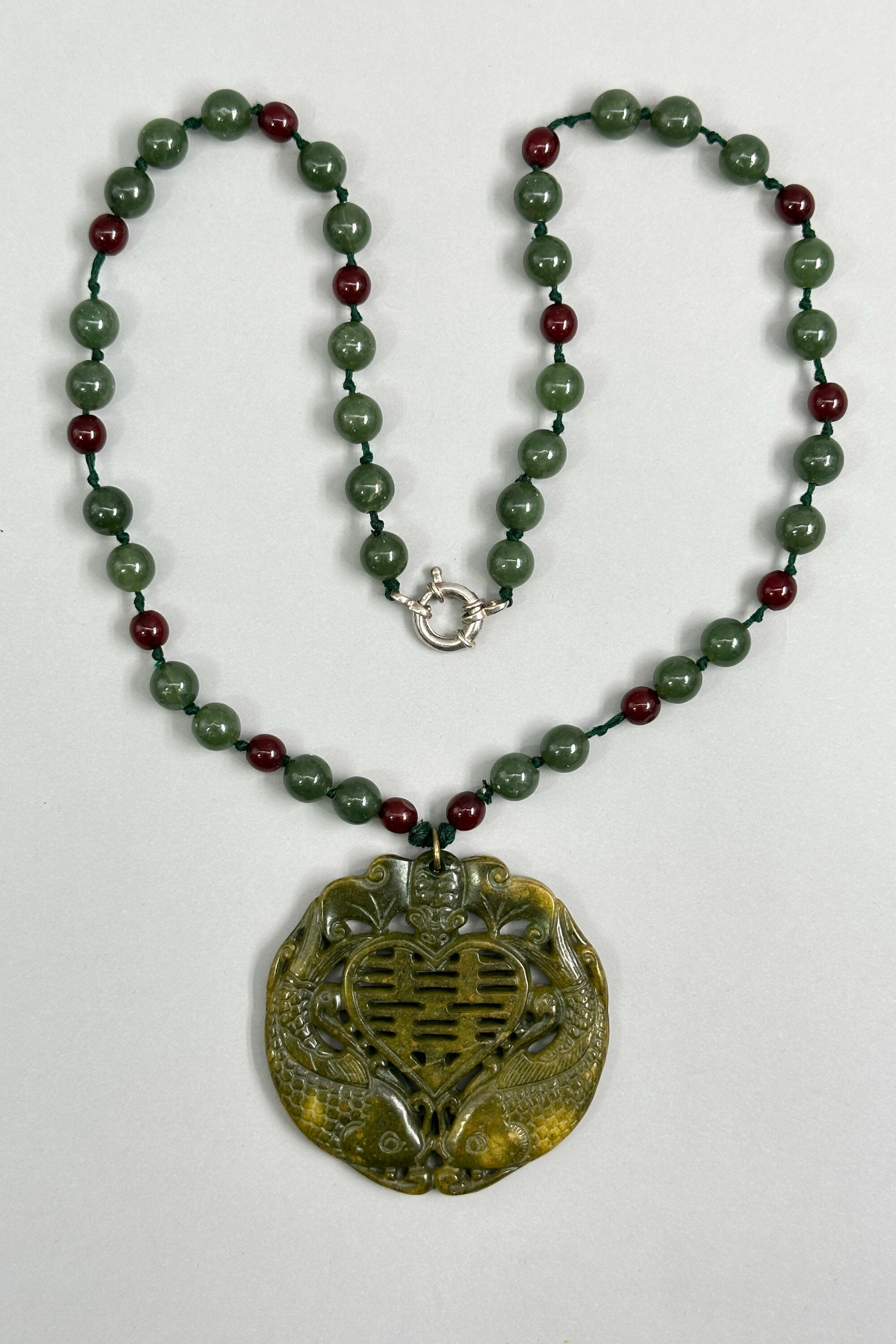
Very finely carved soapstone pendant necklace
Price: £175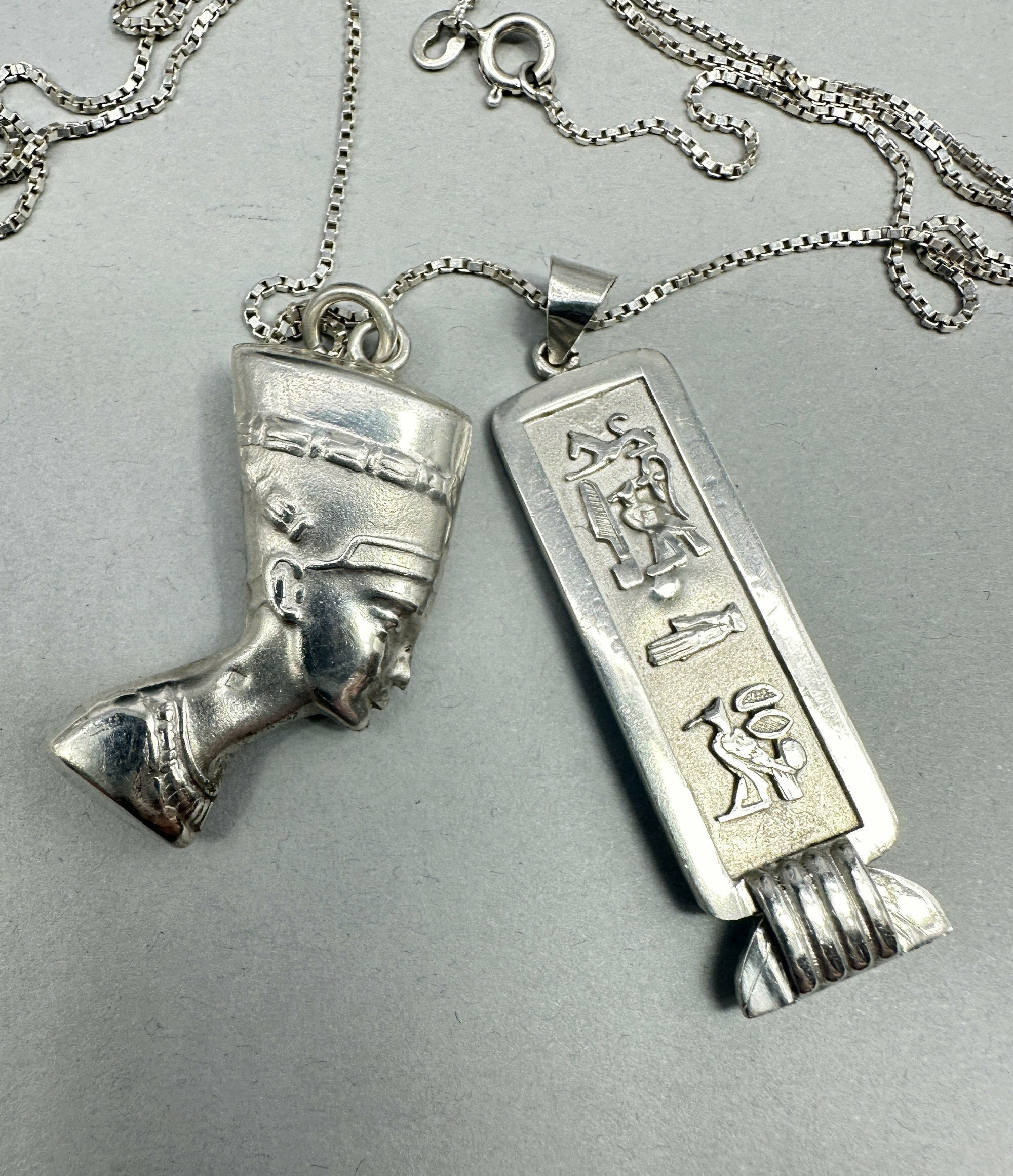
Egyptian Nefertiti and Talisman necklace on long chain c1970
Price: £95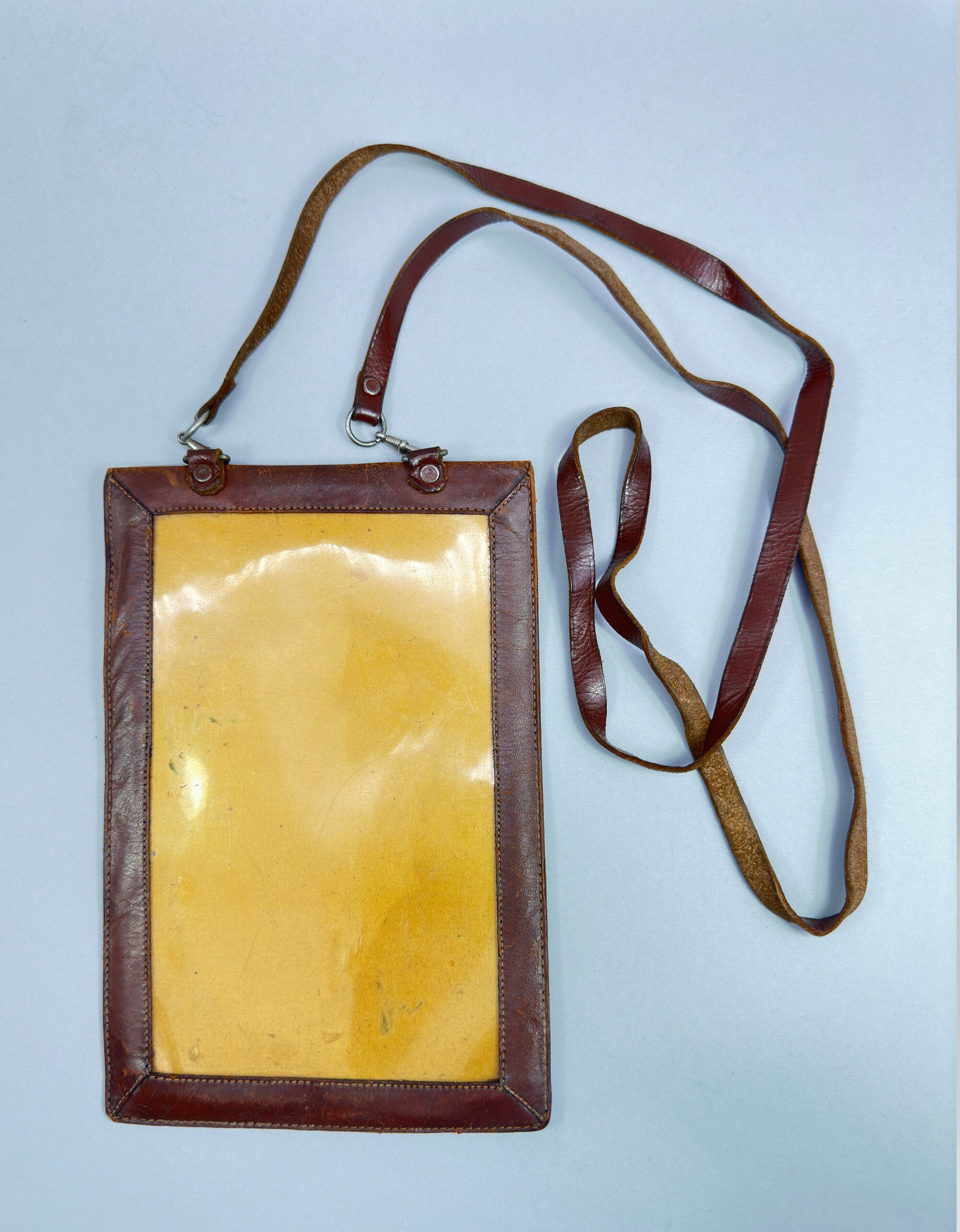
Vintage Leather Map Case, probably 1940s
Price: £45